Minecraft
description: a sandbox video game developed by Mojang Studios, where players can build and explore their own virtual worlds
105 results
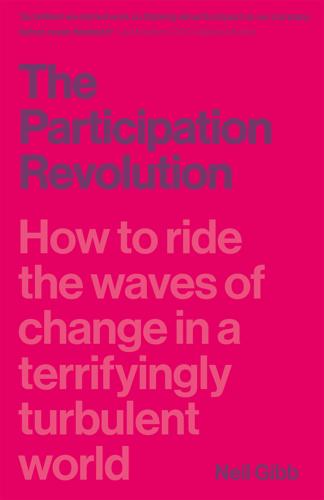
The Participation Revolution: How to Ride the Waves of Change in a Terrifyingly Turbulent World
by
Neil Gibb
Published 15 Feb 2018
In September 2012, the United Nations Settlements Program announced the launch of “block by block”, an initiative designed to encourage people to re-imagine 300 run-down public spaces across the globe using Minecraft; its first area of focus being the Kibera slum in Nairobi, Kenya. This project is something that Lisa is particularly interested in. She was trained as a designer in Taipei but wasn’t able to find any meaningful work. The UN initiative has suggested a means for her and her friends to start to use Minecraft to develop and pitch ideas for urban renewal back in Taiwan – something her network of Minecraft co-creators had started to explore. In October 2013, Minecraft received what might be the ultimate accolade. It was affectionately parodied in the American TV programme South Park.
…
Lisa was at the front desk, and when I asked her if she knew anyone who played Minecraft, her face lit up. Lisa is a hip 31-year-old from Taiwan. Like a lot of young Asian women travelling in Australia, she is wearing coloured lenses, so her eyes are a strange opaque dark blue. She has what Taiwanese call a “Loli” look – a mash-up of supermodel, princess and punkette. So she certainly doesn’t fit my stereotype of an online gamer – traditionally male, adolescent, or in a suspended state of adolescence, and either obsessed with dungeons and dragons or blowing things to pieces. But then calling Minecraft ”a game” doesn’t really do it justice. Minecraft is what in gaming terms is known as an “open world” or “sandbox”, a concept that couldn’t be more different in mindset to the high-octane and often mindless shoot-’em-up kind of games.
…
In 2009, Markus Persson, or “Notch” as he is known in the developer community, was working as a software developer in Stockholm. Minecraft started life as a side project he did in his spare time. Software development is pretty taxing on the brain, and Notch was also active on many online communities, so Minecraft had to be fitted in with a lot of other things. Its humble beginnings account for some of its simplicity. Notch was a software developer, not a designer, and he didn’t have a creative department to fall back on. The characters and world he created were therefore unashamedly rudimentary and low-res. This not only marks Minecraft out from a lot of its competitors, it also allows participants to apply a lot of imagination to it – in a similar way that kids do with simple building toys like Lego.
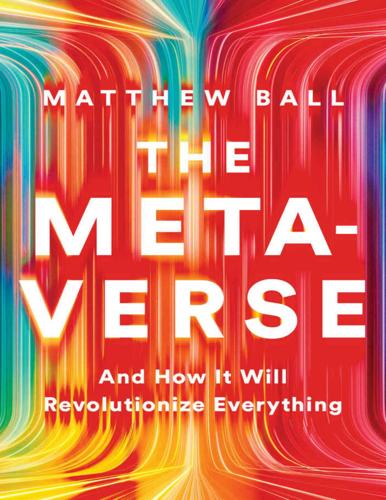
The Metaverse: And How It Will Revolutionize Everything
by
Matthew Ball
Published 18 Jul 2022
By 2009, it exceeded half a billion dollars, with users cashing out $55 million into real-world currency that year. For all the success of Second Life, it was the rise of virtual world platforms Minecraft and Roblox that brought its ideas to a mainstream audience in the 2010s. In addition to offering significant technical enhancements compared to their predecessors, Minecraft and Roblox also focused on children and teenage users, and were therefore far easier to use, rather than just offer greater capabilities. The results have been astounding. Throughout the 2010s, bands of users collaborated in Minecraft to build cities as large as Los Angeles—roughly 500 square miles. One video game streamer, Aztter, constructed a stunning cyberpunk city out of an estimated 370 million Minecraft blocks, having worked an average of 16 hours per day for a year.7 Scale is not the sole achievement of the platform.
…
One video game streamer, Aztter, constructed a stunning cyberpunk city out of an estimated 370 million Minecraft blocks, having worked an average of 16 hours per day for a year.7 Scale is not the sole achievement of the platform. In 2015, Verizon built a cellphone inside Minecraft that could make and receive live video calls to the “real world.” As the COVID-19 virus spread across China in February 2020, a community of Chinese Minecraft players rapidly re-created the 1.2-million-square-foot hospitals built in Wuhan as a tribute to the “IRL” (“in real life”) workers, receiving global press coverage.8 One month later, Reporters Sans Frontières (also known as Reporters Without Borders) commissioned the construction of a museum within Minecraft that was composed of over 12.5 million blocks assembled by 24 virtual builders in 16 different countries over some 250 hours combined.
…
Because as fast as these virtual giants are growing, the number of virtual experiences, innovators, technologies, opportunities, and developers are all growing faster. While Roblox and Minecraft are among the most popular games in the world, their reach is modest when considered in the broadest terms. These two supposed titans have 30–55 million daily active users, a fraction of the global internet population of 4.5–5 billion. In effect, they are still at the ICQ stage of virtual words; billions of users and millions of developers have yet to even try them. It’s easy to assume that Roblox or Minecraft will be the primary beneficiaries of this growth, yet history cautions us to be skeptical. When Microsoft acquired Minecraft developer Mojang in 2014, the title had sold more copies than any other game in history, and also had more monthly active users—25 million—than any AAA video game in history.
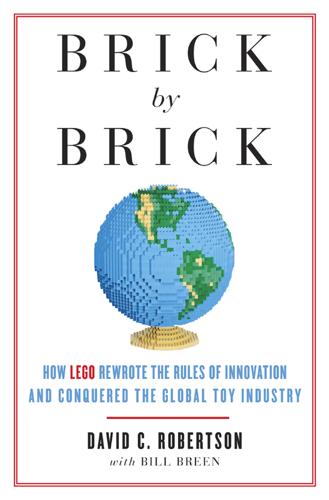
Brick by Brick: How LEGO Rewrote the Rules of Innovation and Conquered the Global Toy Industry
by
David Robertson
and
Bill Breen
Published 24 Jun 2013
Minecraft spread like World of Warcraft through the global gaming community. In January 2011, Minecraft passed one million purchases. By April 2011, Persson estimated that Minecraft had made $33 million in revenue. By August 2012, Minecraft claimed more than thirty-six million users, nearly seven million of whom had purchased the game. That translated into a sales rate of about $100 million per year for the game’s PC-based version. At the time, Minecraft was the fastest-selling game on Microsoft Xbox, and it featured an extensive catalog of merchandise, including a partner product with LEGO. With the explosion of 3-D printing tools in 2012, Minecraft moved further into LEGO territory.
…
Players had to quickly build a shelter to protect themselves, because at night monsters came out—zombies, skeletons, and (later) green “creepers.” Persson called his game Minecraft. Based on feedback from users, Persson steadily expanded Minecraft, adding new building materials, new monsters, a multiplayer capability, and the capacity for users to create “mods,” their own DIY versions of the game. He started charging for the game soon after releasing it, and steadily increased the price as the game’s features expanded and its popularity exploded. As it worked its way upmarket, Minecraft began to take on all the hallmarks of a disruptive innovation. When it launched, Minecraft was decidedly a low-end product. Its crude, blocky look and feel had none of the LEGO brick’s precision and Universe’s attempt at perfection.
…
Its crude, blocky look and feel had none of the LEGO brick’s precision and Universe’s attempt at perfection. Early on, Minecraft’s “building experience,” which involved hitting things with an axe, offered none of the brick’s limitless capacity for creative play. And the characters—zombies and creepers—were barely recognizable. But Minecraft was inexpensive. An unlimited, lifetime license for Minecraft cost just $13, which was far cheaper than a typical themed LEGO set consisting of plastic bricks and just a little more than the price tag for a month’s play on LEGO Universe. And the gameplay, where the primary goal was to escape attacks by monsters, proved addictive. Minecraft spread like World of Warcraft through the global gaming community.
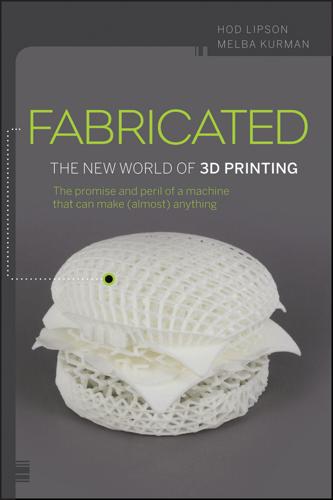
Fabricated: The New World of 3D Printing
by
Hod Lipson
and
Melba Kurman
Published 20 Nov 2012
Eric thought I might be interested in a new online world called Minecraft. “You could describe Minecraft as an 8-bit vision of the future of design for 3D printing,” Eric told me. “Millions of people play Minecraft. It’s adult LEGOs.” The reason Eric had contacted me was because he thought I might be interested in Mineways, a software tool he created. Mineways is an open source (and free of charge) software tool that enables people to edit, then 3D print what they’ve designed in Minecraft. Eric developed Mineways when he realized the rich virtual worlds people were building online in Minecraft were begging to be materialized in physical form.
…
Eager to learn more, I arranged to meet Eric so he could show me the online world of Minecraft. One of the first things I noticed in Eric’s living room were 3D printed tchotchkes scattered around. He showed me a 3D printed replica of a castle, plus a blocky, rough-hewn, gray stone house with a yellow thatch roof. The house, Eric explained, was a printed replica of a village in Minecraft. We sat down in front of a widescreen computer monitor, and Eric logged into his Minecraft account. Eric explained that Minecraft is a multiplayer game where players create an avatar and set up their own custom-designed virtual world.
…
He explained that it was a challenge to design the grasshopper’s spindly legs and antennae in such a way that they could survive the 3D printing process. In a Minecraft world, each cube-shaped building block represents the real-world equivalent volume of one cubic meter. Unlike contemporary video games that are so sleek and finely rendered they look like movies, the graphics on Minecraft, at first glance, appear crude, even primitive. Minecraft worlds are made of big, blocky chunks of raw material. Trees, houses, lakes, structures are coarsely pixelated. Each flat surface appears to be made of individual tiles. What makes Minecraft so addictive? Part of the appeal is that the visual effect is magical, the cube-shaped building blocks lend a mystical air to the cities, buildings, and fantasy worlds that people build.

Fancy Bear Goes Phishing: The Dark History of the Information Age, in Five Extraordinary Hacks
by
Scott J. Shapiro
since buying the game in 2014: “Minecraft for Windows,” Minecraft, accessed February 27, 2022, https://www.minecraft.net/en-us/store/minecraft-windows10. 55 million users play it: Tom Warren, “Minecraft Still Incredibly Popular as Sales Top 200 Million and 126 Million Play Monthly,” Verge, May 18, 2020, www.theverge.com/platform/amp/2020/5/18/21262045/minecraft-sales-monthly-players-statistics-youtube. This is up from the 100 million Warren reported in 2016: Tom Warren, “Minecraft Sales Top 100 Million,” Verge, June 2, 2016, www.theverge.com/2016/6/2/11838036/minecraft-sales-100-million. $100,000 a month: Graff, “How a Dorm Room.”
…
Because the competition between servers is so fierce, Minecraft administrators often hire DDoS services to knock rivals off-line. Others can buy DDoS tools on the web for as little as $15 or watch YouTube videos to learn how to launch these attacks themselves. By taking Minecraft servers off-line, attackers hope to poach their customers. “If you’re a player, and your favorite Minecraft server gets knocked off-line, you can switch to another server,” Robert Coelho, vice president of ProxyPipe, a San Francisco company specializing in defending Minecraft servers, explained. “But for the server operators, it’s all about maximizing the number of players and running a large, powerful server.
…
Paras was particularly drawn to the online game Minecraft. Minecraft is a video game in which players explore a world made out of pixelated blocks. Players mine these blocks for raw materials to build tools, furniture, houses, gardens, castles, even Turing Machines. The game supports single and multiplayer modes. In multiplayer mode, individuals can cooperate in teams or compete with others from all around the internet. The game is easily “modded”—that is, modifiable to generate new worlds with different rules and novel capabilities. Many players switch between Minecraft servers that host these modded games, usually for a fee.
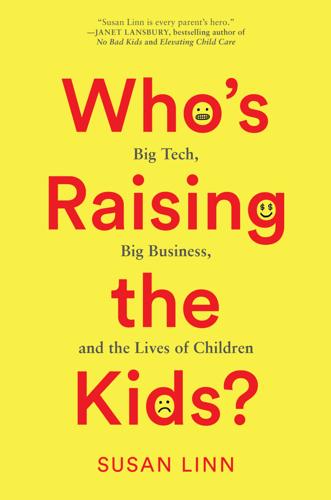
Who’s Raising the Kids?: Big Tech, Big Business, and the Lives of Children
by
Susan Linn
Published 12 Sep 2022
Freed, Medium, March 12, 2018. 63. Genxee, “7 Years Later: Minecraft $2.5B Deal Microsoft’s Most Successful Acquisition?,” Influencive, June 30, 2021, www.influencive.com/7-years-later-minecraft-2-5b-deal-microsofts-most-successful-acquisition. 64. Globe Newswire, “ThinkGeek and Mojang Build on Licensing Deal,” news release, Dow Jones Institutional News, June 15, 2011. 65. Alex Cox, “The History of Minecraft—the Best Selling PC Game Ever,” TechRadar, September 4, 2020, www.techradar.com/news/the-history-of-minecraft. 66. Sandra Fleming, “The Parents Guide to the Minecraft Marketplace,” Best Apps for Kids (blog). 67.
…
In the world of for-profit apps and video games, the sandbox game Minecraft epitomizes tech’s potential to offer children wonderfully fun, creative, and educational experiences even as its prevailing business model exploits and corrupts those same experiences. I first encountered Minecraft in March 2014, when I was preparing to participate in a panel about tech, which included a teacher who used the game in his classroom. I was charmed by it. Six months later, Microsoft bought Minecraft from its creator for $2.5 billion.63 What excited me most about Minecraft was that it was pretty much completely unstructured.
…
You could play alone or collaborate with friends online. At that point, Minecraft was by no means commercial-free—there were ever-increasing numbers of licensed products,64 including T-shirts and even a Lego set.65 I was bothered by the commercialism—which of course now seems rather quaint—but I was still intrigued by the game. Like Mark, ten-year-old Henry was thrilled to show me what Microsoft’s Minecraft is like today. He was even more thrilled when his dad said, “Let me show you what I don’t let Henry play on Minecraft,” and we were transported to a virtual multiplayer battlefield, which still looks like Minecraft—blocky landscape, blocky avatars, and all.

Hit Refresh: The Quest to Rediscover Microsoft's Soul and Imagine a Better Future for Everyone
by
Satya Nadella
,
Greg Shaw
and
Jill Tracie Nichols
Published 25 Sep 2017
Phil understood that we needed to be the most attractive platform in the world for gamers, and he knew Minecraft had a dedicated and gigantic community of players who invented and built new worlds in this virtual Lego-like video game. It’s the rare video game that is invited into the classroom, and Minecraft is not just invited but desired. Teachers love the way it encourages building, collaboration, and exploration. It’s a 3D sandbox of sorts. If the classroom curriculum calls for building a river ecosystem with marshes, Minecraft can do that. If the river needs to flow, the Minecraft logic function can make that happen. It teaches digital citizenship because it’s multiplayer.
…
Phil and his team built a great relationship with the Swedish game studio and managed to expand the Minecraft franchise to multiple devices including mobile and console. Early in Microsoft’s relationship with Mojang, before I was CEO, Phil presented an opportunity to purchase Minecraft, but Phil’s boss at the time chose not to move forward. For some, such a visible, high-level rejection could have been withering, but Phil didn’t give up. He knew that this beloved game belonged in a place where it could continue to scale up and prosper. He also knew that for Microsoft, bringing Minecraft into our ecosystem could lead to deeper engagement with the next generation of gamers.
…
Acquiring the Finnish smartphone company led to numeric growth in terms of people and revenue, but ultimately we failed to break through in the highly competitive mobile phone business. Importantly, though, we learned a lot about what it means to design, build, and manufacture hardware. Our acquisition of Sweden-based Mojang and its video game Minecraft also represented a growth mindset because it created new energy and engagement for people on our mobile and cloud technologies, and it would open new opportunities in the education software space. The story of how the Minecraft acquisition happened illustrates some of the key qualities of a growth mindset, including the readiness to empower and learn from individuals who possess insights and passion that the rest of the organization needs to learn from.
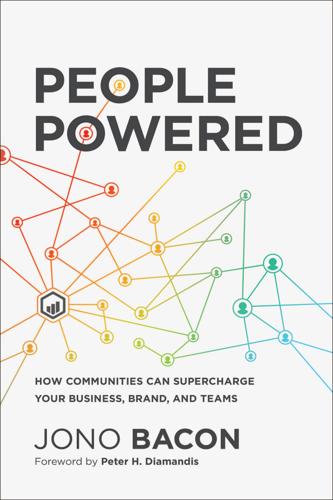
People Powered: How Communities Can Supercharge Your Business, Brand, and Teams
by
Jono Bacon
Published 12 Nov 2019
“Pebble Time—Awesome Smartwatch, No Compromises,” Kickstarter, accessed November 25, 2018, https://www.kickstarter.com/projects/getpebble/pebble-time-awesome-smartwatch-no-compromises/description; “Exploding Kittens,” Kickstarter, accessed November 25, 2018, https://www.kickstarter.com/projects/elanlee/exploding-kittens/description. 26. Haydn Taylor, “Minecraft Exceeds 90m Monthly Active Users,” Games Industry, October 2, 2018, https://www.gamesindustry.biz/articles/2018-10-02-minecraft-exceeds-90-million-monthly-active-users. 27. Minecraft Forum, accessed January 9, 2019, https://www.minecraftforum.net/forums; Minecraft Wiki, accessed January 9, 2019, https://minecraft.gamepedia.com/Minecraft_Wiki. 28. Alex Sherman, and Lora Kolodny, “IBM to Acquire Red Hat in Deal Valued at $34 Billion,” CNBC, October 28, 2018, https://www.cnbc.com/2018/10/28/ibm-to-acquire-red-hat-in-deal-valued-at-34-billion.html. 29.
…
Enthusiastic users of your product or service will often produce guides, documentation, videos, how-tos, and more, all which help to seal this education gap. Not only this, community members will often provide on-tap help and support where prospective and existing customers can ask questions and get help. For example, the game Minecraft has 90 million active monthly users.26 Many of these players learn the game and how to master it from the Minecraft Forum and Minecraft Wiki, the latter of which has more than forty-five-hundred articles, entirely produced by the community.27 If people love your product or service, and it is something that they want to master, it is ripe for this kind of content.
…
Index Abayomi, 1–3, 7, 9, 19, 35, 278 abuse of system, 158, 217, 233, 234 access, 7–8, 16–17, 54–55, 225, 226 accountability, 139, 146, 148, 149 actions, tracking, 158–59 active participation, 109 adaptability, 176–77, 268–69 Adobe, 244 advertising, 195–96 advocacy, 23–24, 49, 111 Airbnb, 57 ambiguity, 155–56 American Physical Society, 139 Amnesty International, 18 Anderson, Chris, 46, 47 Android platform, 65 Ansari XPRIZE, xviii Apache, 6, 26 Apple, 6, 58, 128 approachability, 69–70 Ardour, 44, 52, 66 Areas of Expertise, 172–75 Ariely, Dan, 17 assets, building, 68–69 assumptions, 137, 271 asynchronous access, 54 attendance, 157 attendees, summit, 247–49 audience personas, 100, 108–19 in Bacon Method, 33 choosing, 109–12 content for, 194–95 creating, 114–16 examples of, 116–19 on Incentives Map, 230–32 On-Ramp Model for, 131, 135–38 Participation Framework for, 130 prioritizing, 112–13 productive participation by, 162–67 and relatedness, 107 audience(s) access to, 7–8 assumptions about, 137 and community strategy, 13 irrational decision making by, 101–8 for local communities, 5 surprising, 73–74 understanding your, 33, 99–100 authenticity, 75, 111, 183, 224 authority, 55–56, 200–201 Author persona, 166–67 automated measuring of condition, 217–18 autonomy, 105–6, 123 awareness, 22–24, 59–61, 192 Axe Change service, 14 Axe-Fx processors, 49–50 backlog, 150–51 Bacon Method, 32–34 Bahns, Angela, 47 Bassett, Angela, 237 Battlefield, 24, 128, 228 behavioral economics, 102–4 Bell, Alexander Graham, 153 belonging, sense of, 15, 18, 20, 143, 187, 215 Bennington, Chester, 183, 184 Big Rocks, 33, 88–96 and cadence-based cycles, 168–70 in community strategy, 94–95 and critical dimensions, 157, 161 defined, 88–89 departmental alignment on, 263 examples of, 91–94 format and key components of, 89–91 and Quarterly Delivery Plan, 34, 145–46, 148, 149 realistic thinking about, 95–96 Black Lives Matter, 18 blocked (status), 147 blogs, 193, 275 Bosch, 13 brand awareness, 24, 59–60 brand recognition, 85 Branson, Richard, 190 Buffer, 214 Build Skills stage, 132, 136, 137 business cards, 241–42 buy-in, 67, 85 cadence, operating on, 34, 264–66 Cadence-Based Community Cycle, 167–70, 264 Canonical, 1, 121, 151, 167, 245 capabilities, persona, 114, 116–18 Capital One, 13 career experience, 83 CasinoCoin, 244 Casual members, 129, 140–42 advancing, 196–97 engagement with, 198–99 incentivizing, 219, 221, 226–27 maturity model for, 166 mentoring, 203 CEOs, reporting to, 260 certainty, 105 Champions model, 49–52, 63–64, 66–67, 113, 260 chat channel, 250 check-ins, 267 civility, 187 clarity, 69–72, 138–39, 234 closing party, 250 coaching, 82–83, 205–6 Coca-Cola, 57 Coffee Bean Rewards app, 145 Colbert, Stephen, 73–74 collaboration, 8–9, 74–75, 185–86 Collaborators model, 52–56, 64–67, 86, 260, see also Inner Collaborator community; Outer Collaborator community commitment, 122 communication, 121 Community Associate, 255 Community Belonging Path, 16–20 community building, 14 additional resources on, 274–76 Bacon Method of, 32–34 as chronological journey, 127–28 consultations on, 276–77 continuing to learn about, 272–74 defining your value for, 77–78 end-to-end experience in, 125–26 fundamentals of, 15–16 getting started with, 37–38, 62 key principles of, 67–74 monitoring activities related to, 206–8 risks associated with, 154–55 tools for, 8 see also successful community building community–community engagement, 157 community culture, 30–31, 70–72, 179–88 Community Director, 254–58, 260 Community Engagement Model(s), 49–67 in Bacon Method, 33–34 Champions model, 49–52 Collaborators model, 52–59 and Community Value Statement, 80 Consumers model, 45–48 importance of selecting, 43–45 and marketing/public awareness, 59–61 scenarios for selecting, 61–67 Community Evangelist, 255 community(-ies) defined, 13–15 digital, 2–3, 5–13, 237 experimenting in, 123 foundational trends in, 7–9 future of, 35, 277–79 local, 3–5 power of, 7 social dynamics of, 15–16 value generated by, 20–29 Community Launch Timeline Template, 191 Community Leadership Summit, 179, 239 community management staff, 254–61 Community Managers, 78, 125, 126, 195, 255–56, 260–61 Community Mission, 40–43, 169 Community Mission Statement, 42, 80, 113 Community On-Ramp Model, 33–34, 130–38 community overview cards, 241–42 Community Participation Framework, 128–45 building community based on, 151–52 and building engagement, 138–44 Community On-Ramp Model in, 130–38 described, 128–30 engagement strategy to move members along, 196–206 focusing on creativity and momentum in, 209 incentives and rewards in, 145 incentives on, 211–13 incentivizing transitions in, 218–22, 226–27 mentoring in, 202–6 Community Personal Scaling Curve, 184 Community Persona Maturity Model, 163–67 Community Promise, 70–71 Community Specialist, 255 community strategy, 30 Big Rocks in, 94–95 changing, 96, 208 control over and collaboration on, 74–75 Core members’ contributions to, 201 execution of, 253–54 importance of, 13 integration of, in organization, 261–68 learning from implementation of, 268–69 planning, 39 Regular members in, 143 risks with, 29–32 and SCARF model, 105–8 variability in, 30 community summits, 245–51 finalizing attendees and content for, 247–49 follow through after, 250–51 running, 249–50 structure for, 246–47 community value, 164–67 Community Value Proposition, 175 Community Value Statement, 80–88 and Big Rocks, 89, 95 in cadence-based cycle, 169 maintaining focus on, 97 and on-ramp design, 135–36 prioritizing audience personas based on, 113 updating, 83–84, 87–88 value for community members in, 80–84 value for organization in, 84–88 company–community engagement, 157 competitions, 194 complete (status), 147 CompuServe, 5 conditions, for incentives, 216–18, 230–32 Conference Checklist, 241 conferences, 194, 195, 239, 240–43 connection(s) desire for, 9 for Regular members, 200 constructive criticism, 122–23 consultations, on community building, 276–77 Consumers model, 45–48, 62–63, 260 content for community summits, 247–49 in Growth Strategy, 192–95 for launch, 189 as source of value, 82 Content Creators (persona), 110–11, 113–15 content development in Champion communities, 49–50 in Collaborator communities, 52–56 by communities, 26–27 as source of value, 82, 86–87 contests, 194 contributions, to communities, 17, 19 control over community strategy, 74–75 over Regular members, 143 co-organizing events, 239 Core members, 129, 140 advancement for, 196–97 characteristics of, 143–44 at community summits, 242 engagement with, 201–2 incentivizing, 215, 219–20, 222, 227 maturity model for, 165, 166–67 mentoring for, 203, 205 percentage of, 141 creativity, 209 critical dimensions, 156–58, 161 criticism, 122–23, 176 cross-functional communities, 88 crowdfunding, 23–24 Cruz, Ted, 73–74 culture, community, see community culture Culture Cores, 181–88 customer engagement, 20–22 customer growth, as source of value, 85 Customer Relationship Management (CRM) system, 21 Cycle Planning, 168 Cycle Reviews, 268 dashboards, 160–61 data analysis, 207, 208 Davis, Miles, 182 Debian, 6, 26 decision making irrationality of, 101–8 pragmatism about, 184 SCARF model of behavior, 104–8 System 1 and 2 thinking, 102–3 unpopular decisions, 186 decision paralysis, 38, 106 dedicated events, organizing, 239–40 delayed (status), 147 delivery commitment to, 263–64 successful, 162, 167–70 delivery, as critical dimension, 157 delivery plans, see Quarterly Delivery Plan demonstrations, 194, 244 departmental alignment, 263–64 developer community, Big Rocks for, 93–94 Developer Relations personnel, 255 Developers (persona), 111, 114, 115 Diamandis, Peter, 40 Dickinson, Emily, 211 difficulty, of condition, 217 diffusion chain, 54 Digg, 12–13 digital communities early, 5–7 evolution of, 9–13 foundational trends in, 7–9 in-person events for, 237 as local and global communities, 2–3 digital interaction, and in-person events, 251 digital training, 243–44 dignity, 17 discipline, for community building, 31 Discourse, 66, 228, 233, 267 discovery, in gamification, 233 discussion forums, 49 Disney, 128 Docker, 12, 56 documentation, 274 domain expertise, 256, 257 Dreamforce conference, 22 Drupal, 204 Early Adopter program, 189–90 Editorial Calendar, 192–95 education (about product or service) in communities, 24–25 as source of value, 82 efficiency, as critical dimension, 157 ego calibration, 234–35 empathy, 186–87 employees openness for, 182–83 training and mentoring for, 266–68 empowerment, 55–56, 222 end-to-end experience, 59, 125–26 engagement as Area of Expertise, 174 Big Rocks related to, 93–94 with community, 72 in Community On-Ramp Model, 133–34, 136, 137 and Community Participation Framework, 138–44 in Community Participation Framework, 129 at conferences, 242 critical dimensions related to, 157 customer and user, 20–22 and Growth Strategy, 192 positivity and, 185 quality of, 159 rules for engaging with community members, 119–22 and submarine incentives, 226 and understanding audience, 99–100 Engagement Strategy, 181, 196–206 engineering department, community leadership staff reporting to, 260 equal opportunity, in Collaborator communities, 55, 58–59 estimated units, on Incentives Map, 231, 232 Event Evolution Path, 238–40 Event Organizers (persona), 111, 114–15, 117–18 events in-person, see in-person events online, 193 Everett, Noah, 224 execution of community strategy, 253–54, 268 successful, 162, 167–70 expectations clear, 70–72 in gamification, 234 in great experience, 127 related to Big Rocks, 95–96 experience, of audience persona, 114, 116, 118 experimentation, 123, 171 to build organizational capabilities, 206–8 with events, 251 expertise of community leadership staff, 256, 257 of community members, 28 in digital communities, 8 as source of value, 83 Exploding Kittens game, 24 extrinsic rewards, 214, 215, 216 on Incentives Map, 231 submarine incentives for, 224–25 Facebook, 13, 24 failure, as opportunity for improvement, 151 fairness in SCARF model, 107–8 of submarine incentives, 225 Fans as audience persona, 110, 113 community model for, 44, 62–63 fears, of audience persona, 114–15, 117, 118 Fedora, 66, 264 feedback about audience personas, 116 on Big Rocks, 94–95 from communities, 72–73 and community culture, 186 from Core members, 202 on mission statement, 41 on Organizational Capabilities Maturity Model, 176 in peer-based review, 204 from Regular members, 143, 200 Figment community, 10 Final Fantasy, 128 financial commitment, and creating value, 96 Firefox, 23, 209 Fitbit, 139, 145 focus for community building, 31 on Community Value Statement, 97 follow through after community summits, 250–51 after conferences, 242–43 formal experience, 114 forums, 91–92, 158 founders, community leadership staff reporting to, 260 Four Rules for Measuring Effectively, 156–61 Fractal Audio Systems, 14–15, 49–50 freeloaders, 54 fun, in community experience, 84 gamification, 232–35 Garmin, 190 GitHub, 24 global communities, digital communities as local and, 2–3 Global Learning XPRIZE Community, 189 GNOME, 26 GNU community, 6 goals for community summit sessions, 249 of Core members, serving, 202 for employee participation with community, 267 in incentives, 214 on Incentives Map, 230–32 for new hires, 259 Google, 13, 57, 58, 65, 128 Gordon-Levitt, Dan, 11–12 Gordon-Levitt, Joseph, 11–12, 219 governance, in Inner Collaborator communities, 66 gratification, 120, 127 group dynamics, 100, 119–22 group experiences, referral halo for, 61 grow, willingness to, 257 Growth (Area of Expertise), 174 growth, as critical dimension, 157 Growth Strategy, 181, 188–96 growth plan, 192–96 launch plan, 189–91 guest speakers, 238–39 habits, building, 142, 267 HackerOne, 69–70, 194, 214 Harley Owners Group, 132 help asking community members for, 120, 144 as source of value, 82 high-level objectives, see Big Rocks hiring, 27–29, 256 hiring away approach, 258–59 HITRECORD, 11–12, 219 Hoffman, Reid, 152 HomeRecording.com community, 81 humility, 187, 257 hypothesis testing, 207–8, 271–72 IBM, 6 idealism, 153–54 IGN (Imagine Games Network), 47–48 Ikea Effect, 101–2 impact in Community Belonging Path, 18 and Engagement Strategy, 199 multiplying, with communities, 2, 3, 9 imperfections, 188 imposter syndrome, 142 inauthentic participation, 233 incentives, xvii–xviii, 197 in Community Participation Framework, 145 on Community Participation Framework, 211–13 components of, 213–18 in Growth Strategy, 196 maintaining personal touch with, 235 in Outer Collaborator communities, 65 power of offering, 213–18 stated vs. submarine, 218–27 Incentives Map, 34, 229–32 Incentive Transition Points, 218–19 stated incentives for, 221–22 submarine incentives for, 226–27 incentivization building engagement with, 140 in Community Participation Framework, 130 Incubation stage, 171, 172 independent authenticity, 111 Indiegogo, 23 individual value, 164–67 influence, psychological importance of, 71 Influencing phase (Product Success Model), 52 information in community, 121 in digital communities, 8 infrastructure, for launch, 189 Inner Collaborator community, 56–58, 65–67, 86, 229 Inner Developers (persona), 111 in-person events community summits, 245–51 conferences, 240–43 and digital training vs. training workshops, 243–45 Event Evolution Path and strategy for, 238–40 fusion of digital interactions and, 251 in Growth Strategy, 195 launch, 190–91 in local communities, 4–5 managing, 237–38 value of, 77–78 in progress (status), 147 insight, from communities, 28, 72–73 intangible value, 78–79, 83 Integration stage, 171–72 Intel, 57 intentionality, 39, 69–70, 187 Intention stage, 171, 172 internal communities, 13 Community Engagement Model for, 66–67 importance of culture for, 180 personal interaction in, 185 value of, for community members, 83 Internet, 5–7, see also digital communities Internet Explorer, 23 intrinsic rewards, 215, 224–25 involved teams, on Quarterly Delivery Plan, 147, 148 Iron Maiden, 39 Jeep, 139 Jenkins, 26 job candidates, community members as, 27–29 job descriptions, community leadership staff, 258 Jokosher, 199 jQuery, 204 Kahneman, Daniel, 102 karma (Reddit), 228 Key Initiatives, for Big Rocks, 90, 91–93 keynote addresses, 245–47 Key Performance Indicators (KPIs), 90–94 cadence-based cycles for delivery of work on, 169, 170 on Quarterly Delivery Plan, 146, 148–50 tracking progress on, 159–60, 160–61 Kickstarter, 12, 23 Kubernetes, 26, 53, 66, 134, 204 labor, community members as source of, 120 The Late Show with Stephen Colbert (television series), 73–74 launch event, 190–91 launch plan, 189–91 leaders, community, 3, 4 leadership as Area of Expertise, 174 and autonomy in organizations, 123 clear and objective, 69–70 in community culture, 186 community involvement by, 262 by Core members, 144 in Inner Collaborator communities, 66 leadership value, 165, 167 lead generation, 28–29 A League of Their Own (film), 39 learning about community building, 272–74 from community strategy implementation, 268–69 Learning phase (Product Success Model), 51 Lego, 9, 10 Lego Ideas, 10 Lenovo, 57 Leonardo da Vinci, 37 Lindbergh, Charles, xvii Linkin Park, 183 Linux, 6, 26, 273–74 Linux Foundation, 26, 74 live stream, 250 local communities decline of, 3–5 digital communities as global and, 2–3 The Long Tail (Anderson), 46 Ma, Jack, 77 Ma Jian, 125 Make:, 195 Management (Area of Expertise), 173–74 marketing, 22–24 audience personas in, 108–9 and Community Engagement Model, 59–61 as source of value, 85 marketing department, community leadership staff reporting to, 260 Mastering phase (Product Success Model), 51–52 Mattermost, 214 maturity models, 34 Community Persona Maturity Model, 163–67 Organizational Capabilities Maturity Model, 171–76 meaningful work, 9, 17–18, 27, 41 measurable condition, 217 measurable goals, 160 measurable value, in Community Persona Maturity Model, 164–65 measuring effectively, rules for, 156–61 meeting people, as source of value, 82 meetings after conferences, 242–43 with conference attendees, 241 in local communities, 4–5 Meetup.com, 133 meetups, organizing, 239 mentoring for Casual members, 142 for community-building employees, 267–68 for community leadership staff, 256 by community members, 29 in Community Participation Framework, 202–6 of new hires, 259 as source of value, 82–83 meritocracy, 55 message boards, 5–6 Metal Gear Solid, 128 Metrics (Area of Expertise), 175 Mickos, Mårten, 69–70, 74, 262 Microsoft, 6, 13, 23 Minecraft, 25 Minecraft Forum, 25 Minecraft Wiki, 25 Minimum Viable Product, 68–69 mission statements, 32, 42, 80, 113 momentum, in Engagement Strategy, 198 momentum effect, 209 in Growth Strategy, 188, 195 in marketing and brand/product awareness, 60–61 motivations for audience persona, 114, 117, 118 for community members, 119–20 Mozilla, 23 MySpace, 12–13 NAMM music show, 239 need, for community, 30 networking, 28–29, 242 New York Times, 23 Nextcloud, 134 niche interests, 45–47 Nintendo, 9, 228 norms, cultural, 70, 130, 180, 182 notification, 147, 148 not started (status), 147 objectives, see also Big Rocks objectivity, of leadership, 69–70 onboarding, 107 in Community Participation Framework, 129 Community Persona Maturity Model for members in, 164, 165–66 gamification for, 233 importance of, 130–31 in Outer Collaborator communities, 65 online events, 193 On-Ramp members, incentivizing, 218–19, 221, 226–27 openness, 182–84 open-source code, 26, 53 open-source communities, 57–58, 261 Open Source community, 10 OpenStack, 26 optimization, in Engagement Strategy, 199–200 Optimizing phase (Product Success Model), 51 organizational capabilities building, with communities, 27–29 cadence-based cycles for building, 265–66 executing strategy to build, 253–54 experimentation to build, 206–8 success in terms of building, 162, 171–76 organizational experience, of community members, 122 organizational values, and community culture, 182–88 organizations community members as labor for, 120 identifying value for, 84–88 integration of community strategy in, 261–68 internal communities at, 13 leadership and autonomy in, 123 Orteig Prize, xvii Outer Collaborator community, 56–59, 64–65, 86 Outer Developers (persona), 111–12, 136–37 Owner of Big Rocks, 90, 91 in cadence-based cycles, 168–69 on Incentives Map, 231, 232 on Quarterly Delivery Plan, 147, 148 Participant Rewards Peak, 215–16 participation active, 109 audience personas and types of, 109 by Casual members, 142 in Consumer communities, 48 inauthentic, 233 productive, 162–67 PayPal, 13, 57 Pebble Smartwatch, 23 peer-based review, 203–5 peer-review process, 55 peer support, 139–40 peer value, 164–67 Peloton, 133, 233 Penney, James Cash, 253 people person, 256–57 perfection, 268–69 performance review, community engagement in, 262 permanence, of communities, 14 personal interaction, 184–85, 199 personal touch with incentives, 235 and submarine awards, 222–26 personal validation, 120, 224–25 personas, audience, see audience personas Photoshop “Magic Minute” videos, 244 PlayStation, 233 podcasts, 194 Pop!

Coders: The Making of a New Tribe and the Remaking of the World
by
Clive Thompson
Published 26 Mar 2019
”: Jeff Atwood, “Please Don’t Learn to Code,” Coding Horror (blog), May 15, 2012, accessed August 21, 2018, https://blog.codinghorror.com/please-dont-learn-to-code/. Ian Bogost once noted: Clive Thompson, “The Minecraft Generation,” New York Times Magazine, April 14, 2016, accessed August 21, 2018, https://www.nytimes.com/2016/04/17/magazine/the-minecraft-generation.html. “around me are programmers”: Thompson, “The Minecraft Generation.” “made the game for ourselves”: Thompson, “The Minecraft Generation.” “in front of a bull’s face”: Smiley, “Can You Teach.” Index Aaron Swartz hackathon, ref1 Abbate, Janet, ref1, ref2, ref3, ref4 Abene, Mark, ref1 Abma, Jobert, ref1 Adams, John, ref1 Addiction by Design (Schüll), ref1 addictive behavior, as side effect of optimization, ref1 Adler, Mortimer J., ref1 Adobe, ref1 advertising, ref1, ref2 African American coders.
…
If you click this switch and that switch, a light turns on; turn that lever or that lever, and a door opens. (These are AND gates and OR gates, and in fact you can use Minecraft to build many of the main forms of logic you see in coding and microchips.) So these kids start building mechanisms of ridiculous complexity—complex doors, little traps that get triggered when you walk by—then showing them off to friends and posting videos of them online. Minecraft, these kids found, was a world where being able to build cool things out of logic was fun and made them impressive to the outside world. For these kids, Minecraft wasn’t just a game. It was this generation’s “personal computer,” their Commodore 64, as my friend the philosopher and game designer Ian Bogost once noted.
…
People learn to wield logic and think like a machine not merely because that activity itself is fun but because they’re trying—as Papert realized—to create something other people will find awesome. So while Minecraft may be a surprisingly powerful on-ramp for coding, it only has that power because the game is fun and cool. (The creators of Minecraft itself never intended for it to be remotely educational, nor did they intend to make it a way to learn logic. “We have never done things with that sort of intent,” as Jens Bergensten, the lead Minecraft developer, told me. “We always made the game for ourselves.”) The same is likely true of Neopets: Its creators didn’t think, Hey, we’re making something that will give rise to a whole generation of front-end developers.

You've Been Played: How Corporations, Governments, and Schools Use Games to Control Us All
by
Adrian Hon
Published 14 Sep 2022
In an interview, the directors noted that while teenagers were increasingly able to lead political movements in the real world, simulations help them understand how to wield the complementary mechanisms and levers of the political process in a safe environment.5 Teenagers are also gaining civic literacy from a very different game: Minecraft. Technology writer Clive Thompson suggested to me that Minecraft is less interesting as a way to teach maths or programming than it is as a simulation for kids to invent miniconstitutions that stop each other from blowing up their creations on shared servers.6 Seth Frey, assistant professor at UC Davis, watched Minecraft players learning how to negotiate the joint use and care of natural resources: “You’ve got these kids, and they’re creating these worlds, and they think they’re just playing a game, but they have to solve some of the hardest problems facing humanity.
…
David Carnoy, “Palm m515 Review,” CNET, September 22, 2002, www.cnet.com/reviews/palm-m515-p80809us-review. 5. Sean Fennessey and Amanda Dobbins, “The Movie of the Year Is Here: ‘Boys State,’” The Ringer, August 17, 2020, www.theringer.com/2020/8/17/21372227/the-movie-of-the-year-is-here-boys-state. 6. Clive Thompson, “The Minecraft Generation,” New York Times, April 14, 2016, www.nytimes.com/2016/04/17/magazine/the-minecraft-generation.html. 7. “Gather | A better way to meet online,” Gather, Gather Presence, accessed November 28, 2021, https://gather.town. 8. “Roguelike Celebration 2021 Was Held on October 17–18, 2021,” Roguelike Celebration, accessed November 28, 2021, https://roguelike.club. 9.
…
Not long after he wrote these words, educational board games grew into a flourishing transatlantic market, teaching everything from geography and history to maths and astronomy.1 These games were enabled by technological advancements of a different kind that made the manufacturing and publishing of board games much cheaper than before. Locke might have admired educational board games, but he’d have loved educational video games like SimCity and Minecraft that can teach urban planning and architecture and programming. Only by learning the history of how games have been used for purposes beyond entertainment can we understand how gamification has taken such a large role in our lives, and how it might come to dominate the world. There is still some debate in the games industry and among academics as to what precisely constitutes gamification, and it’s easy to get mired in definitional quicksand involving related terms like exploitationware, the “gameful world,” and ludification.
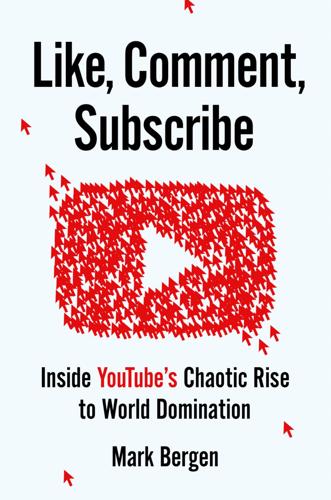
Like, Comment, Subscribe: Inside YouTube's Chaotic Rise to World Domination
by
Mark Bergen
Published 5 Sep 2022
Also, when the company wanted to, it went in and turned the dials. Consider Minecraft. After the watch-time transition, YouTube’s audience clearly loved Minecraft, heaving the niche game into the mainstream. At one point, in May 2015, fourteen slots on YouTube’s logged-out home page—the version of its site for people not signed in with Google accounts—were devoted to Minecraft game play, according to a meticulous video from the YouTuber MatPat. By June, MatPat counted seven slots for Minecraft. By September, Minecraft disappeared. This sparked a theory in YouTubeland that some company suit, outraged by the abundance of Minecraft, ordered up the change.
…
GO TO NOTE REFERENCE IN TEXT Chapter 26: Reinforce an American cleric: Martin Evans, Nicola Harley, and Harry Yorke, “London Terrorist Had Twice Been Referred to Police Over His Extremist Views,” The Telegraph, June 4, 2017, https://www.telegraph.co.uk/news/2017/06/04/london-terrorist-had-twice-referred-police-extremist-views/. GO TO NOTE REFERENCE IN TEXT abundance of Minecraft: Another data point in this theory: Microsoft, Google’s rival, bought the Minecraft studio in 2014 for $2.5 billion. GO TO NOTE REFERENCE IN TEXT researcher described Reinforce: Kevin Roose, “The Making of a YouTube Radical,” The New York Times, June 8, 2019, https://www.nytimes.com/interactive/2019/06/08/technology/youtube-radical.html.
…
That novelty had birthed an entire creative industry, a stable of performers, personalities, artists, influencers, instructors, and franchises, a new media as revolutionary as radio and TV, all in just a few short years. YouTube made everyone broadcasters. YouTube has given us “Gangnam Style,” Charlie biting a finger, “Baby Shark,” It’s Friday, Friday, gotta get down on Friday. Yoga with Adriene, lunch doodles with Mo, professional Minecraft players. A diverse sea of enormous talent old media had ignored or overlooked. Thousands of microcelebrities you might not know, but millions of young fans certainly do, watching with a fervor they never show for movie or TV stars. YouTube was formed in the same stretch as a crop of flashy consumer internet upstarts, and has outlasted nearly all of them, except Facebook.

Wonderland: How Play Made the Modern World
by
Steven Johnson
Published 15 Nov 2016
The global reach of games is even more pronounced in virtual gameplay. Consider the epic success of Minecraft, an immense online universe populated by players logging in from around the world. In the case of Minecraft, of course, the world of the game itself—and the rules that govern it—are being created by that multinational community of players, in the form of mods and servers programmed and hosted by Minecraft fans. McLuhan coined the term “global village” as a metaphor for the electronic age, but if you watch a grade-schooler constructing a virtual town in Minecraft with the help of players from around the world, the phrase starts to sound more literal.
…
Thanks to Franco Moretti for introducing me to the kleptomaniacs of Paris more than two decades ago. And thanks to Jay Haynes, Annie Keating, Alex Ross, and Eric Liftin for so many conversations about music and the mind over the years. Finally, a word of gratitude to my sons—Clay, Rowan, and Dean—for keeping me in touch with the gaming world, from Minecraft to H1Z1, from Kingdom Builder to Far Cry. I love and respect the energy and creative spirit that you bring to your life in games. Now it’s time to turn off the computer and go read a book. July 2016 Marin County, California NOTES Introduction “Every household was plentifully supplied”: William Stearns Davis, ed., Readings in Ancient History: Illustrative Extracts from the Sources, 2 vols.
…
See also technology Deep Blue, 193–94 digital simulations that trigger emotions, 184–85 Expensive Planetarium, 217–18 and games, 230–31 global collaboration, 201–202, 217–20 Hingham Institute, 215–16 IBM, 193–94, 227–28, 230, 280 “low-rent” vs. “high-rent” product development, 220 Minecraft, 201 networks of the early 1990s, 170 PDP-1, 215–16 for purposes of non-scientific pursuits, 219–20 Claude Shannon, 221–26, 223 software, development of, 215–19 Spacewar! 216–20, 218 “Spacewar: Fanatic Life and Symbolic Death Among the Computer Bums,” 219–20 Edward Thorp, 221–27 Turing Test, 227 Type 20 Precision CRT, 215–16, 218 Watson, 228–30 wearable computers, 221, 225–26 Conflagration of Moscow, The, 164–66 Conroy, David, 241 Constantine the African, 134 Cooperstown, New York, 199–200 Copland, Aaron, 97 Cortés, Hernan, 213 cotton appealing texture of, 26–28 British East India Company, 28 “Calico Madams,” 28 chintz and calico, vivid colors of, 26–27, 27 described by John Mandeville, 26 economic fears regarding the import of, 28–29 European desire for, 29–31 importing from India, 26, 28 inventions to aid in the production of fabric, 29, 30 slavery to produce, 34–36 Cox, James, 14 criminology physiological causes vs. environmental causes, 47–48 Cristofori, Bartolomeo, 88 cultural diversity in modern times, 274–76 Darrow, Charles, 198–99 Darwin, Charles, 269–70 Das Kapital (Marx), 153–54 De Coitu (Constantine the African), 134 Defoe, Daniel, 24, 28 Dell, Michael, 216 demand for cotton fabrics, 29–31, 34–36 “desire of Novelties,” 30–31 for experiencing the world through exotic spices, 137–38 for new experiences and surprises, 61 for rubber, 214 democratizing force of fashion, 38–40 department stores as alternatives to chapels and cathedrals, 43–44 Au Bonheur des Dames (Zola), 43–44 Le Bon Marché, 41–46, 45 commercial profitability of wandering shoppers, 41–44 credit, extending, 44 “department-store disease,” 47 haggling, elimination of, 44 influence of Aristide Boucicaut, 40, 41–42, 48–49 origins of, 41 sensory overload and disorientation, 41–42 shoplifting, 46–49 De Smet, Pieter, 137 Devil’s Milk, The (Tully), 214 Devlin, Keith, 208–209 Diamond, Jared, 141, 143 dice astragali, 205–206, 208–209 and probability, 206–207, 209 to speed up the game of chess, 203 standardized design of, 209 Dickens, Charles, 163 Digital Revolution artistic origins of the, 83 Spacewar!

Hit Makers: The Science of Popularity in an Age of Distraction
by
Derek Thompson
Published 7 Feb 2017
most popular video game of all time: “About Tetris,” Tetris.com, http://tetris.com/about-tetris/. second bestselling game of all time: Tom Huddleston, Jr., “Minecraft Has Now Sold More Than 100 Million Copies,” Fortune, June 2, 2016, www.fortune.com/2016/06/02/minecraft-sold-100-million/. Minecraft, where users build shapes: Clive Thompson, “The Minecraft Generation,” New York Times Magazine, April 14, 2016, www.nytimes.com/2016/04/17/magazine/the-minecraft-generation.html. an “achievable challenge”: Joshua A. Krisch, “Why the 2048 Game Is So Addictive,” Popular Mechanics, April 3, 2014, www.popularmechanics.com/culture/gaming/a10341/why-the-2048-game-is-so-addictive-16659899/.
…
Many novels and mystery stories may be analogous to falling puzzle pieces clicking into place, but Tetris is explicitly just that. The second bestselling game of all time is Minecraft, where users build shapes and virtual worlds from digital bricks. Minecraft is a kind of cultural inheritor to Lego, which was itself an “heir to the heritage of playing with blocks,” as tech journalist Clive Thompson wrote. But whereas Lego sets often come with a detailed set of precise instructions, Minecraft is more open-ended. The most popular games for smartphones, where the level of play must be simple enough to execute with a stray thumb, are often puzzles, too, including 2048 and Candy Crush.
…
J., 110 marketing and fashion, 49, 134 of Fifty Shades of Grey, 202–3 importance of, 8 information as, 82 necessity of, 62 in politics, 40 resistance to, 57 marriage equality, 128–29 The Martian (2015), 238 Martin, Max, 75, 76 mass production, 48, 49 A Matter of Taste (Lieberson), 136–37, 322n135, 323n135 MAYA (Most Advanced Yet Acceptable), 47–48, 56, 59, 70–71, 286–87 McGraw, Peter, 146 Mean Girls (2004), 170n meaning, desire for, 15, 57 Meeker, Mary, 12 memory, 86, 99–100 Mendelsohn, Nicola, 273 Mendelsund, Peter, 98 Messitte, Anne, 197–99, 200, 202–3, 205 metacognition, 42 Metcalfe’s law, 220 Miller, Dave, 164 Millet, Jean-François, 312n22 Minecraft, 58–59 mobile technology, 11–12, 67 Model T cars, 48, 133 Mona Lisa (Leonardo da Vinci), 168–69 Monet, Claude and art dealer, 251–52 and Caillebotte’s bequest, 22, 23, 24, 312n22 Caillebotte’s friendship with, 21 fame of, 19–20, 27 selling works of, 26 Moonies, 217, 217n Moore’s law, 290, 333n289 Morisot, Berthe, 312n22 Morse, Samuel, 151 Morton, Mary, 26 Mosseri, Adam, 268, 270 movies and Hollywood, 103–6 and Academy Awards, 126–27 animated films, 110–11 apocalypse genre of, 112–13 and audiences, 107, 113–14, 127–28, 291 and best seller lists, 237 and chaos, 177 as complex products, 177, 178–180 distribution of success in, 177–78 double standards in, 127–28 and emergence of television, 297 and familiarity, 181–82 franchise strategy in, 7, 181–82 gender bias in, 123–28, 321n126 globalization of, 182 and high-concept pitches, 61 international consumption of, 291 lack of diversity in, 123–28, 129–130, 321n126 and merchandising, 294 predicting successes in, 237–38 and promotional expenses, 181 rules for storytelling in, 111, 113–14 studio system of, 181 suspense genre of, 112 and television, 10–11, 290, 297 and ticket sales, 10, 11, 181, 182 multiplier effects of hits, 240–41, 245 Munoz, Joe, 222 Murdoch, Rupert, 115n, 233, 235 museums, 32–33, 41 music and Billboard, 80–82, 134, 166, 175, 176–77, 238 and chaos mitigation, 180–81 collaborative filtering in, 69–70 digital revolution in, 289–290 distribution of, 33–34 and earworms, 79–80 elemental role of, in civilization, 85–86 finding new, 68–70 habituation/dishabituation in, 82–85 hip-hop/rap music, 81–82 and hooks, 3–4, 76, 79, 80, 82 and Kotecha, 73–76 and language, 85–86 and Leslie, 301–5 and memory, 85–86 and music labels, 175n, 304–5 and neophobia, 68 and Pandora, 67–68 and phonographs, 289 pop music, 33, 59–60, 73–77, 80–85, 90–91, 176–77 preference for familiar in, 79 quality/catchiness of, 34–37, 76–77, 80, 142 and radio stations, 180–81 rankings in, 205–6 repetition in, 77–80, 82, 83–85, 283 and rhyme-as-reason effect, 92–94 “Rock Around the Clock” (Bill Haley and His Comets), 163–67 rock ’n’ roll, 175–77 rules in, 85 and song-testing operations, 35–36, 37, 142 and speech-to-song illusion, 77–79 and Spotify, 68–70 structure in, 3–4, 76, 84–85 and Swedish music industry, 75–76 and technology, 13–14 and vinyl records, 13, 292 Muth, Claudia, 57 MySpace, 151, 152 myths and myth-busting, 130–31 name choices, 135–37, 139–142, 152–53, 322–23n135 Nast, Condé, 46 neophilia/neophobia, 7, 48–49, 56, 68, 138–39, 160 Netflix, 130 networks, importance of understanding, 8, 305 newness, optimal, 60–61, 61 news and journalism, 253–275 and aggregators, 265–66 and aspiration-behavior gap, 271–72, 272n and Facebook, 267–275 and familiarity/surprise in, 65 and Gallup, 258–261, 267, 275 and golden age of reading, 255 and Internet, 265–66, 291, 292 and measuring readership, 257–58, 259–261 myths and falsehoods in, 130–31 new economic model in, 292 news alerts, 65 objective of, 253 and power of press, 130–31 and reader preferences, 253–54, 257–58, 264, 267–273 repetition in, 64–65 and smaller papers, 256–57 and social media, 266 and syndication of news, 257 and tabloids, 255–56 and television, 262, 264–65, 273, 290 Newton, Nigel, 233 New York City, 47 New Yorker magazine, 272 New York Times, 157, 196 Nielsen, 33, 81 Nineteenth Amendment, 92 Ninth Symphony (Beethoven), 4 Nixon, Richard, 38 nostalgia, 100 novelty, 60–61, 61 Obama, Barack, 86–91 Obergefell v.
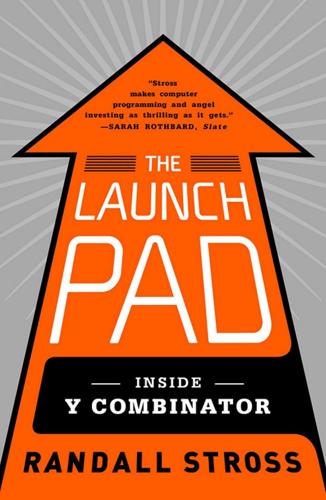
The Launch Pad: Inside Y Combinator, Silicon Valley's Most Exclusive School for Startups
by
Randall Stross
Published 4 Sep 2013
Kalvin Wang, “The Difference Between Jason Shen and Jason Shen.com,” Tech & Do-Goodery blog, February 22, 2011, http://kalv.in/the-difference-between-jason-shen-and-jasonshen-com/. 11. http://apps.facebook.com/graffitiwall. 12. For samples of some extraordinary Minecraft art, such as a rendering of the Taj Mahal, see David Thomas, “How the Creator of Minecraft Developed a Monster Hit,” Wired, December 2011, www.wired.com/magazine/2011/11/st_alphageek_minecraft/. 13. HT, “I’m a Partner at Y Combinator.” Asked what is “the hardest part” of his position at YC, HT said reading the applications, which was “draining in a way I’ve never experienced before.” Giving each application his full attention, while reading hundreds, “just fries my brain.”
…
This would never be possible if users had to download and install software each time the program was tweaked, but because it will be a Web-based game played inside the browser, the code can be changed at any time without imposing any inconvenience upon the users. All three founders are concerned about the competition for talent that will be set off once Demo Day is past and the summer batch’s companies start to hire. Their recruiting should be helped, they figure, by being able to point to the success of Minecraft, the building game. Minecraft was created by only one person, Markus Persson of Sweden, and its graphics are not as sophisticated as Graffiti World’s will be. Persson has made more than $50 million in a single year. Kantor remembers noticing the game just after it had been introduced, when it had only about one hundred users.
…
Other than having Kantor minding the sponsor queue, Graffiti, the app, does not require much attention. Rather than endowing Graffiti with more features, the three want to embark upon a related, but new, venture, which is why they have come to YC. They are working on Graffiti World, which combines digital Legos and the social aspects of the building game Minecraft.12 Graffiti World’s users will be invited to submit drawings of objects, which other users will use to build scenes, their own Graffiti Worlds. Much coding needs to be done before it will be ready for a beta release, however. Kantor and Tim Suzman live in an apartment in the Russian Hill neighborhood of San Francisco and their front room serves as the company’s office.
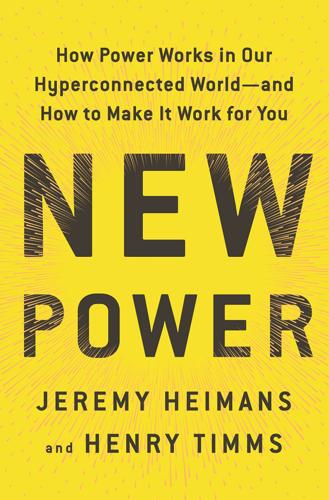
New Power: How Power Works in Our Hyperconnected World--And How to Make It Work for You
by
Jeremy Heimans
and
Henry Timms
Published 2 Apr 2018
To grasp the essential difference between old and new power models, think of the difference between the two biggest computer games of all time, Tetris and Minecraft. You will likely remember the block-based game Tetris, which exploded with the Gameboy craze of the 1990s. The way it worked was simple. Blocks fell down from the top of the screen and the player’s job was to make them fit into neat regular lines. They came down faster and faster until the player was eventually overwhelmed. In old power fashion, the player had a limited role, and you could never beat the system. New power models work more like Minecraft, now the second biggest game of all time. Like Tetris, it is a clunky block-based game.
…
It relies entirely on participatory energy. In the world of Minecraft, you will find houses, temples, and Walmarts; dragons, caves, boats, farms, and roller coasters; working computers made by engineers; forest fires, dungeons, cinemas, chickens, and stadiums. The players set their rules and create their own tasks. There is no “manual”; players learn from the example—and often the homemade videos—of others. Some players (known as “modders”) are even entrusted with the capacity to alter the game itself. Without the actions of the players, Minecraft is a wasteland. A key dynamic in the world today is the mutual incomprehension between those raised in the Tetris tradition and those with a Minecraft mindset.
…
: Rita Katz, “The State Department’s Twitter War with ISIS Is Embarrassing,” Time, September 16, 2014. A popular thread: Reddit, “90’s Kids, What’s Something You Did When You Were in School That Youths of Today Wouldn’t Understand?,” Reddit, June 15, 2015. www.reddit.com. New power models work more like Minecraft: Matt Peckham, “ ‘Minecraft’ Is Now the Second Best-Selling Game of All Time,” Time, June 2, 2016. He retweeted his most extreme: Taylor Wafford, “Donald Trump Retweets Racist Propaganda,” Newsweek, November 23, 2015. He offered to pay: Alan Rappeport, “Donald Trump Says He May Pay Legal Fees of Accused Attacker from Rally,” New York Times, March 13, 2016.
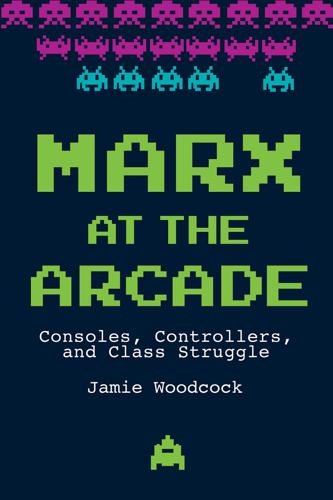
Marx at the Arcade: Consoles, Controllers, and Class Struggle
by
Jamie Woodcock
Published 17 Jun 2019
c=y. 46Quoted in Keith Stuart, “Richard Bartle: We Invented Multiplayer Games as a Political Gesture,” Guardian, November 17, 2014, http://www.theguardian.com/technology/2014/nov/17/richard-bartle-multiplayer-games-political-gesture. 47Stuart, “Richard Bartle.” 48Quoted in Stuart, “Richard Bartle.” 49Stephen Kline, Nick Dyer-Witheford, and Greig de Peuter, Digital Play: The Interaction of Technology, Culture, and Marketing (Montreal and Kingston: McGill-Queen’s University Press, 2003), 96. 50“Video Game History Timeline.” 51Dyer-Witheford and de Peuter, Games of Empire, 13. 52Daniel Joseph, “Code of Conduct: Platforms Are Taking over Capitalism, but Code Convenes Class Struggle as Well as Control,” Real Life, April 12, 2017, http://reallifemag.com/code-of-conduct. 53Dyer-Witheford and de Peuter, Games of Empire, 13. 54Mary Aitken, The Cyber Effect: A Pioneering Cyberpsychologist Explains How Human Behaviour Changes Online (London: John Murray, 2016). 55Drew Robarge, “From Landfill to Smithsonian Collections: ‘E.T. the Extra-Terrestrial’ Atari 2600 Game,” Smithsonian, December 15, 2014, http://americanhistory.si.edu/blog/landfill-smithsonian-collections-et-extra-terrestrial-atari-2600-game. 56Dyer-Witheford and de Peuter, Games of Empire, 14. 57Dyer-Witheford and de Peuter, Games of Empire, 14. 58Dyer-Witheford and de Peuter, Games of Empire, 15. 59Dal Yong Jin, Korea’s Online Gaming Empire (Cambridge, MA: MIT Press, 2010). 60Dyer-Witheford and de Peuter, Games of Empire, 16. 61Nintendo, “Historical Data: Consolidated Sales Transition by Region,” last modified October 26, 2017, https://web.archive.org/web/20171026163943/https://www.nintendo.co.jp/ir/finance/historical_data/xls/consolidated_sales_e1703.xlsx. 62Joseph, “Code of Conduct.” 63Nintendo, “Historical Data.” 64Emily Gera, “This Is How Tetris Wants You to Celebrate for Its 30th Anniversary,” Polygon, May 21, 2014, www.polygon.com/2014/5/21/5737488/tetris-turns-30-alexey-pajitnov. 65“Yearly Market Report,” Famitsu Weekly, June 21, 1996. 66Nintendo, “Historical Data.” 67“Video Game History Timeline.” 68Sony Computer Entertainment, “PlayStation Cumulative Production Shipments of Hardware,” May 24, 2011, https://web.archive.org/web/20110524023857/http://www.scei.co.jp/corporate/data/bizdataps_e.html. 69Nintendo, “Historical Data.” 70“Video Game History Timeline.” 71Dyer-Witheford and de Peuter, Games of Empire, 20. 72Sony Computer Entertainment, “PlayStation 2 Worldwide Hardware Unit Sales,” November 1, 2013, https://web.archive.org/web/20131101120621/http://www.scei.co.jp/corporate/data/bizdataps2_sale_e.html. 73Nintendo, “Historical Data.” 74Colin Moriarty, “Vita Sales Are Picking Up Thanks to PS4 Remote Play,” IGN, November 17, 2014, http://uk.ign.com/articles/2014/11/17/vita-sales-are-picking-up-thanks-to-ps4-remote-play. 75Xbox.com, “Gamers Catch Their Breath as Xbox 360 and Xbox Live Reinvent Next-Generation Gaming,” May 10, 2006, https://web.archive.org/web/20070709062832/http://www.xbox.com/zh-SG/community/news/2006/20060510.htm. 76Eddie Makuch, “E3 2014: $399 Xbox One Out Now, Xbox 360 Sales Rise to 84 million,” GameSpot, June 9, 2014, https://web.archive.org/web/20141013194652/http://www.gamespot.com/articles/e3-2014-399-xbox-one-out-now-xbox-360-sales-rise-to-84-million/1100-6420231/. 77“Video Game History Timeline.” 78Sony Computer Entertainment, “Q4 FY2014 Consolidated Financial Results Forecast (Three Months Ended March 31, 2015),” April 30, 2015, www.sony.net/SonyInfo/IR/financial/fr/14q4_sonypre.pdf. 79Nintendo, “Historical Data.” 80“Video Game History Timeline.” 81“Video Game History Timeline.” 82Nintendo, “Historical Data.” 83“Dedicated Video Game Sales Units,” Nintendo, January 31, 2018, www.nintendo.co.jp/ir/en/finance/hard_soft/index.html. 84Aernout, “Minecraft Sales Reach 144 Million Across all Platforms; 74 Million Monthly Players,” Wccftech, January 22, 2018, https://wccftech.com/minecraft-sales-144-million/. 85Eugene Kim, “Amazon Buys Twitch for $970 Million in Cash,” Business Insider, August 25, 2014, www.businessinsider.com/amazon-buys-twitch-2014-8. 86Craig Smith, “50 Interesting Fortnite Stats and Facts (November 2018) by the Numbers,” DMR, November 17, 2018, https://expandedramblings.com/index.php/fortnite-facts-and-statistics/.
…
Nintendo launched the Wii U, which sold 14 million units, relatively few in comparison to the handheld 3DS, which sold 53 million units.82 The Switch, a hybrid of mobile and home consoles, was launched later, selling 18 million in one year alone.83 While these console battles raged, PC gaming entered a new phase. The independently developed (indie) game Minecraft sold an astonishing 144 million copies (across multiple platforms, with a high of 74 million monthly players), and the developer was purchased by Microsoft for $2.5 billion.84 The crowdfunding platform Kickstarter provided a new way for developers to raise money for games, shifting the business model of many titles.
…
That first major shift in dominance, from the US to Japanese companies (something I discussed in my historical overview of videogames), has now been followed by a second shift that is seeing Chinese companies becoming increasingly dominant on the world level.33 In keeping with that trend, Bungie (the American studio that developed Destiny for Activision) announced that it was working on a new title with NetEase, raising $100 million for development. NetEase had previously published Minecraft and Blizzard’s games in China but is now replacing US companies in terms of funding studios.34 THE VIDEOGAME AS A COMMODITY The importance of publishing in the industry must be understood in relation to the role of the videogame as commodity. Our erstwhile quest giver in Syndicate, Karl Marx, had this to say about commodities: A commodity is, in the first place, an object outside us, a thing that by its properties satisfies human wants of some sort or another.
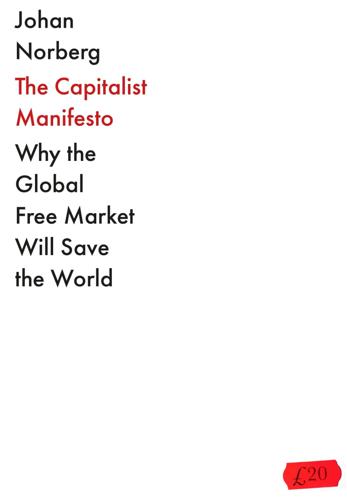
The Capitalist Manifesto
by
Johan Norberg
Published 14 Jun 2023
Hardback ISBN: 978 1 83895 789 6 Trade paperback ISBN: 978 1 83895 790 2 E-book ISBN: 978 1 83895 791 9 Printed in Great Britain Atlantic Books An imprint of Atlantic Books Ltd Ormond House 26–27 Boswell Street London WC1N 3JZ www.atlantic-books.co.uk To classical liberals of all parties CONTENTS Preface: What happened to Reagan and Thatcher? 1. Life under savage capitalism 2. At each other’s service 3. The silence of the factory whistle 4. In defence of the 1 per cent 5. Monopoly or Minecraft? 6. Picking losers 7. China, paper tiger 8. But what about the planet? 9. The meaning of life Epilogue: The Emperor’s singing contest Notes Index Preface WHAT HAPPENED TO REAGAN AND THATCHER? ‘No one is particularly keen on globalization now, except possibly Johan Norberg.’ PO TIDHOLM, SWEDISH PUBLIC RADIO, 29 MAY 2020 Twenty years ago I wrote a book in defence of global capitalism.
…
Socialism for capitalists is no better than other forms of socialism, and few reforms could be more important than once again making capitalism a system of profit and loss. The market-liberal logic is merciless: either a business is competitive and so does not need support, or it is not competitive and so doesn’t deserve support. 5 MONOPOLY OR MINECRAFT? ‘If you care about democracy, you need to break up the monopolies. If you care about the economy, same thing.’ TUCKER CARLSON Alright, you might object, perhaps there are examples of entrepreneurs who become super-rich by working hard to give consumers the goods and services they have been longing for.
…
Rossi-Hansberg and Hsieh refer to it as an ‘industrial revolution in services’.6 These are not some lazy monopolists who are slowing down the economy (although there are some like that). These are creative entrepreneurs who increase the pace so much that others do not keep up. It is not ‘monopoly capitalism’, where one gains by simply taking up more and more limited space and taking more of people’s pay cheques.7 It is rather Minecraft capitalism, an open environment, where other players are not primarily opponents but partners, where you extract and collect resources, acquire ever better tools and, on your own or with others, stack blocks to build increasingly ingenious constructions, and in that way make the whole game more beautiful, interesting and exciting for others.

SuperBetter: The Power of Living Gamefully
by
Jane McGonigal
Published 14 Sep 2015
“It’s very important to me, especially now that she’s a teenager, that we keep playing together. It helps keep the lines of communication open.” Antonio’s daughter Julia had just turned thirteen, and her new favorite game was Minecraft, the Lego-like building universe where players gather resources to architect whatever they can imagine. Monsters roam the Minecraft world, requiring players to build safe rooms and craft armor to protect themselves. Apparently Minecraft was giving Julia a new way to think about real-life problems—and a way to talk to her dad about them. “Just last week I was dropping Julia off at school, and she really didn’t want to go in.
…
The purpose: “I’m staying fit even when I’m busy, plus I’m helping my whole family be physically active, which is important to me.” Joshua, 13, Edmonton, Alberta, Canada The game: “My favorite game is Minecraft.” The benefit: “I get to be creative. I can make whatever I can imagine!” The purpose: “When I have to be creative for school projects, I never draw a blank. I’m good at thinking up new things to make because I practice all the time in Minecraft.” Now it’s your turn. Choose a game, find the benefit, and connect it to a purpose. Quest complete: Were you able to complete the three steps? If so, well done. You’re starting to realize the powerful strengths and skills you’re building when you play—and knowing your strengths is the first and most important step toward using them in daily life.
…
It’s been rough on her. “It’s not something she usually talks to me about—she’d rather talk to her mom about that stuff. But when we pulled up at school last week, she turned to me and said, ‘Dad, you know what I can do? I can put my armor on.’ I knew what she meant immediately. When she puts on her armor in Minecraft, the monsters, the lava, all the bad stuff—it can’t hurt her. “I told her that was a great way to think about it. ‘You’re going to put on your diamond armor today, and it won’t matter what anyone says to you. It’ll bounce right off you.’ And she said, ‘Yep,’ and smiled, and hopped out of the car.

Dawn of the New Everything: Encounters With Reality and Virtual Reality
by
Jaron Lanier
Published 21 Nov 2017
Generation Xers seem a little more addicted to their social media feeds than millennials,7 and kids seem to get bored faster by the endless foliation of self-similar vanities. Minecraft would please my younger self especially. If you haven’t seen it, it’s a whimsical, blocky-looking virtual world, originally seen on PC screens, which is constantly redesigned and reprogrammed by the people who use it. One of the most popular digital designs ever for children. Microsoft bought the company that makes Minecraft, and I got to work with the Minecraft crew on tweaking it for VR release. I tested designs with my nine-year-old daughter and her friends, and the word has to be “ecstatic.”
…
How do I even begin? A former nun, rosy and boisterous, a figure from a Manet canvas, Ann had become obsessed with the potential of computers in education. She started the Learning Company, which sold Warren Robinett’s seminal programming game Rocky’s Boots. It was the progenitor of builder games like Minecraft. Her hope was that we’d get VR tools to kids and transform teaching, math most of all. Another remarkable programmer, a candidate for one of the best ever, was Bill Alessi. He had previously been at HP, where he was known as their resident code demon. He aspired to be a music star, and had the looks and talent to get there.
…
In the first phase the software is written or tweaked, while in the other it is run. Programmers take code back and forth; tweak it again, run it again. The two-phase nature of software is practically universal. In a given moment a programmer either is writing a particular piece of software or observing it run. (It is true that there are “builder” games like Minecraft in which you can change a lot while you’re also playing, but there is typically a limit to how much change can occur before you have to switch to the caterpillar mode to make deeper changes.) But this feels inadequate for VR. VR doesn’t run in an external box, like your smartphone. You’re in it.
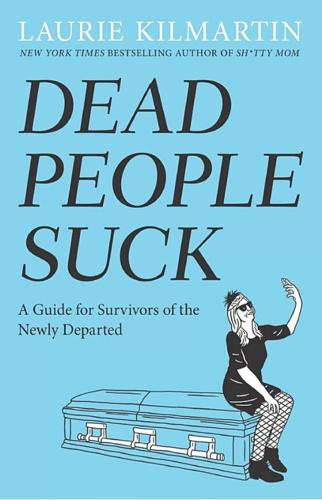
Dead People Suck: A Guide for Survivors of the Newly Departed
by
Laurie Kilmartin
Published 13 Feb 2018
They got down to business immediately. Three riflemen fired seven times. I considered pushing my mom in front of them (so convenient, as we were already at a cemetery) but they were shooting blanks. Then the bugler stepped forward. Nothing wrecks a room like taps on a bugle. Tough guys weep, kids stop playing Minecraft. I wouldn’t be surprised to find out that military buglers have a post-funeral hookup rate of 100 percent. OTHER PEOPLE WHO SHOULD PLAY TAPS Those 24 lonesome notes are so powerful, they should be used more often. THERAPISTS: How much faster will your patients recover if you can skip the initial 5 to 10 minutes of evasive chitchat?
…
When they get caught, they burst into preplanned tears, saying, “I’m looking at YouTube because I miss Grandpa!” When kids are crying, it’s never for the same reason you are. HOW I GOT MY KID TO STOP BEGGING ME FOR MY IPHONE AT DAD’S FUNERAL SON: Mom, how did Grandpa get lung cancer? ME: Well, he quit a long time ago, but for many, many years, Grandpa played Minecraft. OTHER THINGS YOUR KID IS UPSET ABOUT THAT AREN’T THE DEATH OF YOUR LOVED ONE •Your loved one died during the summer—your kid didn’t miss any school. •Your loved one died during the winter break—your kid didn’t miss any school, but he did miss some vacation. •Your loved one died during the school year, but lived nearby—your kid only got to miss one day of school.
…
It seems implausible, but in 2003, so did a telephone that could film movies. Figure it out. This is more than a sentimental plea from a grieving daughter. This is an appeal to your business side. To get that sweet VC money, you need to prove there’s a market. Well, here’s some stats. Dead people can’t download apps. Dead people can’t create Minecraft worlds. Dead people can’t find horny strangers in a nearby public bathroom for anonymous gay sex. Corpses aren’t customers. Delaying every user’s death should be the nerd’s top priority. WE MUST SHAME SMART PEOPLE One hundred fifty years ago, every Irish family had one kid who became a priest.
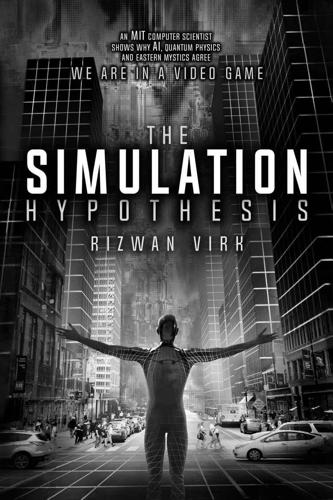
The Simulation Hypothesis
by
Rizwan Virk
Published 31 Mar 2019
Is an object really just a model that happens to be printed using certain materials we find in nature? In the “real” world, we take materials such as wood, stone, and metals and then cut up those objects and assemble them into new objects in the real world. A virtual version of this process can be seen at work in a different kind of virtual world: the game Minecraft, which has become extremely popular with youngsters. In Minecraft, the player mines different materials and then uses those building blocks to build content in the simulated world. Could objects in our physical world really be the result of a type of 3D printing that relies on some model of the object and some set of instructions?
…
This is defined as a persistent world that changes based upon what players do. This is the information stored on the “server”; there could be multiple versions of the world hosted on different servers, each with different states. This is what creates persistence of objects in virtual worlds like Second Life (and, more recently, Minecraft), even after individual players have logged out. Of course, this persistence is an illusion; it lasts only as long as the information about the game world on the server is saved and doesn’t change. Multiple Online Players. An MMORPG has simultaneous players who can play with each other by logging into the same “persistent world.”
…
But it’s not a major leap to realize that as this technology improves, we will be able to print smaller and smaller dots, perhaps getting to the point of printing individual atoms and molecules. At first glance, 3D printers might appear to have nothing to do with video games, yet in fact the modeling techniques developed for video games are the same models that are used by 3D printers, and once again we see physical objects being reduced to digital information. A table created in Minecraft or Second Life (or the fictional OASIS) consists of digital information that is rendered using the basic building blocks of the game (pixels), which persists inside the virtual world as long as the world is running. Can we say any more of the physical world around us? Nature as a 3D Printer of Biological Material One thing we haven’t been able to print (yet) are organic materials, which contain carbon, the basic building block of life.
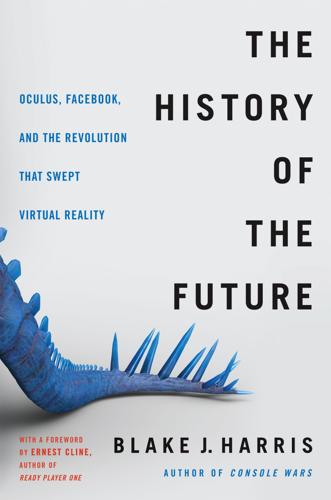
The History of the Future: Oculus, Facebook, and the Revolution That Swept Virtual Reality
by
Blake J. Harris
Published 19 Feb 2019
Throughout the month, the excitement for Oculus continued—eventually surpassing $2 million on Kickstarter with pledges from over nine thousand supporters (including heavy hitters like Minecraft creator Markus “Notch” Persson, who backed the guys to the tune of $10,000). On the heels of that momentum, Meteor Entertainment and Adhesive Games—whose almost complete mech shooter Hawken was headed to PCs in December—announced that they’d be porting an iteration of the game to work with the Rift.1 Now, in addition to Doom 3 BFG, there’d be another game ready to go when the headsets shipped in December. And it looked like there might even be a third: a new game from Notch—a space-themed follow-up to Minecraft—who the guys had managed to track down at Seattle’s Penny Arcade Expo.
…
Because the knee-jerk reaction from people with absolutely no skin in the game is so strong. Besides, it probably would just get lost in the shuffle; the media only really cares about amplifying negative reactions. Just look at the Notch thing.” The “Notch thing” was a reference to comments made earlier that day by Minecraft creator Markus “Notch” Persson. “We were in talks about maybe bringing a version of Minecraft to Oculus,” Notch had tweeted. “[But] I just cancelled that deal. Facebook creeps me out.” Notch then elaborated on this in a lengthy blog post, stating that “Facebook is not a company of grass-roots tech enthusiasts. Facebook is not a game tech company.
…
“It would be hard for the CEO of a sailboat company to be enthusiastic and genuine if they always got seasick whenever they went out, but Brendan is in exactly that position. My Minecraft work is a good example. By its very nature, it is terrible from a comfort position . . . Regardless, I have played more hours in it than any other VR experience except Cinema. Brendan suggested there might be a better “Made for VR Minecraft” that was stationary and third person, like the HoloLens demo. This was frightening to hear, because it showed just how wide the gulf was between our views of what a great VR game should be.”

Augmented: Life in the Smart Lane
by
Brett King
Published 5 May 2016
No one in the working space he was hanging out at today worked regular hours, some got paid, some were studying, some were here every day, others might just be there for a few hours and then go off to find some new space. Work was a much more fluid concept to Matt and his friends. A good analogy for Matt’s generation was environments like Minecraft, which had become hugely popular in the early 2010s. Minecraft was part game, part puzzle, part coding problem; Matt had learned some basic Java when he was ten just so he could code up a mod for some of his friends who were in a Minecraft mob. Hacking together cloud-based servers, setting up local instances of dev platforms and pushing code and AR models out to other teams working around the world was a pretty basic skill set to these guys.
…
That’s how strong IBM’s branding around “PC” became back then. 7 At the History of Science auction held at Bonhams New York on 22nd October 2014, one of the 50 original Apple-I computers (and one of only about 15 or so that are operational) was sold to The Henry Ford for a staggering US$905,000. 8 Cisco—Internet of Things (IoT) 9 Minecraft is a trademark owned by Mojang/Microsoft. 10 Globally, the term ECG is most common in which the Greek word for “heart” cardia or kardia is central to the acronym (elektro-cardia-graph, literally “electric-heart-writing”). The US common usage is EKG, using the original Greek spelling term rather than the English transliteration (cardio). 11 R.W.
…
Interestingly, Stephenson also described an entire industry built around the business of avatars and the Metaverse, including designers who can fashion a body, clothes and even facial expressions for your virtual persona. Today, the term “avatar” describes any virtual representation of a user in the digital realm. From Steve and his buddies in Minecraft to characters in Halo, the Guardians in Destiny and avatars in virtual worlds like Second Life. However, the development in computer animation to depict virtual characters in parallel can also be seen as contributing to the possible futures of interaction. Figure 7.3: Aki Ross, a computer-generated human analog actor in Final Fantasy (Credit: Square Pictures) From Woody in Toy Story through to James Cameron’s Avatar, the development of computer character animation has evolved into a multi-billion dollar segment of the software industry.
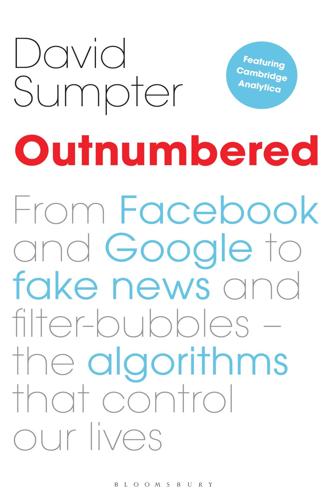
Outnumbered: From Facebook and Google to Fake News and Filter-Bubbles – the Algorithms That Control Our Lives
by
David Sumpter
Published 18 Jun 2018
The table providing some of the predictive ‘likes’ in Michal and his colleagues’ scientific article is a list of painfully embarrassing stereotypes.1 In 2010/11, when the study was carried out, gay males liked Sue Sylvester from the TV show Glee, Adam Lambert from American Idol and supported various human rights campaigns. Straight men liked Foot Locker, Wu-Tang Clan, the X Games and Bruce Lee. People with only a few friends liked the computer game Minecraft, hard rock music and ‘walking with your friend and randomly pushing them into someone’. People with lots of friends liked Jennifer Lopez. People with low IQ liked the National Lampoon’s character, Clark Griswold, ‘being a mom’ and Harley Davidson motorbikes. People with high IQ liked Mozart, science, The Lord of the Rings and The Godfather.
…
African Americans liked Hello Kitty, Barack Obama and rapper Nicki Minaj, but were less keen on camping or Mitt Romney than other ethnic groups. These observations don’t mean that we should conclude a person is gay based on a single ‘like’ for Sue Sylvester, or that just because someone likes Mozart they are smart. That would be school playground logic: ‘Ha ha, you like Minecraft … you don’t have any friends.’ Such reasoning is not only unpleasant, it is usually wrong. Instead, Michal found that each ‘like’ provided a little bit of information about a person and an accumulation of lots of ‘likes’ allows his algorithm to draw reliable conclusions. To combine all of our ‘likes’, Michal and his colleagues used principal component analysis.
…
They begin to wonder if WhatsApp might be selling their private messages, or if their iPhone might be recording their conversations. Conspiracy theories about companies using private messages are unlikely to hold. The more plausible explanation is that data alchemists are finding statistical relationships in our behaviour that help them target us: kids who watch Minecraft and Overwatch videos eat sandwiches in the evening. My wife might not have noticed that she had already been shown an advert for that chocolate brand on Facebook. The other major source of ‘spooky’ adverts is retargeting: we simply forgot that we searched for a trip to the Algarve, but your web browser has remembered and fed this information to TUI, who are now offering you a room in their finest hotel.
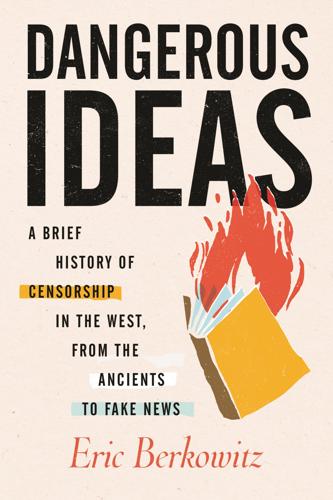
Dangerous Ideas: A Brief History of Censorship in the West, From the Ancients to Fake News
by
Eric Berkowitz
Published 3 May 2021
MacKinnon, “The First Amendment: An Equality Reading,” in The Free Speech Century, ed. Geoffrey R. Stone and Lee C. Bollinger (New York: Oxford University Press, 2019), 140. 2. Darnton, Censors at Work, 19. 3. Caleb Chen, “Activists in Minecraft Made a Digital Library to Bypass Government Censorship,” Privacy News Online, March 24, 2020, https://www.privateinternetaccess.com/blog/activists-in-minecraft-made-a-digital-library-to-bypass-government-censorship, accessed June 20, 2020; Miriam Deprez, “Emojis, Minecraft and Spotify: How Citizens Are Beating the Censors,” Southeast Asia Globe, May 4, 2020, https://southeastasiaglobe.com/press-freedom-beating-censors, accessed June 20, 2020. 4.
…
Given the digitization of hundreds of millions of existing texts and the diffusion into the cloud of countless others as soon as they are composed, the channels for eliminating forbidden materials are closing. Even the tightest controls can often be circumvented. In 2020, the press-freedom group Reporters Without Borders managed to make a large cache of forbidden news stories available in heavily controlled countries such as China by routing it through the popular online game Minecraft. Banned news has also been embedded into pop songs and distributed through the online music service Spotify.3 Authorities know about such tactics as well as anyone, yet they persist with their suppression efforts because they believe they must. It is not just speech they fear, but also the appearance of toleration.
…
See also violence Masschaele, James, 64 Maule, Thomas, 87–88 Maxentius, 44 Maximus, Valerius, 32 Mayan cultural knowledge, 3–4 McCarthy, Joseph, 7 McDougall, Alexander, 112–13 McGovern, Daniel, 197 McNamee, Roger, 220, 225 Mead, Frederick, 192 Medvedev, Zhores, 206 Memoirs of a Woman of Pleasure (Dugdale), 143 memory, 29–30 The Meritorious Price of Our Redemption (Pynchon), 87 Merriam, Clinton, 152 Messina, Piero, 217 Metternich, Klemens von, 119 Microsoft, 234 Mill, John Stuart, 130–32, 157 Milton, John, 16, 85–86, 126 Minecraft, 255 Mock, James, 173 The Monk (Lewis), 141 Montgomery, James, 93 monuments, 39–40, 77, 106–8 Moore, Nicole, 191 Moro, Sérgio, 217 Morozov, Evgeny, 221 Moulin Rouge (Paris), 161–62 Moura, Clóvis, 203 movies. See cinematic censorship Mühl-Benninghaus, Wolfgang, 169 Mulford, Samuel, 109 Murillo, Juan Bravo, 133 Murray, Robert K., 179 Museum of French Monuments, 107, 108 Museum of Jewish Art and Culture (Estonia), 189 Museum of Modern Art (New York), 245 Muslim communities: hate crimes and hate speech against, 241, 243–44, 247–48, 256; in Myanmar, 224; in Palestine, 204–5.
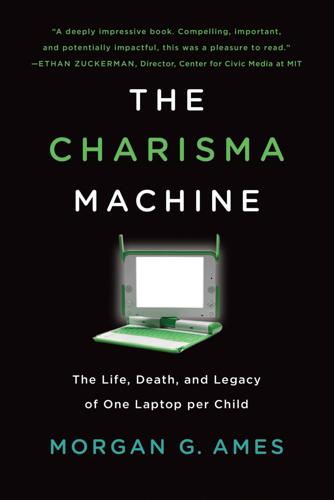
The Charisma Machine: The Life, Death, and Legacy of One Laptop Per Child
by
Morgan G. Ames
Published 19 Nov 2019
“Charismatic Authority.” In The Theory of Social and Economic Organization, edited by Talcott Parsons, 358–363. Translated by A. M. Henderson and Talcott Parsons. Glencoe, IL: Free Press, 1947. Westervelt, Eric. “The Cubist Revolution: Minecraft For All.” Morning Edition. Aired August 8, 2017, on NPR. Audio, 3:52. https://www.npr.org/sections/ed/2017/08/08/538580856/the-cubist-revolution-minecraft-for-all. Wilby, Peter. “Sugata Mitra: The Professor with His Head in the Cloud.” Guardian, June 7, 2016. https://www.theguardian.com/education/2016/jun/07/sugata-mitra-professor-school-in-cloud. Willis, Paul. Learning to Labor: How Working-Class Kids Get Working-Class Jobs. 1977.
…
It is true that certain kinds of video games can at least temporarily improve reaction times and spatial reasoning, but their connection to other kinds of learning is much more contested.17 Some games—like some books, movies, television shows, or other media—have complex storylines and grapple with heady issues. Some, such as Minecraft (which was in an alpha version during my 2010 fieldwork and was completely unknown among my participants at that time, but had been played by a few by the time I returned in 2013), have since been hailed as pathways into programming.18 These were generally not the kinds of games I saw being played among children in Paraguay, however.
…
Instead, she used a desktop computer, and although she had Scratch and eToys installed on it, she said that she had not done much programming in the previous couple of years because she no longer saw much of her beloved teacher or of Paraguay Educa’s erstwhile trainers. She had also lost touch with Nelson, who had moved to Asunción, and she did not have other friends interested in exploring Scratch or eToys with her. Instead, she spent a lot of time playing video games—particularly Minecraft and an online multiplayer game called DOTA 2 (the second Defense of the Ancients, a multiplayer online battle arena game). She even entered in regional eSports video-game tournaments, competing in DOTA 2 for small prizes of cash or computer equipment. She told me that she wanted to study graphic design at Caacupé Technical College starting the following year and then to be a video-game artist—but she also wanted to be a veterinarian.

Peers Inc: How People and Platforms Are Inventing the Collaborative Economy and Reinventing Capitalism
by
Robin Chase
Published 14 May 2015
Being my own boss affords me the independence and flexibility I need to express my creative processes, be they typically artistic or intellectually creative. I am not tied down to other people’s wants and expectations and can choose the paths I want or need to focus on at any particular stage in my life.” In Providence, Rhode Island, David told me about his son, Ethan, who started playing Minecraft about two years ago. His father described him as a fairly normal twelve-year-old enjoying a group-building experience with kids his age from around the globe. Ethan turned out to be quite adept at building these virtual kingdoms in the sky and below the earth. He soon got a little more serious about studying architecture, and he built his own computer for gaming from components.
…
In the process, he has made mistakes common to a lot of young entrepreneurs: underestimating the time required to complete a project, going too far beyond his actual skill set, taking on more work than he could actually do in a given time period, and getting into ill-conceived partnerships. He has also learned a lot: how to build solid, trusting relationships based on an unspoken code of ethics and honor, and how to invest in his small business. To spur his productivity, Ethan recently partnered up with another teenager to purchase a turnkey network Minecraft business with a ready-made client base, compiled code, and website. He stands to start making a lot more money. His father emailed me that “no one seems to care if he is fourteen. He can deliver the goods.” I met Miriam, a newly minted lawyer in her twenties, in Boston. She works long hours and is at the office more than sixty hours a week.
…
R., 86 LinkedIn, 127 Linux controlled kernel path, 109–110 power users, 117–118 private sector’s inability to influence, 208 Location, key criterion for success, 56 Lyft benefit of peers to company, 67–68 “everybody welcome” phase, 111–112 keeping drivers happy, 124 Ma, Jack, 37 Maps, replaced by GPS, 139 Martin, Trayvon, protests through social media, 84 Mayor’s Challenge, 174 Mazzella, Frédéric, 21, 111 McKibben, Bill, 232 Meetup, 238–239 Mesh network, Red Hook Initiative, 245–246 Micro-businesses, 187 Micro-entrepreneurs, 148, 154–156 Minds, diverse and networked, 66, 81–85, 177–178, 231, 251 Mindstorms, 175–176 Minecraft, benefits to peers, 51–52 Mining, Bitcoins, 213 Minitel, 142 Miracles theory excess capacity, 73–78 peers, 81–85 platforms, 78–81 pressing needs, 89–96 putting together, 72–73, 95 Mission edge, innovation, 167–169 Mondragon, 203 Money Bitcoin, 211–217 limitations, 253 See also Financing Monopolies, 124–126 avoiding, 187–188 diversity as barrier, 252–253 platforms as, 46 See also Power imbalance Muñoz, Jordi, 53–54 Musk, Elon, 177–178 MySQL, 43–44 Nakamoto, Satoshi, 212 NASA Apollo 13 innovation, 222–223 diverse contributions, 66–67 work with Global Forest Watch, 230–231 National Advisory Council for Innovation and Entrepreneurship, 143–144 Newmark, Craig.

Actionable Gamification: Beyond Points, Badges and Leaderboards
by
Yu-Kai Chou
Published 13 Apr 2015
URL: http://farmville.wikia.com/wiki/File:Farmville-mona-lisa-by-kevin-johnson-300x186.png↩ Jenny Ng. Games.com Blog. “FarmVille Pic of the Day: Embrace of Swan Lake at Liveloula46’s farm.” 03/01/2012.↩ Amy-Mae Elliott. Mashable.com. “15 Beautiful and Creative QR Code”. 11/7/23.↩ Wikipedia Entry “Minecraft”: http://en.wikipedia.org/wiki/Minecraft↩ Raph Koster. A Theory of Fun. 2nd Edition. p122. O’Reilly Media. Sebastopol, CA. 10/2013. ↩ Chapter 8: The Fourth Core Drive - Ownership & Possession Ownership & Possession is the fourth Core Drive in Octalysis Gamification. It represents the motivation that is driven by our feelings of owning something, and consequently the desire to improve, protect, and obtain more of it.
…
The truth is, simply incorporating game mechanics and game elements does not make a game fun. Games aren’t necessarily fun because of high quality graphics or flashy animations either. There are many unpopular, poor-selling games with state-of-the-art 3D high- resolution graphics. There are also games with very basic graphics such as Minecraft, or even no graphics, such as the purely text-based multi-user dungeon games (MUDs), that have large communities of players addicted to them. Clearly, there are more to games than “meets the eye.” Unfortunately, a lot of people who work in gamification incorrectly think that applying game mechanics like points, badges, and leaderboards – elements that you can also find in boring and unsuccessful games - will automatically make the product or experience fun and engaging.
…
I showcase myself playing through these popular games while making comments on their game design and how they use various game techniques to entice me to come back every day and spend more money buying virtual goods. I started out with Blizzard’s new card-battling computer game Hearthstone, and plan to eventually move on to games like Minecraft, League of Legends, and others. I do this for my own research, but if you go to my channel http://twitch.tv/fdlink, you may be able to catch me broadcasting actual gameplay research. I also announce when I plan to live stream on my Twitter account at http://www.twitter.com/yukaichou so that’s another place to experience a FOMO Punch.

The Inevitable: Understanding the 12 Technological Forces That Will Shape Our Future
by
Kevin Kelly
Published 6 Jun 2016
But it took many hours to master the arcane 3-D tools. In 2009 a game company in Sweden, Minecraft, launched a similar construction world in quasi-3-D, but employed idiot-easy building blocks stacked like giant Legos. No learning was necessary. Many would-be builders migrated to Minecraft. Second Life’s success had risen on the ability of kindred creative spirits to socialize, but when the social mojo moved to the mobile world, no phones had enough computing power to handle Second Life’s sophisticated 3-D, so the biggest audiences moved on. Even more headed to Minecraft, whose crude low-res pixelation allowed it to run on phones.
…
See also artificial intelligence “machine readable” information, 267 Magic Leap, 216 malaria, 241 Malthus, Thomas, 243 Mann, Steve, 247 Manovich, Lev, 200 manufacturing, robots in, 52–53, 55 maps, 272 mathematics, 47, 239, 242–43 The Matrix (1999), 211 maximum likelihood estimation (MLE), 265 McDonalds, 25–26 McLuhan, Marshall, 63, 127 media fluency, 201 media genres, 194–95 medical technology and field AI applications in, 31, 55 and crowdfunding, 157 and diagnoses, 31 future flows of, 80 interpretation services in field of, 69 and lifelogging, 250 new jobs related to automation in, 58 paperwork in, 51 personalization of, 69 and personalized pharmaceuticals, 173 and pooling patient data, 145 and tracking technology, 173, 237, 238–40, 241–42, 243–44, 250 Meerkat, 76 memory, 245–46, 249 messaging, 239–40 metadata, 258–59, 267 microphones, 221 Microsoft, 122–23, 124, 216, 247 minds, variety of, 44–46 Minecraft, 218 miniaturization, 237 Minority Report (2002), 221–22, 255 MIT Media Lab, 219, 220, 222 money, 4, 65, 119–21 monopolies, 209 mood tracking, 238 Moore’s Law, 257 movies, 77–78, 81–82, 168, 204–7 Mozilla, 151 MP3 compression, 165–66 music and musicians AI applications in, 35 creation of, 73–76, 77 and crowdfunding, 157 and free/ubiquitous copies, 66–67 and intellectual property issues, 208–9 and interactivity, 221 liquidity of, 66–67, 73–78 and live performances, 71 low-cost reproduction of, 87 of nonprofessionals, 75–76 and patronage, 72 sales of, 75 soundtracks for content, 76 total volume of recorded music, 165–66 Musk, Elon, 44 mutual surveillance (“coveillance”), 259–64 MyLifeBits, 247 Nabokov, Vladimir, 204 Napster, 66 The Narrative, 248–49, 251 National Geographic, 278 National Science Foundation, 17–18 National Security Agency (NSA), 261 Nature, 32 Negroponte, Nicholas, 16, 219 Nelson, Ted, 18–19, 21, 247 Nest smart thermostat, 253, 283 Netflix and accessibility vs. ownership, 109 and crowdsourcing programming, 160 and on-demand access, 64 and recommendation engines, 39, 154, 169 and reviews, 73, 154 and sharing economy, 138 and tracking technology, 254 Netscape browser, 15 network effect, 40 neural networks, 38–40 newbies, 10–11, 15 new media forms, 194–95 newspapers, 177 Ng, Andrew, 38, 39 niche interests, 155–56 nicknames, 263 nondestructive editing, 206 nonprofits, 157 noosphere, 292 Northwestern University, 225 numeracy, 242–43 Nupedia, 270 OBD chips, 251, 252 obscure or niche interests, 155–56 office settings, 222.
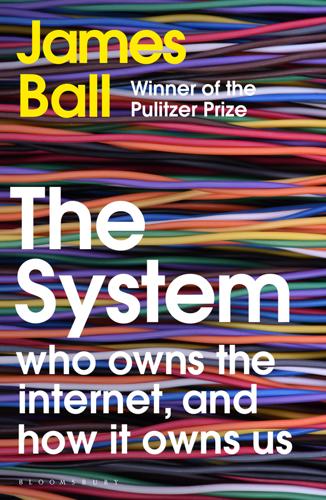
The System: Who Owns the Internet, and How It Owns Us
by
James Ball
Published 19 Aug 2020
The controlled app world of Apple and Android has some benefits for users – it protects against viruses, and to an extent against dodgy apps and scams, but it does it at the price of experimentation, and against freedom of control (and fee-skimming) from the phone manufacturer or the phone networks, or both. It doesn’t, Wales says, let you play – and playing is where lots of good ideas start. ‘Something like Minecraft. Minecraft grew out of a clever guy on a forum with a bunch of gaming geeks, going, “Hey, I made this little game. What do you think?” They give him feedback. He changes it and so on. That just doesn’t happen in the app world.’ As for Wales himself, does doing the right thing – even if you do experiment and play – mean giving up all prospects of being dotcom-founder levels of successful?
…
Ethiopian government, here Kleinrock, Leonard, here, here, here, here, here Kline, Charley, here Knight Foundation, here Kunlun, here Leigh, David, here LinkedIn, here London Olympics, here Lukasik, Steve, here Lumley, Joanna, here Luther, Martin, here MacAskill, Ewen, here machine learning, here, here Marby, Göran, here, here, here, here Markota, Martina, here Mastering the Internet programme, here Meckl, Steve, here, here Medium, here Menwith Hill, here MI5, 146 Microsoft, here, here, here see also Encarta; Windows Millar, Stuart, here Minecraft, here Morgan, J.P., here music publishers, here MySpace, here NASA, here National Health Service (NHS), here National Science Foundation, here National Security Agency (NSA), here, here, here, here, here, here, here, here, here, here and encryption, here NBC, here net neutrality, here, here, here, here, here, here, here, here Netflix, here, here, here, here Netscape, here network effects, here network slicing, here neurolinguistic programming, here New York magazine, here New York Times, here, here, here, here New Yorker, here newspapers, here, here, here, here see also journalism North Korea, here nuclear weapons and warfare, here, here, here Obama, Barack, here, here, here O’Kelley, Brian, here, here, here, here, here, here, here Oliver, John, here, here OpenSecrets database, here Opera, here Optic Nerve programme, here Outbrain, here, here packet switching, here, here Page, Larry, here Pai, Ajit, here, here, here Pakistan Telecom, here Panopticlick 3.0, here Parker, Sean, here PayPal, here, here, here, here, here People for the Ethical Treatment of Animals (PETA), here Philippines, human rights violations, here pinging, here Pizzagate conspiracy, here Poitras, Laura, here populism, here, here pornography, here, here Postel, Jon, here privacy, here, here, here, here see also surveillance Privacy Badger, here Prodigy, here ProPublica, here, here publishers, and advertising, here, here, here railways, here, here, here, here, here Read, Max, here Reagan, Ronald, here Reddit, here Register, The, here Rekhter, Yakov, here, here Requests for Comments (RFCs), here, here, here, here Right Media, here, here Roberts, Brian, here, here, here Rockefeller, John D., here Roosevelt, Franklin D., here routers, here, here Royal Bank of Scotland (RBS), here, here Rubenstein, Michael, here Rusbridger, Alan, here Russia, here, here, here, here Sainsbury’s/Asda merger, here Schneidermann, Eric, here secure operations centres (SOCs), here sensitive compartmented information facilities (SCIFs), here Shaw, Mona, here Silicon Valley, here, here, here, here, here, here, here, here Sinclair Broadcast Group, here Skype, here, here, here, here Snapchat, here, here Snowden, Edward, here, here, here, here, here, here, here, here ‘social credit’, here Soundcloud, here South Korea, here sovereign immunity, here Spotify, here Stanford Research Institute (SRI), here, here, here, here, here, here, here Stripe, here Sun, The, here Sun Microsystems, here surveillance, here, here, here, here resistance to, here Symantec, here, here, here Syria, here, here Taboola, here, here TCP/IP, here, here Telefonica, here Telegram, here telephone networks, here, here, here Tempora, here, here TenCent, here, here terror plots, foiled, here Texas A&M, here Thatcher, Margaret, here Thiel, Peter, here, here Tibet, here Time Warner, here, here Times, The, here Tishgart, Barry, here Topolski, Robb, here traceroute, here, here tracking, see cookies trade unions, here, here, here trademark law, here transatlantic cables, here Tribune newspaper group, here Trump, Donald, here, here, here, here Tuchman, Barbara, here Tumblr, here, here Turkey, bans Wikipedia, here Tweetdeck, here Twitter, here, here, here, here, here, here, here, here, here, here, here, here, here Uber, here Ukraine, here Union Square Ventures (USV), here Universal Declaration of Human Rights, here Universal Studios, here University College, London, here University of California, Los Angeles UCLA, here, here, here, here University of Maryland Law School, here US Congress, here US Constitution, here, here US culture, and internet regulation, here US Department of Commerce, here, here US Department of Defense, here, here, here, here, here, here, here US Department of Energy, here US internet infrastructure, here, here US Supreme Court, here venture capital, here, here, here, here funding phases, here funding series, here, here Verizon, here, here Wales, Jimmy, here WannaCry attack, here Washington Post, here, here, here, here, here web addresses (URLs), here, here, here top-level domains (TLDs), here and WannaCry attack, here WeChat, here Wenger, Albert, here, here, here, here, here WhatsApp, here, here, here, here, here, here, here Wheeler, Tom, here, here, here WikiLeaks, here, here, here Wikipedia, here, here Williams, Evan, here Windows, vulnerability in, here wired.com, here wireless internet, here, here wiretapping, here Woodward, Bob, here World Economic Forum, here World Wide Web, here, here, here, here, here, here, here Wu, Tim, here Yahoo, here, here, here YouTube, here, here, here, here, here, here Zittrain, Jonathan, here Zuckerberg, Mark, here, here, here, here, here, here Zynga, here BLOOMSBURY PUBLISHING Bloomsbury Publishing Plc 50 Bedford Square, London, WC1b 3DP, UK BLOOMSBURY, BLOOMSBURY PUBLISHING and the Diana logo are trademarks of Bloomsbury Publishing Plc First published in Great Britain 2020 This electronic edition published 2020 Copyright © James Ball, 2020 James Ball has asserted his right under the Copyright, Designs and Patents Act, 1988, to be identified as Author of this work All rights reserved.
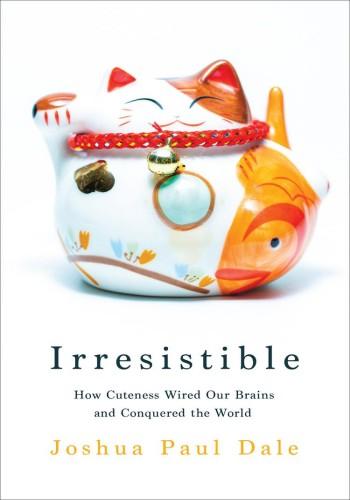
Irresistible: How Cuteness Wired our Brains and Conquered the World
by
Joshua Paul Dale
Published 15 Dec 2023
Kringelbach et al., ‘How cute things hijack our brains and drive behaviour’, The Conversation (4 July 2016), theconversation.com/how-cute-things-hijack-our-brains-and-drive-behaviour-61942 (accessed 31 October 2022). 47 Ibid. 48 Kringelbach et al., ‘On cuteness’, p. 9. 49 Tyler Colp and Nico Deyo, ‘The Vtuber Industry: Corporatization, Labor, and Kawaii’, Vice (23 December 2020), www.vice.com/en/article/akdj3z/the-vtuber-industry-corporatization-labor-and-kawaii. See also Lu et al., ‘More Kawaii than a Real-Person Live Streamer’. 50 Ethan Gach, ‘AI-Controlled VTuber Streams Games On Twitch, Denies Holocaust: Neuro-sama likes to play Minecraft and go off-script’, Kotaku (6 January 2023), kotaku.com/vtuber-twitch-holocaust-denial-minecraft-ai-chatgpt-1849960527 (accessed 23 January 2023). 51 R. O. Kwon, ‘Stop Calling Asian Women Adorable’, The New York Times (23 March 2019), www.nytimes.com/2019/03/23/opinion/sunday/calling-asian-women-adorable.html. 52 Noriko Murai, ‘The Genealogy of Kawaii’, in Noriko Murai et al., eds, Japan in the Heisei Era (1989–2019), (London: Routledge, 2022), p. 249. 53 Simon May, The Power of Cute (Princeton, NJ: Princeton University Press, 2019), p. 127. 54 Leila Madge, ‘Capitalizing on “Cuteness”: The Aesthetics of Social Relations in a New Postwar Japanese Order’, Japanstudien 9, 1 (1998), p. 167. 55 Ibid., p. 164. 56 Slade, ‘Cute men in contemporary Japan’, p. 79.
…
The Treasure Box All the Girls Want’, in Masami Toku, ed., International Perspectives on Shōjo and Shōjo Manga: The Influence of Girl Culture (London: Routledge Press, 2018). Gach, Ethan, ‘AI-Controlled VTuber Streams Games On Twitch, Denies Holocaust’, Kotaku (6 January 2023), kotaku.com/vtuber-twitch-holocaust-denial-minecraft-ai-chatgpt-1849960527 (accessed 23 January 2023). Galbraith, Patrick W., ‘Seeking an alternative: “male” shōjo fans since the 1970s’, Shōjo Across Media: Exploring ‘Girl’ Practices in Contemporary Japan, ed. Jaqueline Bernt, Kazumi Nagaike and Fusami Ogi (London: Palgrave Macmillan, 2019). Galbraith, Patrick W., Otaku and the Struggle for Imagination in Japan (Durham, NC: Duke University Press, 2019).

Click Here to Kill Everybody: Security and Survival in a Hyper-Connected World
by
Bruce Schneier
Published 3 Sep 2018
-Canada Power System Outage Task Force (1 Apr 2004), “Final report on the August 14, 2003 blackout in the United States and Canada: Causes and recommendations,” https://energy.gov/sites/prod/files/oeprod/DocumentsandMedia/Blackout Final-Web.pdf. 94Similarly, the authors of the Mirai botnet: Brian Krebs (18 Jan 2017), “Who is Anna-Senpai, the Mirai worm author?” Krebs on Security, https://krebsonsecurity.com/2017/01/who-is-anna-senpai-the-mirai-worm-author. 94In fact, three college students wrote: Garrett M. Graff (13 Dec 2017), “How a dorm room Minecraft scam brought down the Internet,” Wired, https://www.wired.com/story/mirai-botnet-minecraft-scam-brought-down-the-internet. 94But it erased all data on over 30,000 hard drives: Parmy Olson (9 Nov 2012), “The day a computer virus came close to plugging Gulf Oil,” Forbes, https://www.forbes.com/sites/parmyolson/2012/11/09/the-day-a-computer-virus-came-close-to-plugging-gulf-oil. 94The shipping giant Maersk was hit: Iain Thomson (16 Aug 2017), “NotPetya ransomware attack cost us $300m—shipping giant Maersk,” Register, https://www.theregister.co.uk/2017/08/16/notpetya_ransomware_attack_cost_us_300m_says_shipping_giant_maersk. 95To this we can add mass murder: Elton Hobson (24 Nov 2017), “Powerful video warns of the danger of autonomous ‘slaughterbot’ drone swarms,” Global News, https://globalnews.ca/news/3880186/powerful-video-warns-of-the-danger-of-autonomous-slaughterbot-drone-swarms. 95malicious code received from space aliens: Michael Hippke and John G.
…
Similarly, the authors of the Mirai botnet didn’t realize that their attack against Dyn would result in so many popular websites being knocked offline. I don’t think they even knew what companies used Dyn’s DNS services, and that they were a single point of failure without any backup. In fact, three college students wrote the botnet to gain an advantage in the video game Minecraft. Damage to computers controlling physical systems radiates outwards. A 2012 attack against the Saudi Arabian national oil company only affected the company’s IT network. But it erased all data on over 30,000 hard drives, crippling the company for weeks and affecting oil production for months—which had an effect on global availability.
…
, 136 Electronic Privacy Information Center, 223 e-mail, 153 encryption, 109, 114, 169, 170–72 bypassing, 171, 193 by default, 197 end-to-end, 167, 170–71, 175 limiting, 197–99 as munition, 197 ubiquitous, 171–72, 199 warrant-proof, 194–95 end-to-end principle, 119 end users, 23, 130 Enron, 127, 128 EPA, formation of, 183 Equifax, 37, 79, 106, 124, 125, 128, 130, 180, 187 espionage: cyberespionage and cyberattack, 72, 81 international, 66–68, 71, 171–72 Estonia, national ID card of, 31, 48 ETERNALBLUE, 164–65 EU, regulations in, 184–88 European Safety and Security Engineering Agency, 149 Evans, Lord John, 196 FAA: database of near misses, 177 jurisdiction of, 145–46 Facebook, 190 censorship by, 60 controls exerted by, 61, 62 and EU regulation, 185, 186 identification systems in, 199 surveillance via, 57, 58, 169, 196 Fair Credit Billing Act (1974), 100 Fancy Bear (Russian intelligence unit), 46 Farook, Syed Rizwan, 174 FBI: backdoors demanded by, 172, 174, 193–97, 198, 220 and hacking back, 204 IMSI-catchers used by, 168–70 and law enforcement, 173–76 Microsoft vs., 190 wiretapping by, 168 FDA, 137, 145, 151 Federal Communications Commission (FCC), 149 FedRAMP, 123 Felten, Ed, 223 financial crisis (2008), 125–26 FinFisher, 64–65 FireEye, 42 flash crash, 85 Ford Foundation, 224 Fort Hood shooting (2009), 202 Freeh, Louis, 193 FTC, 148, 154 Gamma Group, 30, 65 Gartner tech analyst firm, 101 GDPR (General Data Protection Regulation) [EU], 151, 184–88 Geer, Dan, 163, 217 George, Richard, 170 Gerasimov Doctrine, 71 Germany, BSI and BND in, 173 GGE (Group of Governmental Experts), UN, 158 Gmail, 153 Goldsmith, Jack, 163 Google: Advanced Protection Program, 47 censorship by, 60 controls exerted by, 61, 62 and EU regulations, 185 identification systems in, 199 lobbying by, 154 state investigation of, 187 surveillance via, 58–59, 169, 196 governments, 144–59 asymmetry between, 91–92 censorship by, 60 and defense over offense, 160–79 functions of, 10 and industry, 176–79 information sharing by, 176 and infrastructure, 117 insecurity favored by, 57 international cooperation, 156–59 international espionage, 171–72 jurisdictional arbitrage, 156 and liability law, 128–33 lobbying of, 154–55 mistrust of, 208, 220 policy challenges in, 99, 100–101, 192–206 regulatory bodies, 121, 144, 150–52, 156–59, 192 and security standards, 167 supply-chain attacks on, 87–89 surveillance by, 64–68, 172, 195, 208 vulnerability disclosure by, 163 Greer, John, 126 GTT Communications, 115 Gutenberg, Johannes, 24 hacking: catastrophic, 9, 16, 217 class breaks, 33, 95 contests in, 85 costs of, 102–3 cyberweapons in, 73 increasing threat of, 79 international havens of, 156 through fish tank, 29 hacking back, 203–4 HackingTeam, 30, 45, 65 HAMAS, 93 Hancock Health, 74 harm, legal definition of, 130 Harris Corporation, 168 Hathaway, Melissa, 114 Hayden, Michael, 170 Healey, Jason, 158, 160 Heartbleed, 21, 114–15 Hello Barbie (doll), 106 Hilton Hotels, 185 Hizballah, 93 Honan, Mat, 29 Hotmail, 153 HP printers, 62 Huawai (Chinese company), 87 Human Rights Watch, 223 humans, as system component, 7 IBM, 33 iCloud, 7 hacking of, 78 and privacy, 190 quality standards for, 111, 123, 135 Idaho National Laboratory, 79, 90 identification, 51–55, 199–200 attribution, 52–55 breeder documents for, 51 impersonation of, 51, 75 identity, 44 identity theft, 50–51, 74–76, 106, 171 Ilves, Toomas Hendrik, 221 iMessage, 170 impersonation, 51, 75 IMSI (international mobile subscriber identity), 168–70 industry lobbying groups, 183 information asymmetries, 133–38 information security, 78 infrastructure: critical, use of term, 116 security of, 116–18 Inglis, Chris, 28 innovation, 155 insecurity, 56–77 cost of, 126 criminals’ benefit from, 74–77 and cyberwar, 68–74 insurance industry, 132–33 integrity, attacks on, 78–82 intellectual property theft, 66, 72–73, 75 interconnections, vulnerabilities in, 28–30, 90 International Organization for Standardization (ISO), 140 Internet: advertising model of, 57, 60 changing concepts of, 5, 218 connectivity of, 5, 91, 105–6 demilitarization of, 212–15 dependence on, 89–90 development phase of, 22–23, 157 explosive growth of, 5, 146 global, 7, 16, 161 governance model of, 157 government regulation of, 152–55 horizontal growth of, 146 industry standards for, 23, 122–23 lack of encryption on, 170–72 maintenance and upkeep of, 143 nonlinear system of, 211 private ownership of infrastructure, 126 resilience of, 210–12 as social equalizer, 214, 217 surveillance and control via, 64–68 viral dissident content on, 158 Internet+: authentication in, 49–51 coining of term, 8 cybersecurity safety board for, 177 risks and dangers of, 217–18 simultaneous vulnerabilities in, 94 Internet+ security: closing the skills gap, 141–42 correcting information asymmetries in, 133–38 correcting misaligned incentives in, 124–28 current state of, 9 defense in, see attack vs. defense enforcement of, 121 funding maintenance and upkeep in, 143 incentives and policy solutions for, 100–103, 120–43 increasing research in, 142–43 liabilities clarified for, 128–33 litigation for, 121 meanings of, 15–17 and privacy, 9 public education about, 138–41 public policies for, 120–21 standards for, 122–23, 140–41, 157–59 as wicked problem, 11, 99 Internet Engineering Task Force (IETF), 23, 167 Internet of Things (IoT), 5 as computerization of everything, 7 Cybersecurity Improvement Act, 180 in developmental stage, 8 patching of, 37–38 smartphone as controller hub for, 48 Internet Policy Research Initiative, MIT, 224 Investigatory Powers Act (UK), 195 iPhones, 3–4 encryption on, 174, 197 new versions of, 42–43 IPsec, 167 Iran: cyberattack by, 71, 116, 178 hackers in, 45 Stuxnet attack on, 79 Iraq, 212 ISIS, 69, 93 ISPs: connections via, 113–14 Tier 1 type, 115 ISS World (“Wiretappers’ Ball”), 65 jobs, in cybersecurity, 141–42 John Deere, 59–60, 62, 63 Joyce, Rob, 45, 53, 54, 164, 166 Kaplan, Fred, 73 Kaspersky Lab, 29, 74, 87 Kello, Lucas, 71 Kelly, John, 66 Keurig coffee makers, 62 key escrow, 194 KICTANet, Kenya, 214 labeling requirements, 134–35 LabMD, unfair practices of, 130–31 Landau, Susan, 175, 176, 223 Las Vegas shooting (2017), 202 Ledgett, Rick, 163–64, 166 lemons market, 134 Lenovo, 187 letters of marque, 204 Level 3 ISP, 115 liability law, 125, 128–33 Liars and Outliers (Schneier), 101, 209 Library of Congress, 42 license plate scanners, 201 linear systems, 210 Lloyd’s of London, 90 Lynn, William, 198 machine learning, 7, 82–87 adversarial, 84 algorithms beyond human comprehension, 111–12 autonomous, 82–83, 85 Maersk, 71, 94 malware, 26, 30, 196 man-in-the-middle attacks, 49, 169 market economics, and competition, 6 mass shootings, 202 May, Theresa, 197 McConnell, Mike, 198 McVeigh, Timothy, 202 medical devices: bugs in, 41 and government regulations, 151 hacking, 16 and privacy, 151 Meltdown vulnerability, 21 Merkel, Angela, 66 metadata, 174 Microsoft, 57, 190 Microsoft Office, new versions of, 42, 43 military systems, autonomous, 86 Minecraft video game, 94 miniaturization, 7 Mirai botnet, 29, 37, 77, 94, 130 money laundering, 183 monocultures, vulnerabilities in, 31 Moonlight Maze, 66 “movie-plot threats,” 96 Mozilla, 163 Munich Security Conference, 70 My Friend Cayla (doll), 106 Nader, Ralph, Unsafe at Any Speed, 182 National Cyber Office (NCO), 146–50 National Cyber Security Centre (UK), 173 National Cybersecurity Safety Board (proposed), 177 National Institute of Standards and Technology (NIST), Cybersecurity Framework of, 123, 147 National Intelligence Council, 211–12 National Science Foundation (NSF), 147 National Security Council, 163 National Security Strategy, 117 National Transportation Safety Board, 177 Netflix, 148 net neutrality, 61, 119 network effect, 60 networks: “air gapped,” 118 collective action required of, 23–24 end-to-end model of, 23 firewalls for, 102 iCloud, 111 secure connections in, 113–14, 125 and spam, 100 telephone, 119 New America, 223 New York Cyber Task Force, 213 NOBUS (nobody but us), 164–65, 169, 170 norms, 157–59 North Korea: cyberattack by, 71 cybercrimes by, 76, 157 hacking by, 54, 71, 78 threats by, 70, 72 Norwegian Consumer Council, 105–6 NotPetya malware, 71, 77, 89, 94 NSA: attribution in, 53–55 BULLRUN program, 167–68 credential stealing by, 45 cyberattack tools of, 165–67 on cybersecurity, 86 cyberweapons stolen from, 73 disclosing and fixing vulnerabilities, 162–67 encryption circumvented by, 171, 193 intelligence-gathering hacks by, 116, 118 missions of, 160–61, 172 mistrust of, 208 reorganization (2016) in, 173 and security standards, 167–70 splitting into three organizations, 172–73 supply-chain attacks by, 87 surveillance by, 65, 66–67, 190, 202 NSO Group, 65 Nye, Joseph, 157 Obama, Barack, 66, 69, 92, 117, 163, 180, 208 Ochoa, Higinio O.

Supremacy: AI, ChatGPT, and the Race That Will Change the World
by
Parmy Olson
At the time, the most advanced AI research was happening in the gaming industry as smarter software helped create living worlds and a new style called emergent gameplay. Instead of playing a set route in something like Super Mario Bros, you were plonked in the middle of a virtual world, given some tools, and left to fend for yourself. That was the essence of Grand Theft Auto and then Minecraft, which would become the best-selling video game in history. Hassabis believed he was on track to do something similar—but there was a problem. Republic: The Revolution was boring. It was the worst possible trap to fall into for a game designer. The team had spent four of their five years of development time so focused on the technology that they had neglected to perfect the gameplay itself.
…
See also Facebook Metz, Cade Microsoft Azure Bing ChatGPT and cloud computing and Copilot corporate bloat and facial recognition and Gebru and GitHub Copilot and Inflection and market capitalization of Microsoft Research Nadella and OpenAI and as partner for OpenAI Tay chatbot Visual Studio Microsoft Research Asia Millar, George Minecraft Mitchell, Margaret at Google concerns about bias paper with Bender and Molyneux, Peter Moskovitz, Dustin Mozilla Foundation Murati, Mira Musk, Elon AI Safety Summit and bad-mouthing of Hassabis and call for AI pause and DeepMind and effective altruism and fears about AI and Hassabis and ideological focus of interplanetary colonization and as member of PayPal Mafia and Neuralink and offer to acquire DeepMind of OpenAI and Page and PayPal and Twitter and Myanmar Nadella, Satya NASA Nectome Neeva Nest Netflix network effects Neuralink neural networks NeurIPS “Neuroscience-Informed Deep Learning” (Ng) Newsweek New Yorker New York Times NFL Ng, Andrew, at Google Nokia Nvidia Obama, Barack OpenAI AGI and AI Act and Altman’s removal from Amodei and bias in ChatGPT and capped-profit structure and ChatGPT and ChatGPT Plus Codex competition with DeepMind and computing power and DALL-E 2 effective altruism and funding and GPT-1 GPT-2 GPT-3 GPT-3.5 GPT-4 GPT-5 GPT Store and hallucination in ChatGPT and ideas behind internal concerns about ChatGPT large language models LessWrong community and Microsoft and Musk and principles and recruiting and Reddit and revenue of scale and Superalignment Team transformers and transparency issues and Open Philanthropy Oppenheimer, Robert Ord, Toby overview effect Page, Larry background of change in leadership at Google and ChatGPT response and China and DeepMind ethics and safety board and Future of Life Institute conference Go and Google acquisition of DeepMind and leadership of DeepMind and Musk and Ng and PageRank algorithm Pantic, Maja Parfit, Derek PayPal PayPal Mafia Penrose, Roger Piantadosi, Steven Pichai, Sundar AlphaGo and as CEO of Alphabet DeepMind and Google DeepMind and on Google employees starting businesses hopes for DeepMind research and on LaMDA leadership at Google and Pitchbook policing Politico Polosukhin, Illia Populous privacy, Loopt and Ptacek, Thomas H.
…
Quora Radford, Alec Ramaswamy, Sridhar Reddit reinforcement learning by human feedback (RLHF) religion, Hassabis and Replika Republic: The Revolution Rethink Priorities Retro Biosciences Rohingya Romney, Mitt Roose, Kevin Rubin, Andy Rutkowski, Greg Schiffmann, Avi Schmidt, Eric Scott, Kevin Scribd Shadows of the Mind (Penrose) Shazeer, Noam Shear, Emmet short-term memory Silicon Valley Altman on Big Tech’s ability to buy competitors corporate bloat and looming concerns about tech giants and savior culture and years off and Singer, Peter singularity concept Singularity Summit (2010) Sivo, Nick Skype Snapchat social media Somasegar, Soma SpaceX Spinoza, Baruch Spotify Sprint Srinivas, Aravind Stable Diffusion Stanford University Starlink Stiegler, Marc Stiglitz, Joseph Stripe Suleyman, Mustafa AGI and Altman and charisma of conflict of visions with Hassabis and culture of DeepMind and ethics and safety oversight board and Facebook offer and formation of DeepMind and GIC plan and harassment claims and Hassabis and Hoffman and ideas about artificial intelligence and Inflection and large language models and real-world data and Summers, Larry Sunak, Rishi Sun Valley conference (2018) Superintelligence (Bostrom) Sutskever, Ilya AGI and Altman and on ChatGPT ChatGPT concerns and DeepMind and firing of Altman and large language models OpenAI board and role at OpenAI and salary at OpenAI and Superalignment Team and transformers and Sweeney, Latanya Tab (wearable AI) Tallinn, Jaan Tao, Terence Tay chatbot Taylor, Bret TechCrunch Tencent TensorFlow Tesla Theme Park game Thiel, Peter Thiel Fellowship Thrun, Sebastian Time magazine Tinder Toner, Helen transformers transhumanism Trump, Donald Tuna, Cari Turing, Alan Turing machines Twitch Twitter University College London US Department of Defense Uszkoreit, Jakob Vance, Ashlee Vaswani, Ashish Verily Life Sciences Verizon Vesteger, Margreth video games artificial intelligence and Dota Dota 2 Evil Genius Evil Genius 2 Fable Grand Theft Auto Hassabis and Minecraft Republic: The Revolution Theme Park Visual Studio wage effects Walker, Kent Wall Street Journal Washington Post WebText dataset Weinberg, Steven WhatsApp Whittaker, Meredith Wikipedia Winter Intelligence conference Wired word embedding Worldcoin World Economic Forum Xiaoice Y Combinator YouTube Yudkowsky, Eliezer Zaremba, Wojciech Zero to One (Thiel) Zuckerberg, Mark ZX Spectrum 48 ALSO BY PARMY OLSON We Are Anonymous: Inside the Hacker World of LulzSec, Anonymous, and the Global Cyber Insurgency ABOUT THE AUTHOR Parmy Olson is a Bloomberg Opinion columnist who has been covering the technology industry for more than thirteen years.
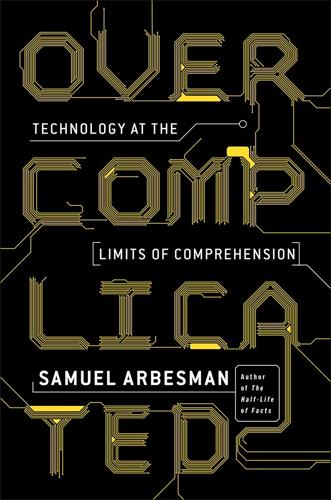
Overcomplicated: Technology at the Limits of Comprehension
by
Samuel Arbesman
Published 18 Jul 2016
In fact, the end goal of biologists is to create models and identify regularities, even if on a smaller scale. So, when confronted with a complex piece of technology, we must begin by acting like field biologists, experimenting around its edges to see how it behaves, with the end goal of some degree of generalization. This is actually how a lot of people approach open-ended video games like Minecraft. You first collect huge amounts of information about your virtual world—what you can do, what you can’t, what kills you, how you successfully survive—and then begin to make little mental models, small-scale generalizations within a much larger whole. Or, when you are working with an advanced piece of software such as a gargantuan word-processing tool, and the endnotes in your document go haywire, do not panic.
…
P., 40 machine translation, 57–59, 207 Macintosh computers, 161–63 magic crayons, 162–63 Maimonides, Moses, 151–52, 156 Mandel, Michael, 46 Mandelbrot, Benoit, 130 mathematics, limitative theorems in, 175 Mauries, Patrick, 87–88 Maxwell, James Clerk, 114–15 medicine, specialization in, 91 memory, human, long-term, 74–77 microbes, synthetic, 49 Microsoft, 106–7 Microsoft Office, 16 Microsoft Research, 62 Microsoft Windows, 35, 98 Microsoft Word, 42 Minecraft, 132 “miscellaneous,” concept of, 108–10, 140–41, 143 models, see scientific models modules, 63–65, 208 Moravec, Hans, 230 multitasking, 76 mutagenesis, 124–25 mutations, 109–10, 120 Myers, Brad A., 159 Myst, 162 mystery: human comprehension and, 173–74 under- vs. overemphasis on, 171 wonder vs., 170–76 Mythical Man-Month, The (Brooks), 38 naches: definition of, 167–68 as response to technological complexity, 168–69, 174 natural world: complexity in, 107–10 diversity of, 113–14 interconnection of technology and, 3 scientific study of, 107–10 search for unity in, see physics thinking Netflix, 5, 59, 107, 126 Newark, N.J., 46 Newton, Isaac, 89, 112, 114, 152, 221 New York Stock Exchange, 1, 187 Niagara Falls Museum, 88 nonlinear systems, 78–79 Norman, Don, 158–59, 172 Northeast Blackout (2003), 48, 128 Norton, Quinn, 22 Norvig, Peter, 56 “novelty detection,” 127 nuclear power plants, 126 Oremus, Will, 189 outliers, 76–77, 137 see also edge cases Out of Control (Kelly), 83 overclocking, 76 Oxford English Dictionary, 55 Pac-Man, 160 Parkinson’s Law, 41 particle accelerators, 2 pattern-making mind, 146–47 penicillin, 124 percolation, 133–34 personbyte, 212 pharmaceutical research, 125 Philosophical Transactions, 111 philosophy of technology, 79–81 Photoshop, 35 physical systems, biological systems vs., 116–17 physics thinking, 112–13, 121 abstraction in, 115–16, 121–22, 128 aesthetics and, 113, 114 in ancient Greece, 138–40 biological thinking vs., 114–16, 137–38, 142–43, 222 technological complexity and, 122, 127–28 unity in, 117 Pinker, Steven, 73 poliovirus, 49 polymaths, 86–89, 93, 144 Post, David, 61 Postal Service, U.S., 34 posterior hippocampus, 78 power grid, cascading blackouts in, 47–48, 128 power laws, 55–56, 206 pre-Socratics, 138–40 programmers, programming: computer vs. human counting in, 69–70, 209 differences of scale and, 50–51 languages in, 23 lessons from, 160–63 recursion and, 71 as valuable skill, 43 see also software Programming Pearls, 104–5 progress, overoptimistic view of, 12–13 progress bars, 159–60 Progressive Policy Institute, 46 Ptak, John, 147–48 Quabbin Reservoir, 101 radiation machines, overdose failures of, 67–69 radical novelty, 3, 50 railroads, 2 RAM, 110 Ramanujan, Srinivasa, 77, 78 recursion: in language, 71–72, 75 in programming, 71 refactoring, 200, 201 regulatory accumulation, 46–47 Renaissance man, 86–89, 93, 144 see also generalists resilience, in technological complexity, 16 resolution, levels of, 127–28 RNA interference (RNAi), 123–24, 141 road system, complexity of, 16 Rosenberg, Scott, 69 Royal Society, 111 scale, difference of, 50–51 Schwarz, Barbara, 10 scientific method, 109 limits to, 153 scientific models, 131 edge cases in, 54–62, 207 interconnection of, 2 as means of understanding complex systems, 165–67 software bugs in, 97 Scientific Reports, 4 Scientific Revolution, optimistic view of human comprehension in, 152–53 security, software bugs and, 97–98 Seinfeld (TV show), 130 sentences: garden path, 74–75 parsing of, 73–74 sewage systems, complexity of, 101 Shakespeare, William, 55 Shatner, William, 160 Shepard, Alan, 200 sickle-cell anemia, 128 SimCity, 159, 166 simulations, see scientific models software: accretion in, 37–38, 41–42, 44 in automobiles, 10–11, 13, 45, 65, 100, 174 branch points in, 80–81 complexity of, 43–44, 59, 68–69 “dark code” in, 21–22 “hygiene” in, 65, 81 interaction in, 44–45 kluges in, 35 legacy code in, see legacy code, legacy systems modules in, 63–64 multidisciplinary teams and, 92 testing of, 107 see also programmers, programming software bugs, 1, 45, 65, 156 complexity and, 96–97 dangerous consequences of, 67–69 debugging of, 103–7 in Galaga, 95–96, 97, 216–17 inevitability of, 174–75 in Microsoft Windows, 98 in scientific models, 97–98 security and, 97–98 in Vancouver Stock Exchange index, 105–6 soldiers, “losing the bubble” and, 70 sophistication, in technological complexity, 16 space shuttle missions, outdated computer systems used by, 38 spaghetti code, 44–45, 201 spatial memory, 78 special effects, greeblies in, 130 specialization: abstraction and, 24, 26–27 collaboration and, 91–92 complexity and, 85–93 generalists and, 146 as rewarded by job market, 144 technological complexity and, 142 Stephenson, Neal, 128–29 stock market systems: complexity of, 4 crashes in, 1, 4, 25, 187 interconnectivity of, 2, 24–26 laws and rules of, 25 and limits of human comprehension, 26–27, 189 storytelling, biological and physical thinking in, 129–30 strangeness, as impetus for scientific discovery, 124, 140–41 subitizing, 75 supply chains, interconnection of, 2 Supreme Court, U.S., 40 Symons, John, 79–80, 97 Systems Bible, The (Gall), 157–58 tax code, 16, 40, 42 Tay (chatbot), 106–7 technological complexity: abstraction and, 23–28, 81, 121–22 accretion in, 130–31 awe as response to, 6, 7, 154–55, 156, 165, 174 biological thinking and, 116–49, 158, 174 branch points and, 80–81 evolution of, 127, 137–38 as examples of human ingenuity, 4 fear as response to, 5, 7, 154–55, 156, 165 “field biologists” for, 123, 126, 127, 132 humility as response to, 155–56, 158, 165, 167, 170, 174, 176 impact of computer on, 3 inevitability of, 42 interconnectivity in, 2, 47–48 interdependence in, 47–48 interoperability in, 47–48, 64–65 interpreters of, 166–67, 229 kluges as inevitable in, 34–36, 127, 128, 154, 173–74 and limits of human comprehension, 1–7, 16–29, 69–70, 80–81, 153–54, 169–70, 175–76 misunderstandings about, 68–69 models as means of understanding, 165–67 naches as response to, 168–69, 174 new ways of thinking about, 6–7, 28–29, 163–67, 176 optimal interoperability in, 62–63 pervasiveness of, 15–16 physics thinking and, 122, 127–28 rapid growth of, 173 resilience in, 16 sophistication in, 16 specialization and, 142 unexpected behavior in, see unexpected behavior user interfaces and, 159 wonder vs. mystery in comprehension of, 170–76 see also complexity, complex systems technological werewolves, 93, 97, 102 technology: cost of construction vs. cost of failure in, 48–50 interconnection of natural world and, 3–4 “natural history” of, 103–4 philosophy of, 79–81 self-contained ecosystems in, 4 Teece, David, 144 Thales, 139 Theory of Everything, 113 Therac-25, overdose failures of, 67–69 Three Mile Island nuclear disaster, 12, 126 time zones, 2, 51–52 tinkering, 118, 125–26, 127, 132, 191 Torvalds, Linus, 102 Toyota automobiles: massively complex software in, 11, 45, 65 unintended acceleration of, 10–11, 13, 65, 174 Traffic Alert and Collision Avoidance System (TCAS), 18–19 translation software, 57–59, 207 triumphalism, 153, 156 T-shaped individuals, 143–44, 146 Tubes (Blum), 101–2 TurboTax, 160 Turing, Alan, 96, 175 Twitter, 106 unexpected behavior, 4, 18–20, 95–110 accretion and, 38 in biology, 109–10, 123–24 complexity and, 93, 96–97, 98–99, 192 debugging and, 103–4 deliberate inducing of, 124–25 edge cases and, 99–100 inevitability of, 157, 174–75 interconnectivity and, 11–12 as learning experience, 102–7, 123–24, 219–20 and limits of human comprehension, 18–22, 96–97, 98 “magical” explanation for, 20–22 modules and, 64 of software, see software bugs of Toyota automobiles, 10–11, 13, 65, 174 United Airlines, 1 United States Code, 33–34, 64, 136–37 unity, search for, see physics thinking unthinkable present, 176 user interfaces, 159–60, 163 Valéry, Paul, 193 Vancouver Stock Exchange stock index, software bug in, 105–6 Wall Street Journal, 1, 187 water supply systems, complexity of, 101, 102 Watson, 169 Watts, Duncan, 62 weather science, 148, 165 Weber, Max, 13 websites, interconnection of, 2 Wells, H.

Dawn of the Code War: America's Battle Against Russia, China, and the Rising Global Cyber Threat
by
John P. Carlin
and
Garrett M. Graff
Published 15 Oct 2018
Sarah Marsh, “US Joins UK in Blaming Russia for NotPetya Cyber-Attack,” Guardian, February 15, 2018, www.theguardian.com/technology/2018/feb/15/uk-blames-russia-notpetya-cyber-attack-ukraine. 38. Clapper, Facts and Fears, 350. EPILOGUE 1. Garrett M. Graff, “How a Dorm Room Minecraft Scam Brought Down the Internet,” Wired, December 13, 2017, www.wired.com/story/mirai-botnet-minecraft-scam-brought-down-the-internet/. 2. Jack Corrigan, “Air Force Pays Out Government’s Biggest Bug Bounty Yet,” NextGov, December 18, 2017, www.nextgov.com/cybersecurity/2017/12/air-force-pays-out-governments-biggest-bug-bounty-yet/144640/. 3. Sophia Chen, “Why This Intercontinental Quantum-Encrypted Video Hangout Is a Big Deal,” Wired, January 20, 2018, www.wired.com/story/why-this-inter continental-quantum-encrypted-video-hangout-is-a-big-deal/. 4.
…
The DDoS attacks were an order of magnitude more powerful than anything yet seen—so large that there was no way for internet companies to mitigate them. “There’s no bandwidth large enough,” said one person who worked on the response. This incredibly destructive force—one that disrupted the internet for tens of millions of people across the globe—appears to have grown largely out of a group of college-aged gamers seeking an advantage in their Minecraft video games.1 At the time of this writing, though, the Mirai botnets they created have spiraled far beyond their creators’ control and will continue to wreak havoc for years to come. That such a small group could unintentionally unleash such a destructive—and perhaps permanent—online force is a perfect illustration of how our digital world remains fragile.
…
See also specific types Mandia, Kevin, 104, 114, 247 Mandiant, 195, 243–249, 265, 268 Mantegna, Joe, 69–70 Maroon.com, 102 Masters of Deception, 89, 97 McAfee, 36, 182, 183, 193–194, 197, 296, 354 McCain, John, 168 McClure, Stuart, 355 McConnell, Mike, 39, 154–155, 157, 160, 174, 243 McConnell, Mitch, 385 McDonough, Denis, 168, 241, 364, 386 McFaul, Michael, 383 McGahn, Daniel, 255–256 MCI, 120 McLarty Associates, 314 McNab, Chris, 304 The Meaning of Stability #2 (ISIL video), 16 media coverage, 8, 15 Medvedev, Dmitry, 282, 284 Mei Qiang, 248 Menn, Joseph, 119, 280 Merck, 387 Mersad Company, 230 Metcalfe, Robert, 81 Metro-Goldwyn-Mayer Studios Inc. v. Grokster, Ltd., 66 Metropolitan Area Exchanges, 39 Micrel Semiconductor, 259 Microsoft, 75, 120, 159, 182, 293, 296 Microsoft Windows Terminal Services, 193 al-Mihdhar, Khalid, 9 Military Critical Technologies List, 104 MILNET, 86 Mimikatz, 235–236 Minecraft (video game), 391 Ministry of State Security (China), 166 Mirai botnet, 391, 396 Mitnick, Kevin, 83–84, 98, 98n Moberly, Kevin, 129 mobile games, as attack vectors, 322 Monaco, Lisa, 134, 138, 141, 146, 233, 241, 384–385; as assistant attorney general for national security, 187, 189–191; bubble chart and, 325; data security discussions convened by, 364; NCIJTF and, 137; on need for cyberthreat response capability, 328; on NSCS, 200; Russia response and, 383; as White House homeland security advisor, 250–251, 269, 325, 327, 327n, 330–331, 333 money mules, 287 Monroe, Jana, 141 MOONLIGHT MAZE, 103–106 Morell, Michael, 331 Morris, Robert T., Jr., 91–95 Morris Worm, 59, 91–95, 150 Motorola, 147 MSUpdater, 195 Mudge, 124 Mueller, Robert, 46–47, 122, 127, 138, 187, 191, 201, 280–282, 384, 398, 401–402; career of, 136; CCIPS and, 76–77; cybersecurity agreement proposal, 175–176; FBI post-9/11 evolution and, 139–140, 142; NCIJTF and, 137; Pittsburgh cybersecurity speech, 153–154; public speaking, 150 Mughal, Waseem, 7 Mularski, J.

Happy-Go-Lucky
by
David Sedaris
Published 30 May 2022
The console was the first thing they’d reach for in the morning and the last thing they’d look at before going to bed, which most nights was well after one a.m. The boys didn’t seem to have any rules the way I did when I was their age. “You can’t just leave the table,” I said to Harrison on the first night of his visit, when he finished his dinner and ran off to play Minecraft. “You have to ask if you can be excused.” “No, I don’t.” “No, I don’t, Mr. Sedaris.” I made the boys call me that, and would correct them whenever they slipped up. “I’m an adult and you’re guests in my house.” “It’s not your house, it’s Hugh’s,” Harrison said. Hugh looked up from his plate. “He’s right.
…
It was sulfur, for the most part, what I imagine Satan’s bathroom would smell like after he’d been on the toilet with the National Review for a while. “Goddammit,” Hugh said, holding his nose and opening the front and back doors, letting the hot, humid air in. “And we have company coming!” “Why you…book writer,” Harrison scolded. He was wearing Minecraft pajamas and looked like a male model who’d been put into a machine and made small. Of the two brothers, Austin had the sweeter temperament. He’d ask questions and offer to help out. His voice had an old-fashioned quality to it, like a boy’s in a radio serial. “Gee willikers!” you could imagine him saying, if that were the name of a video game in which things blew up and women got shot in the back of the head.
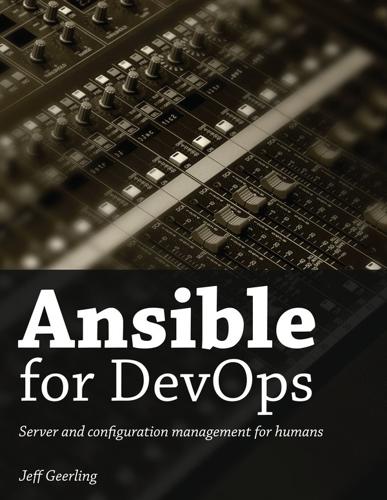
Ansible for DevOps: Server and Configuration Management for Humans
by
Jeff Geerling
Published 9 Oct 2015
I have my eyes on you, 218.78.214.9… * * * 1 sshd[19731]: input_userauth_request: invalid user db2admin 2 sshd[19731]: Received disconnect from 218.78.214.9: 11: Bye Bye 3 sshd[19732]: Invalid user jenkins from 218.78.214.9 4 sshd[19733]: input_userauth_request: invalid user jenkins 5 sshd[19733]: Received disconnect from 218.78.214.9: 11: Bye Bye 6 sshd[19734]: Invalid user jenkins from 218.78.214.9 7 sshd[19735]: input_userauth_request: invalid user jenkins 8 sshd[19735]: Received disconnect from 218.78.214.9: 11: Bye Bye 9 sshd[19736]: Invalid user minecraft from 218.78.214.9 10 sshd[19737]: input_userauth_request: invalid user minecraft 11 sshd[19737]: Received disconnect from 218.78.214.9: 11: Bye Bye * * * Only you will know what logs are the most important to monitor on your servers, but some of the most common ones are database slow query logs, webserver access and error logs, authorization logs, and cron logs.
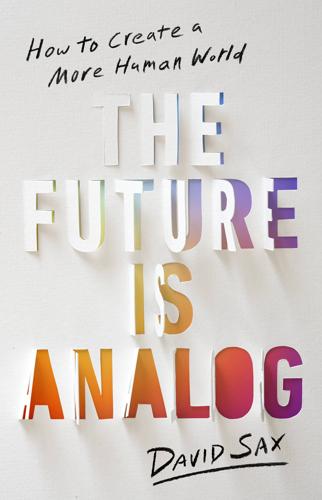
The Future Is Analog: How to Create a More Human World
by
David Sax
Published 15 Jan 2022
As weeks turned to months, everyone except the heroic teachers stopped caring. Kids showed up infrequently and skipped days at a time. My daughter finished her work in minutes and spent most of the day reading Harry Potter novels or watching Harry Potter videos on YouTube, while her classmates played Minecraft or watched sports highlights. We all did what we had to do to get through it, but any learning was incidental, as kids, parents, and teachers all just tried to survive until school resumed (which for us didn’t happen until September 2021, one of the longest school interruptions in the world). Virtual school was the worst.
…
We paddled along the shoreline or just stared out at the perfectly still lake, which reflected the ragged pine, maple, and birch trees like a mirror. Somewhere in the midst of this, lying on a rock one night, looking up at the stars, I realized I was exactly where I was supposed to be. Here. Now. Software promises us limitless variations too, but even the most “immersive” digital environments, like the games Minecraft, Roblox, or Fortnite, have firm limits. You can only do and see what someone has programmed, and no more. There are walls you run up against all the time, and there is simply no going beyond them. “When you’re really reliant on someone else designing your world for you, which is what all digital is, you get a set of rules and a platform and a way to engage with it,” Immordino-Yang said.
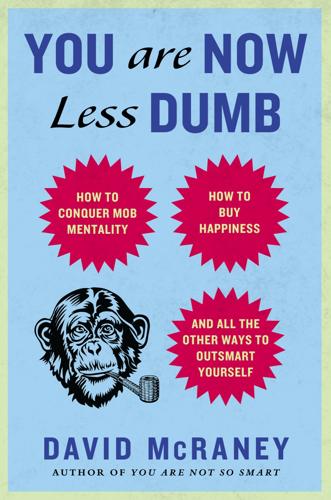
You Are Now Less Dumb: How to Conquer Mob Mentality, How to Buy Happiness, and All the Other Ways to Outsmart Yourself
by
David McRaney
Published 29 Jul 2013
Intrinsic rewards demonstrate to you and others the value of being you. They are blurry and difficult to quantify. Charted on a graph, they form long slopes stretching into infinity. You strive to become an amazing cellist, or you volunteer in the campaign of an inspiring politician, or you build the starship Enterprise in Minecraft. Extrinsic motivations come from without. They are tangible baubles handed over for tangible deeds. They usually exist outside of you before you begin a task. These sorts of motivations include money, prizes, and grades or, in the case of punishment, the promise of losing something you like or acquiring something you do not.
…
“Use of the Maximal-Operant Principle to Motivate Children’s Intrinsic Interest.” Journal of Personality and Social Psychology 53, no. 5 (1987): 866–79. Bradley, W., and R. C. Mannell. “Sensitivity of Intrinsic Motivation to Reward Procedure Instructions.” Personality and Social Psychology Bulletin 10, no. 3 (1984): 426–31. Building Mega-objects in Minecraft. Dir. Hal Nicholas. YouTube, Sept. 27, 2010. Web: Dec. 2011, www.youtube.com/watch?v=kn2-d5a3r94. Deaton, Angus. “Income, Health, and Well-being around the World: Evidence from the Gallup World Poll.” Journal of Economic Perspectives 22, no. 2 (2008): 53–72. Deci, Edward L. “Intrinsic Motivation, Extrinsic Reinforcement, and Inequity.”
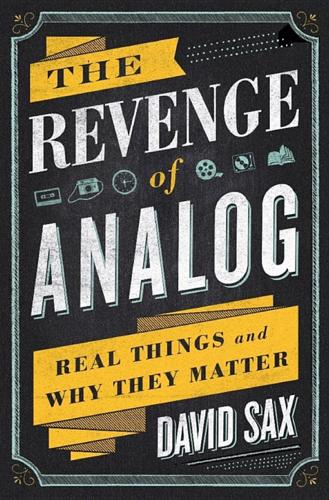
The Revenge of Analog: Real Things and Why They Matter
by
David Sax
Published 8 Nov 2016
“Individually, then collectively, we realized the virtual world could never provide us with enough bandwidth to associate with each other the way we want,” said Bernie De Koven, a pioneering computer game designer, theorist, and writer who focuses on the study of play and fun. When we play with a computer, either alone or in a multiplayer game, we share ownership of that experience with the software. The program and device restrict our ability to shape the experience of play to our imagination, even in games as pliable as Minecraft. “There’s never going to be a virtual environment as completely engaging as the physical environment is. It is so much more engaging to play a game of chess face to face than it is online. Online is a good substitute when we can’t meet. The ultimate contest is when you see each other face to face; see each other sweat and squirm.”
…
91 Hill, Jon, 114 Hirschfeld, James, 44–45 HMV, 13, 16 Hoarders, 97 hobby game market, 77 hobby stores, 78, 79, 85 Holley, Willie, 160 Hollywood Reporter (magazine), 72 home libraries, 128, 208, 227 Houstonia (magazine), 109 HP computers, 65 Huffington Post, 115 Huizar, Jose, 185 human assistance, preference for, 134 human-in-the-loop processes, 224 Hungry Hungry Hippos, 76 Husni, Samir, 104–105 hypercapitalism, 157 IBM computers, 65 ICQ, 217 IdeaPaint, 191 IDEO, 193, 225 Ilford film, 55, 71 I’m the Boss, 86 Impossible Project, 66, 67–70 In Wilderness Is the Preservation of the World (Thoreau), 232 independent booksellers increase in, 125 See also bookstores independent magazine publishing, 103–107 independent record stores, annual meeting of, 13 See also record stores Indigo, 127 information age, 219 information overload, 37, 111 information persistence, 191 Initiative, 108 innovation building blocks for, buzzwords in, 192 culture of, fostering, 214 deeply held values around technology and, 179 different narrative of, xvi driver of, 36 standard narrative of, trend running counter to, xiv, 155 Instacart, 166 Instagram, 62, 80, 94, 162, 170, 217, 224, 234, 235, 241 instant film photography, xv, 66, 67, 69–70 Instax camera, 70 integrative thinking, 175, 176–177, 197, 199 Intel, 163 Internet/web access to, in education, 183, 185 growing use of, economy based on, 152, 154 role in saving vinyl, 11–12, 20–21 at summer camp, 231, 235 trust and, challenge of, 145–146 view of, 46, 238 See also online entries investing, 170–172 iPads, 13, 42, 81, 84, 110, 111, 113, 132, 180, 182, 185–186, 188, 208, 234, 241 iPhone, ix, xiii, 62, 63, 73, 84, 140, 144 iPods, 7, 9, 12, 18, 19, 27, 28, 233 IRL, 237 See also reality iTunes, ix, 12, 19 Jackman School, 187–188, 203 Jackson, Wanda, 22 Jaipur, 87 job creation, 151, 152, 160, 161–166, 167, 171–173, 173 job market, 164, 165–166, 175 See also digital work; manual work Jobs, Steve, 138, 139, 206, 207–208 Johnson, Jeff, 182 Johnson, Ron, 139, 140 jukeboxes, 8, 9, 18 June Records, ix, xi–xii, 137 Kalanick, Travis, 155 Kaps, Florian “Doc,” 66–68, 69 Kartsotis, Tom, 150–151, 160, 167, 169, 172 Kassem, Chad, 17 Katigbak, Everett, 214, 215–216 Kaufman, Donna Paz, 127, 128 Kelly, Kevin, 226–230 keyboards, xvii, 186, 237 Keynes, John Maynard, 164 Khan Academy, 200 Kickbox, 208–209 Kickstarter, 43, 73, 91–92, 94, 95–96, 98 Kim, Eurie, 137, 138 Kind of Blue (album), 25 Kindle, 124, 130, 142, 143, 228 Kinfolk (magazine), 105 Kleinman, Gabe, 214 Kobo, 142 Kodak, 54, 55, 56, 57, 59, 63, 64, 71, 153 Kroger, 134 Krugman, Paul, 171 Kurtz, Michael, 13–14, 15, 16, 20 Kwizniac, 91 laboratory school, 187–188 Landor Associates, 36 Lanier, Jaron, 157 laptops early childhood education and, 182 in education, learning outcomes and, 183–185, 188, 190 See also computers Launch Monitor (blog), 111 Lazaretto (album), 21 LC-A camera, 59–60 Lechtturm, 43 LEGOs, 182, 198 Lennon, John, 26 Leslie, Jeremy, 104, 106, 111 letterpress cards/invitations, xiv letterpress printing, 44, 215 Levin, Diane, 180–181 Levin, Eric, 14 Levitin, Daniel, 37 Levy, David, ix Lexus and the Olive Tree, The (Friedman), 154 liberal arts programs, 192 Libin, Phil, 222 Lichtenegger, Heinz, 11, 17 Lieu, John, 213 Lim, Sen-Foong, 98 limitless selection, issue with, 130, 134 LinkedIn, 45, 46 Little Brother (magazine), 104–105 Live Action Role Play (LARP) retreat, 82 live performances, xv, 6, 15, 22, 27, 28 Livescribe, 47, 228 Lomographic Society International, 60 Lomography, 59–62, 64, 66, 71 Lonely Typewriter, The (Ackerman), 131 Long Good Read, The (newspaper), 116, 117 Long Tail, The (Anderson), 208 Los Angeles Times (newspaper), 185 Los Angeles Unified School District, 185–186 Lowery, David, 20 Lucas, George, 72 Lululemon, 126–127 luxury approach, 112, 114, 116, 150, 151, 168 MacArthur, Rick, 142 made-in-America approach, 150, 151, 152, 160, 167, 168 Maffé, Carlo Alberto Carnevale, 39, 40 Mag Culture (blog), 104 magazine ads, 108, 109 magazine market, 105–106 magazine publishing, 103–107, 108, 112 magazine subscription service, 103, 106 magazines ability to charge for, 109, 110, 112 circulation of, 104, 105 luxury approach to, 112–113 See also digital publications; print publications Magic cards, 78 Magnetic, 108 magnetic tape, 23, 24, 25, 72 mah-jongg, 82 manual work classic educational model for, 199 investing in, 172 skilled, manufacturing providing, 150, 151, 152, 157–158, 159–161, 167, 168, 169 standard narrative on, 154, 155, 160 value gap involving, 160, 161, 171 Mara, Chris, 24–25 Marazza, Antonio, 35–36 market logic/laws, 132–133, 140 See also capitalism Martin, Penny, 112 Matsudaira, Kate, 43 Mattel, 85 Mazzucca, Daren, 111 McAfee, Andrew, 162, 163 McAlister, Matt, 116–117 McBeth, Leslie, 198–199 McCartney, Paul, 26 MCIR (magazine), 106 McNally, Sarah, 129 McNally Jackson, 129, 148 McNally Robinson, 129 McNeish, Joanne, 188–189 Medina, Allison, 132 meditation, xv, 205–206, 207, 209–210, 210 Medium, 208, 213–214 meetings, improving, 219–220 Meetup, 220 merchandising appeal, 131–132 merchandising tactics, 133 Michaels, Mark, 9–10, 16 microphones, 83 Microsoft, 43, 154, 163, 206, 211 Microtouch, 190–191 Millar, Jay, 6, 7–8 Mille Bornes, 78 millennials, xii Milton Bradley, 76, 92 mindfulness, xv, 206, 207 Minecraft (game), 81 Mitchell, Jenny, 97 Mittelstein apprentice system, 160 Mod Notebooks, 43 Modo & Modo, 32, 33, 34 Mohawk Paper, 46 Moleskine (company), 31–32, 38, 39, 40, 41–43, 46, 47, 48–49 Moleskine notebooks appeal of, 31, 34–35, 36, 38, 39, 40, 43, 49, 111, 228 branding of, 35–36, 39, 40, 41, 48 buyers of, change in, 36–37 history of, 33–34 integration of, with digital companies, 46, 47–48, 222–223 and the notebook market, 31, 41, 43–44 sales of, 39, 41, 48, 223 Moleskinerie (blog), 38 Monocle (magazine), 112–113 monopolies, 162–163 Monopoly, 76, 77, 78, 86, 88–89 Montessori school, 208 MOO (Pleasure Cards), 45–46 MOOC (massive open online course), 201–202, 203 Moore’s Law, 225 Moross, Richard, 45, 46 motion picture film, 52, 53, 55, 56, 71–73 Motown, 6 Mousetrap, 76 movie sets and props, 72 MP3s, xvi, 7, 9, 12, 19, 23, 143, 231, 242 Mraz, Jason, 15 multiplayer gaming, massive, 77, 80–81, 83 Munchkin, 85 Murchison, Mike, 227 Muscle Shoals, 25 music, evolution of technology used to listen to, xv–xvi See also digital music; live performances; record stores; recording studios; vinyl records MusicWatch, 12, 18 Musk, Elon, 155 MySpace, 217 Nadaraja, Nish, 217, 218 Nakamura, Yoshitaka, 70 Napster, x, 12 National Bureau of Economic Research, 192 NBA Jam (game), 80 Negroponte, Nicholas, 184 neoliberalism, 153 nerd/geek culture, 14, 78, 84–85, 94, 211 Netflix, 223 Netscape, 154 New 55, 70 New York Times Magazine, 238 New York Times (newspaper), 92, 108, 110, 114–115, 136, 151, 154, 171 New Yorker (magazine), 89 NewBilt Machinery, 17 News Corp, 186 Newspaper Club, 117–120, 121 newspaper-printing plants, 117, 119–120 newspapers appeal of, 114–155, 238, 239 custom, 116, 117–120 decline of, 117, 120 integrating digital and new business models for, 116–120 online versions of, 114, 115–116 See also print publications Nicholson, Scott, 82–83 Nielsen BookScan, 142 Night (Wiesel), 130 1989 (album), 6, 18, 27, 69 nineteenth-and twentieth-century model of education, 198–199 Nintendo, 76 Noah, David, 189–190 Nolan, Christopher, 71, 72 Nook, 142, 143 Nordstrom, 44, 137, 150 Norvig, Peter, 201 nostalgia, xii, xvii, 18, 44, 46, 62, 85, 189, 221, 238, 239 notebook market, 34, 41, 43–44, 48 notebooks/journals, 31, 34, 37, 41, 43–44, 49, 72, 104, 126, 142, 149, 207, 208, 218 See also Evernote; Moleskine notebooks Observer, The (newspaper), 116 obsolescence, xiv, xv, 12, 21, 44, 153, 187 offshoring, 156, 163, 165, 167, 168 omnichannel retail strategy, 126, 134 on-demand freelance work, 164, 165–166 on-demand printing of card games, 91 of newspapers, 117 of photos, 70 One Laptop per Child (OLPC), 184, 185 O’Neal, Johnny, 85 online communities, 38, 47, 60–61, 91, 96, 146, 215, 217–218, 218, 226 See also social media/networks online education, 176, 200–202 online gaming, 76–77, 80–81, 82, 83, 94 online retailing appeal of, 124 creating brick-and-mortar stores in, xv, 137–140, 208 disadvantages of, 132, 136 See also specific retailers online schools.
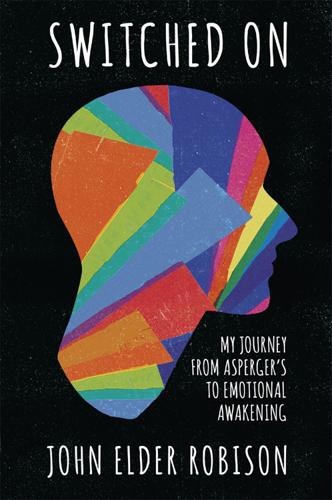
Switched On: My Journey From Asperger's to Emotional Awakening
by
John Elder Robison
Published 6 Apr 2016
.* With diagnoses of autism, attention deficit disorder (ADD), and obsessive-compulsive disorder (OCD), he was still doing a lot better than I ever had in school, but his good grades didn’t insulate him socially. There, he ran into the same challenges that I had at his age. As Nick moved through junior high, he took to saying he was “just not a friend person,” spending his free time playing Minecraft and watching YouTube videos rather than hanging out with other kids. His parents watched him struggle to connect with other people and to function in his daily activities. As Kimberley described, “Although Nick is very smart in terms of vocabulary or math skills, it took him much longer than others to complete class work and homework and activities of daily living.
…
“Today, Nick says he can’t remember anything being better after the TMS, he doesn’t acknowledge ever making any positive gains, and he professes himself unwilling to try it again. The school assignments he’d started breezing through are once again an insurmountable challenge. His ability to participate in conversations with others has slipped away, and he’s back to being interested in little besides Minecraft and YouTube videos.” As Kimberley says, “Outside of gaming and a few other interests, he doesn’t participate much in conversations unless we drag him in. He doesn’t ask us how we are, and at mealtimes, he sits with his face and body twisted away from us. The lovely parts of his personality that appeared after TMS are hidden once again.”
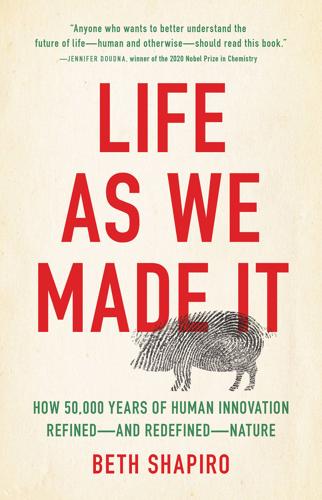
Life as We Made It: How 50,000 Years of Human Innovation Refined--And Redefined--Nature
by
Beth Shapiro
Published 15 Dec 2021
Speaking of patience, I definitely need to thank my family: my partner, Ed, who read one chapter of this book as an expert reader and swears that he will one day have time to read the whole thing (and also, maybe one day, the mammoth book), and my children, James and Henry, who said that I need to dedicate every book that I write to them because of how much time the process takes away from listening to their enthralling stories about adventures in Minecraft. I am also grateful to those who made it possible for me to focus on writing despite that my house has been bustling with online teaching and meetings and elementary school (and Minecraft) since the world shut down. Without the energy and love that David Capel, Victoria Nobles, and Linda Naranjo invest in James and Henry, there is little chance that I could have finished this book or anything else during the pandemic.

Human Frontiers: The Future of Big Ideas in an Age of Small Thinking
by
Michael Bhaskar
Published 2 Nov 2021
The 4IR is less a historical fact, more a loosely assembled set of conference talking points notionally about ‘cyber-physical systems’, a handy label for a basket of potentially transformative but still nascent technologies that face a host of technical, ethical and social barriers. In the meantime innovation has been directed at ways to order pizza or take better selfies; the softest frontiers around. To be fair, Google Maps, Zoom, Minecraft, Spotify – these are marvels and big ideas that have found purchase, and digital is the bright spot. But it only makes the contrast with other areas starker, and doesn't fully explain why measures like TFP have fallen so much. While we shouldn't play down the significance of the 3IR, its impact doesn't equal let alone exceed the 2IR.33 It adds further context to Huebner's 1873 hypothesis and its many heirs: that far from living in an escalation of big ideas, we live in a confused, halting sort of advance.
…
Rogers 332 Homo omnis (Homni) 300 Honjo, Tasuko 58 Hooke, Robert 333 Horgan, John 118, 168 Hossenfelder, Sabine 121–2 Howard Hughes Medical Institute 322 Howes, Anton 24, 172 hubris 122 Huebner, Jonathan 77–9, 81, 86, 91, 94, 97 Hugo, Victor 27 human frontier 7–19, 27, 40–1, 147–8, 156, 158, 249, 277–8, 336, 342–3 and artificial intelligence 250 diminishing returns of the 98 getting stuck at the 45 moral 132, 138 putting to rest 42 and science 123, 124 slowing down at the 14, 86–7, 131 and women 269 hydrogen 145 Hypatia of Alexandria 304 IBM 33, 184, 240, 265, 296, 312 Idea Paradox 178–9, 187, 191, 217, 226, 250, 254, 283–4, 301, 312, 342 ideas ‘0-I’ ideas 31 and economic growth 88, 89–92 nature of 17–18 protection 89 and research and development 90–1 slowdown 90–1 spread of 89–90 world-changing 5–6 see also big ideas illiteracy 277 imagination 16, 236 immunotherapy 57–61 income global 278 median 95 incrementalism 34, 71, 279 India 44, 71, 213, 264–8, 275, 277, 279–80, 284, 294–5, 308, 313, 326–8 individualism 282 Industrial Enlightenment 27 Industrial Revolution 242–3, 252–3, 295, 301 First (IIR) 79–81, 253, 259, 289, 306, 325 Fourth (4IR) 82, 86, 253–4 Second (2IR) 79–80, 81, 83, 84, 86, 104, 253, 289 Third (3IR) 81–2, 83–4, 86, 92, 253–4 inequality 251 infant mortality rate 10, 54 influence 28, 32–3 Initial Public Offerings (IPOs) 95 Inklings 124, 295 innovation 16, 18, 25, 31, 96, 98, 161, 183–5, 214, 274, 286, 288, 296–7, 298, 339 age of 5 breakthrough 32–3 curve of 77–9 disruptive 34 epochal 31 and human capital 277 and industrial revolution 84 and military technology 316–17 normal rates of 177–8 normalisation of 172 parasitic 194 radical 95 risky nature 335 scale 83 slowdown 83, 85 society's attitude to 17, 18 Innovation Illusion 13 institutional revolution 286–301, 309–10, 328–32, 337–8 Intel 92, 253, 272 intellectual, the, death of 110 intellectual property (IP) 89, 195–6, 251, 331 intelligence 247, 299 collective 339 ‘intelligence explosion’ 238 limits to 166–79 interconnectedness 274, 299–300 interest rates 95 International Exhibition of Modern Art, The 103 International Mathematics Olympiad 276 International Space Station 70 Internet 85, 128–9, 183, 185, 196, 246–7, 253–4, 265–6, 272, 274, 297, 300, 315, 329 invention 11, 15, 16, 156–8, 274, 286, 288, 339 and Bell Labs 180–4 and cities 270–2 industrial 24–5 macro- 31, 81 micro- 31 and military technology 316–17 and patents 97 IP see intellectual property IPOs see Initial Public Offerings iron oxide 89 Islam 133, 340 Islamic caliphate 259, 260 Islamic State 305 ITER 146 Jackson, Andrew 67 Jainism 108 Japan 264, 266, 268, 279, 296, 305 Jefferson, Thomas 211 Jenner, Edward 47 Jesus 24, 216, 303 jet engines 69–70 jetpacks 71, 72 Jiankui, He 255–7, 280, 285 job automation 228 job destruction 96 Jobs, Steve 159, 186 Jones, Benjamin F. 156, 158–9, 160–1 Jones, Charles I. 90–1, 93, 94, 152 joy 170–1 Joyce, James 103, 166 Jung, Carl 104 Justinian 304 Kahn, Bob 253 Kahn, Herman 129 The Year 2000 9, 12, 13 Kaku, Michio 337 Kardashev, Nikolai 337 Kardashev Scale 337–43 Kauffmann, Stuart 203 Kay, John 24–5 Kelly, Kevin 300 Kelly, Mervin 182, 206 Kepler, Johannes 36, 229 Khmer Rouge 305 Kim Il-Sung 114 Klimt, Gustav 188 Knossos 153 knowledge ‘burden of knowledge’ effect 154–65, 175, 178, 235, 338 human frontier of 7–19 Koch, Robert 38 Kodak 184 Koestler, Arthur 36, 39 Kokoschka, Oskar 188 Korea 138, 266, 268, 305 see also North Korea; South Korea Kremer, Michael 274 Kristeva, Julia 111 Kuhn, Thomas 29, 30, 159 Kurzweil, Ray 79 Kuznets, Simon 31 labour 88 Lakatos, Imre 121 Lamarck, Jean-Baptiste 35, 164 Langley, Samuel Pierpont 66 Laozi 108 Large Hadron Collider (LHC) 118, 233, 239 Latin America 266–7, 275, 295 Latour, Bruno 111 Lavoisier, Antoine 29, 34 Lawrence Berkeley National Laboratory 234–5, 296 Lawrence, D.H. 103 lawyers 205–6 Lazarsfeld, Paul 189 Le Figaro (newspaper) 64 Le Mans 64 Le sacre du printemps (The Rite of Spring) 99, 100–2, 104 Leeuwenhoek, Antonie van 231 left wing politics 113 Leibniz, Gottfried Wilhelm 25 Lem, Stanisław 44–5 Lenin, Vladimir Ilyich 188 lenses 231 Leonardo da Vinci 155 Lessing, Doris 152 Lewis, C.S. 124 LHC see Large Hadron Collider Li, Danielle 317–18 liberal democracy 111–12 life expectancy 52–5, 57, 93–4, 169 lift 65 light 75–7 Lilienthal, Otto 62, 335 Lister, Joseph 332 literature 103, 108, 124 Locke, John 25, 137, 138 Lockheed Martin 184, 296 London 133 loonshots 31–2 Loos, Adolf 103, 188 Lorenz, Edward 163 low-hanging fruit paradox 149–54, 167, 178 Lucretius 35, 155 Lulu and Nana (genetically edited twins) 255–7, 264 Luther, Martin 230 Lyell, Charles 34, 35 Lynn, Vera 105 M-theory 120 Mach, Ernst 188 machine learning (ML) 225–7, 233–4, 237, 243, 338 Madonna 105 magnetism 74–7 Mahler, Gustav 188 mail order 84–5 Malevich, Kazimir 103 Malik, Charles 134–6, 140 Malthus, Thomas 35 managerialism 204–5, 206–7 Mandelbrot, Benoit 163 Manhattan Project 119, 144–5, 148, 289, 296, 315, 317–18 Manutius, Aldus 253–4 Mao Zedong 328 Maoism 114 Marcellus 4 Marconi, Guglielemo 216, 289 Margulis, Lynn 203 Mars 218, 296, 318, 338, 341 Marx, Karl 36, 329 Massachusetts Institute of Technology (MIT) 88, 146, 184–5, 296, 314, 316, 327 see also MIT Technology Review materials science 234–5 Maxwell, James Clerk 74–7, 79, 80, 166 Demon (thought experiment) 76 Treatise on Electricity and Magnetism 74–7 Mayan civilisation 43 Mazzucato, Mariana 185, 194, 318 McCloskey, Deirdre Nansen 24 McCormick, Cyrus 11 McKeown, Thomas 53 McKinsey 34, 246 medicine 45, 46–62, 70–3, 93–4, 98, 124–6, 217–18, 338 see also drugs mega-authored papers 157 Meister, Joseph 48 Mendeleev, Dmitri 149 Menlo Park lab 286–7, 293 Merton, Robert 328 Mesopotamia 25, 291 Mesoudi, Alex 164 micro-organisms 49–51 microscopes 49, 232 Microsoft 33, 265 Middle East 138 migration 272–3 military technology 3–4 Minecraft 86 Minoans 43, 153 Minsky, Marvin 227 Mises, Ludwig von 189 MIT see Massachusetts Institute of Technology MIT Technology Review 255 Mitchell, Joni 104 modern art 103 modernity 11, 80, 81, 83–4, 85 Mokyr, Joel 25, 31, 44, 68, 81 molecule libraries 56 Mont Pelerin Society 329 Montagu, Lady Mary Wortley 335 Montgolfier brothers 65 Moon missions 70, 71, 218, 263, 315, 316 moonshots 8, 59, 136, 214, 317 Moore, Gordon 92 Moore's Law 55, 84, 92, 93, 97, 240 Morgan, J.P. 287, 288 Morris, Ian 260–1, 306 Morse, Samuel 289 motor vehicles 68–71, 95, 107–8, 219, 289 Motorwagen 68 Mozart, Wolfgang Amadeus 159 multiculturalism 268 multiverse 170, 342 music 99–108, 115, 188 Musil, Robert 188 Musk, Elon 71, 247 Mussolini, Benito 114 mysterians 166, 249 nanotechnology 242, 243, 245, 341 Napoleon Bonaparte 49 Napoleon III 50, 51 narratives, breakdown of grand 115 National Aeronautics and Space Administration (NASA) 71–2, 233, 315–16, 319 National Health Service (NHS) 56, 57 National Institute of Health (NIH) 60, 120, 185–6, 247, 319, 322 nationalism 213 natural selection 35–6, 37, 109, 118, 244 Nature magazine 12, 121, 157, 211, 220, 229 Nazis 48, 132, 190 Negroponte, Nicholas 13 neo-Enlightenment 98 Netherlands 24, 231, 283 neural networks, deep learning 225, 227, 233 Neurath, Otto 189 neuroscience 247 new molecular entities (NMEs) 93 ‘new normals’ 32 New Scientist (magazine) 122 new technology 95 disruptive 96 New York 103, 134 Newton, Isaac 25, 29, 34, 37, 74–5, 155, 159, 232, 341 Ng, Andrew 262 NHS see National Health Service Nielsen, Michael 117 Nigeria 267, 279 NIH see National Institute of Health Nijinsky, Vaslav 99–100 Nixon, Richard 59 NMEs see new molecular entities noble gases 149 Nokia 183 Nordhaus, William 186 norms, ‘new’ 32 North Korea 305 Novacene 238 Novartis 61 nuclear fission 144, 145–6, 148 nuclear fusion 145–8, 234, 317, 341 nuclear power 85, 119, 143–8, 220, 221, 290 nuclear weapons 45, 143, 144, 311 Oak Ridge laboratory 143, 147 Obama, Barack 59 Obninsk 144 Odlyzko, Andrew 184 Office of Scientific Research and Development (OSRD) 316–17 Ogburn, William 39 oil 80 oligopolies 96 optical devices 231–2 orbits, elliptical 36 organisations breakthrough 294–9 see also companies originality 24, 28, 31–3, 152, 177, 283 lack of 108 Ørsted, Hans Christian 74–5 OSRD see Office of Scientific Research and Development Ottomans 277, 308 Oxford University 123–6, 127, 296 Packalen, Mikko 201, 202, 321 Page, Larry 326 Paine, Thomas 137 painting 176–7 panpsychism 340 paper 230, 259 paradigm rigidity 160 paradigm shifts 29, 33, 105, 109, 130, 164, 222, 250, 339 Parfit, Derek 203 Paris 99–103, 110, 132, 135, 205 particle physics 117–18, 119, 120–1, 122 partisanship 209–10 Pasteur, Louis 46–53, 57, 60–1, 71, 77, 79, 139, 232–3, 296, 332, 338 pasteurisation 50, 51 patents 64, 83, 156–8, 194–6, 271–2, 292–3, 297 new classes 97 patronage 322 Paul, St 303 Pauli, Wolfgang 159 Pauling, Linus 118, 323–4 PCR see polymerase chain reaction peer learning 326–7 peer review 320–1 penicillin 38, 52, 125 Penrose, Roger 124 Pentagon, Naval Air War Center 77 pessimism, rational 123–31, 150 pet food 147 Pfizer 61 pharmaceutical industry 31, 55–7, 60, 70 see also drugs Philo of Byzantium 4–5 philosophy 103–4, 111–12, 115, 121, 124, 339 Photoshop 162 physics 74–7, 79, 80, 116–22, 124, 131, 140, 159–62, 166, 239, 242–3, 332, 341 Picasso, Pablo 36, 101, 152 Pierce, John R. 182 Pitcairn Island 42–3 Planck, Max 104, 160, 296 planets, elliptical orbit 36 plasma 145, 146 Plato 3, 108, 169, 291, 304 Plotinus 303 Plutarch 4 polio 53 political policy 114–15 politics 111–15, 208–13 polymerase chain reaction (PCR) 202 Popper, Karl 189 population growth 78, 79 exponential 11 populism 208, 211, 214, 280–1, 307 post-scarcity society 340 post-truth world 213, 215 Pot, Pol 114 Pound, Ezra 103 present 13 Presley, Elvis 36, 152 ‘priming’ 4 Princeton 180, 296 printing press 36, 230, 253–4 problems, catastrophic 42–4 production lines 104 productivity growth 82 profit 186 progress acceleration 8 linear 29 mirage of 5 nature of 13 protein-folding problem 223–6, 228–9 Proust, Marcel 103 Prussia 50 Ptolemaic astronomical system 30 Ptolemy 303 public bodies 205 public health policy 53 PubMed 28, 116 Punic Wars, Second 3 Pythagoras 304 PYTHIA 237 quantum computing 240–1, 263, 296, 312 quantum physics 159, 166, 341 rabies 48, 51 radiation 57 radioactive elements 149 railways 67, 69 Ratcliffe, Peter 124 rational pessimism 123–31, 150 Ravel, Maurice 101 RCA 33, 289 Reagan, Ronald 211 Rees, Martin 167–8 Reformation 230, 233, 328 refugees 220 regulatory burden 205–6 Relativity Theory, General 104, 117 religion 108, 214, 303–4, 340 Rembrandt 236 Renaissance 130, 156, 177, 230, 233, 252, 254 reproducibility crisis 121 research and development 128, 180–7, 214, 252, 286–90, 312, 339–40 agricultural 92–3 autonomous vehicles 219 cancer 59–61 Chinese 262–3 cleantech 195 drugs 55–7, 61, 92–4, 119, 161, 172–3, 217–18, 234, 245, 315, 338 and financialism 192 funding 202–3, 314–24 global spend 128 government funding 314–19 and ideas 90–1 and India 265, 266 military 314–17, 319 multipolar 258 nuclear 147 productivity 91–5, 97–8, 307 and scaling up 279 specialisation 156, 157–8 and tax credits 331 and training 158–60 and transportation 70, 72 and universities 200–4 revolution, diminishing nature 74–98 Ridley, Matt 281, 325 right wing politics 113, 211 rights 132–40 risk 193, 251, 313, 335–6 risk society 329 risk-aversion 210–11 risk-minimisation strategies 330 roads 66, 67 Rocket engine 26 Roerich, Nicholas 100 Rome 3–4, 43 fall of 151, 187, 190, 303–6 Romer, Paul 88–91, 94 Roosevelt, Eleanor 132, 133–6, 139–40 Rose, Jacqueline 111 Rosetta Stone 155 Rotten, Johnny 104 Roux, Emile 48 Royal Institution 75, 154, 292 Royal Society 25, 75, 154, 292, 326 Royal Society of Arts, Manufactures and Commerce 25, 292 Russia 11, 71, 111, 150, 213, 279 see also Soviet Union Russian Chemical Society 149 Rutherford, Ernest 119, 140 S-curve model 32, 33, 35 Sagan, Carl 306, 337 Salvarsan 52 sanitation 53–4 Sarewitz, Dan 175 Sartre, Jean-Paul 110 satellites 9, 70, 153, 181–2, 272, 315–16 saturation, at the limit 166–79 Saturn 75–6 Saussure, Ferdinand de 109 Scaling Revolution 232 scaling up 255–85, 293–5, 298–9, 301–2, 308, 314–15, 317, 337–8 Schiele, Egon 188 Schliemann, Heinrich 153 Schmidt, Eric 262 Schnitzler, Arthur 188 Schoenberg, Arnold 103, 104, 188 Schrödinger, Erwin 124, 237, 332 Schumpeter, Joseph 189 science 104, 115–25, 131, 157, 159–60, 201–2, 276, 332–3 limits of 168 see also biology, chemistry; physics Science (journal) 118, 164, 175, 229, 257 Science Education Initiative (SEI) 327 Scientific American (magazine) 122 Scientific Revolution 29–30, 123, 130, 229–33, 252–3, 291 Sears Roebuck 84–5 Second World War 138–9, 143–4, 148, 296, 314, 316–17, 319 Sedol, Lee 226–7 seed drills 25 SEI see Science Education Initiative semiconductors 180–1, 245, 338 Semmelweis, Ignaz 216 sensory perception 167 sewing machines 11, 33 Shakespeare, William 169 Shannon, Claude 182, 184 shareholder returns 193, 194, 217 Shaw, D.
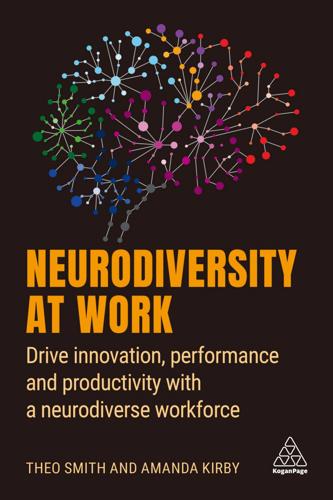
Neurodiversity at Work: Drive Innovation, Performance and Productivity With a Neurodiverse Workforce
by
Amanda Kirby
and
Theo Smith
Published 2 Aug 2021
The future could be anything from building and designing Lego buildings, or creating a working world in Minecraft, to answering technical questions or showing how you can solve real-world problems. It’s no secret that GCHQ have been known for their interest in those who think differently for some time, and they take a fun approach to creating challenges that are open to many, to not-so-secretly find the few who could make the cut as the next 007 agent!7 The Dutch military are also looking at actual game behaviour in games like Minecraft and League of Legends to predict potential fit for military jobs. There are also experiments with this technology within the social services.
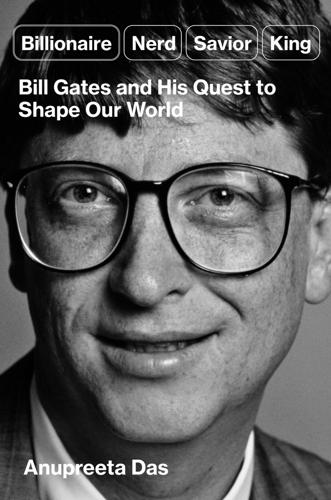
Billionaire, Nerd, Savior, King: Bill Gates and His Quest to Shape Our World
by
Anupreeta Das
Published 12 Aug 2024
In the hit show Stranger Things, the character Max is accepted by geeky middle-school boys after she outscores them in a video game. There is also an emphasis on gaming, regularly mentioned in the biographies of tech company founders as though it were a rite of passage. Fantasy role playing games like RuneQuest and Dungeons & Dragons, creative video games like Minecraft, multiplayer games like World of Warcraft, and the abiding power of science fiction movies like Star Trek are part of the picture—an echo of Brand’s university students and computer hobbyists who spent hours playing Spacewar. Just to take one example: Fred Ehrsam, a founder of the cryptocurrency exchange Coinbase, spent thousands of hours growing up playing World of Warcraft, which is how he learned about digital currency early on, according to Forbes.
…
L., 17 Japan, 24 Jassy, Andy, 85 Jay Gatsby (fictional character), 235 Jenner, Edward, 173 Jobs, Eve, 158 Jobs, Laurene Powell, 158, 204, 263 Jobs, Steve, 36, 92–93, 158 see also Apple Johns Hopkins University, 201 Johnson, Boris, 175 Jones, Alex, 246 Joy of Painting, The, 243 JPMorgan Chase, 229–231, 232 Juniper Networks, 33 Just Giving (Reich), 187 Justice Department, see Department of Justice Kalbfleisch, Dorrise, 217–219, 221, 225 Kanter, Jonathan, 86 Kapor, Mitch, 63, 84–85, 156 Kay, Alan, 39 Kennedy, Robert F., Jr., 248 Khan, Lina, 85 Kidder, Tracy, 40 Kiesling, Lydia, 17 King, Gayle, 163–164 Kingdom Holding Company, 213–214 Kirk, Jennifer M., 220–221 Kirkland, Wash., 210 Kirkpatrick, David, 160 Kitsap Sun, 268 KKR (private equity firm), 269 Klawe, Maria, 242–243 Kleiner Perkins, 57 Knight, Phil, 11, 139 Koch brothers, 245, 272 Kraft Heinz, 13 Krawcheck, Sallie, 165 Krueger, Alan B., 264 Kubrick, Stanley, 59 Kumar, Nitish, 200 Kurdziel, Michael, 202 Kurosawa, Akira, 44 Kvas, Kathryn, 249–250 Laguna Beach, Calif., 117 Lakeside School, 51, 66, 261 Lamb, Natasha, 239–241 Land Report, The, 214 Lanai, Hawaii, 154 Lapham, Lewis, 14 Larson, Michael, 208–221 Lasker-Bloomberg Public Service Award, 163 L Brands, 231 Leiweke, Tod, 208 Lemann, Jorge Paulo, 13 Leno, Jay, 65 Lenox Foundation, 120 Leonardo da Vinci Codex, see Codex Leicester Levy, Steven, 97 Ley, Haven, 153 libraries, 98 Lilly Family School of Philanthropy, 21, 29, 170, 202 LinkedIn, 54, 205 Llewellyn, Ann, 210 lobbying, 85 London Summit on Family Planning, 150–151 Loomis, Carol, 120 Loot (TV show), 145 Los Angeles Times, 273 Lotus 1-2-3, 63 Lotus Development Corporation, 63 Lou Gehrig’s disease, 24 Love Don’t Cost a Thing (film), 51 Luke, Gospel of, 167 LVMH (Möet Hennessy Louis Vuitton), 133 Lynas, Mark, 190 Lynch, David, 267 MacAskill, William, 190, 205 Mackey, John, 266 Macmillan (publisher), 166 Made in America (Walton), 17 Magna Carta, 26 “Magnificent Seven,” 44 Mahajan, Manjari, 199 “Making Microsoft Safe for Capitalism” (Gleick), 63 malaria research, 89–90, 276–277 “maleness,” 56–57 Malik, Om, 84 Malone, John, 214 March of Dimes, 24 marriage, 158–159 Masiyiwa, Strive, 193 Massachusetts, 258 Massachusetts Institute of Technology, see MIT Masters, Blake, 272 Mayer, Oscar, 261 McAllister, Ward, 16 McCarthy, Joseph, 245 McCollim, Elena M., 136 McDonald’s, 200, 215 McGoey, Linsey, 185 McNamee, Roger, 213 McNealy, Scott, 41 McVeigh, Timothy, 245 Medina, Wash., 156 Medtronic, 220 mega-donors, 28–29 Menlo Park, Calif., 72 Merkel, Angela, 175 Meta, 10, 18, 44, 84, 85 #MeToo movement, 240 Metropolitan Correctional Center, 231 Metropolitan Museum of Art, 28 Miami Herald, 231 Microsoft and antitrust, 71, 73–74, 79 board of directors, 161 culture of, 25, 68, 78, 111 early years of, 31–37, 41–42, 44 FTC consent decree, 71, 73–74 lawsuit, 238–239 lobbying of, 85 market dominance of, 64–65, 76–79, 81 partnership with Apple, 93 and public relations, 81–82 sexual harassment at, 238–243 stock, 42 see also specific products, e.g., Windows Microsoft Azure, 84, 87 Miller, Bill, 215 Miller, Lauren, 107 Milken, Michael, 40 Minecraft (game), 51 Mister Rogers, see Rogers, Fred MIT (Massachusetts Institute of Technology), 39, 69, 232–233, 247 MIT Media Lab, 222, 232 MITS-Altair, 34 mobile phones, see iPhones Modi, Narendra, 194–195, 198–200 Möet Hennessy Louis Vuitton (LVMH), 133 Mohanan, Manoj, 184–185, 200 Moment of Lift, The (French Gates), 143, 155 Moment of Lift books, 166 Money, 72 Moniz, Amanda B., 22 Monsanto, 119 Morgan, John Pierpont, 20 Morning Consult, 258 Mosaic, 42 Moskovitz, Dustin, 206 Motsepe, Patrice, 223 Mount Sinai Hospital (New York), 158 Moussouris, Katie, 238–239 Movie Maker, 69 MS-DOS, 35 Muglia, Bob, 33, 78, 80 Muise, Doug, 52 Murdoch, Rupert, 10 Musk, Elon, 45, 53–56, 58, 269 Myhrvold, Nathan, 75, 222–223, 228 myths, around start-up founders, 47–49 Nadella, Satya, 86–87, 195, 242–243 NaMo app, 198 Nassar, Nayel, 158 National Archives, 26 National Center for Supercomputing Applications, 42 National Committee for Responsive Philanthropy, 138 National Institute of Allergy and Infectious Diseases (NIAID), 175, 248 National Institutes of Health (NIH), 177, 182 National Medal of Technology, 70 National Museum of American History, 22 National Nutrition Mission, 198 National Philanthropic Trust, 27 National Register of Historic Places, 47 Neilson, Trevor, 99, 179, 202–203 Nelson, Willie, 154 Nerdle, 107 nerds, 37–38, 50–54 Netflix, 44, 103, 187, 256 NetJets, 117 Netscape, 43, 64, 74 Netscape Navigator, 76–77 New England Journal of Medicine, The, 247 New School for Social Research, 199 Newsweek, 97 Newtown, Conn., 246 New York City, 21 New Yorker, The, 84, 190, 232–233, 250 New York magazine, 237 New York Mets, 273 New York Public Library, 26, 119–120, 122–123 New York State, 258 New York Times, The, 16, 43, 50, 190, 219, 237, 259 New York Times Magazine, The, 17, 63 New York University, 187, 244 New York World, The, 24 New York World’s Fair, 10 NeXT, 92 “Next Bill Gates Won’t Look Like the Last One, The” (French Gates), 171 “Next Outbreak?
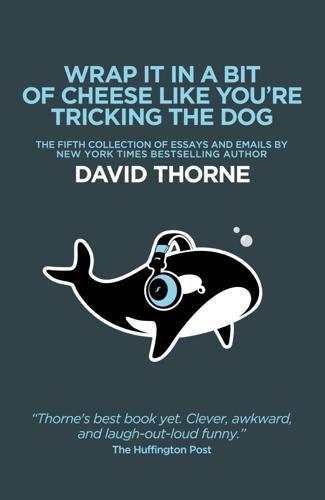
Wrap It In A Bit Of Cheese Like You're Tricking The Dog: The fifth collection of essays and emails by New York Times Best Selling author David Thorne
by
David Thorne
Published 3 Dec 2016
She was wearing some kind of purple velvet dress that ended just above her knees, striped black & white knee-high stockings, and cherry Doc’s with four-inch soles. I thought there might be a bit of running around that day so I’d dressed in cargo shorts, t-shirt and sneakers. Simon was wearing a red Adidas track suit, purchased a decade earlier during a hip-hop phase, while the teens all wore skinny jeans and Call of Duty t-shirts - apart from one in a Minecraft singlet who mustn’t have got the memo. After signing waivers and being instructed on how to use the masks and paintball guns, the eight of us were sent into a room with benches to wait for the other team to arrive. We probably should have used that time to discuss strategy but I doubt it would have made a difference.
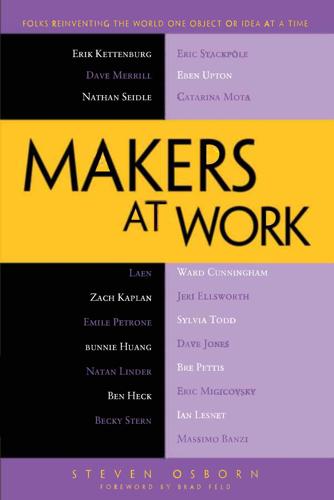
Makers at Work: Folks Reinventing the World One Object or Idea at a Time
by
Steven Osborn
Published 17 Sep 2013
She used to use cardboard and glue and X-Acto knives to design things. Now she just makes things digitally and prints out this amazing model—making set furniture on her MakerBot, and then she has a whole side business where she sells dollhouse furniture. Super cool. There’s a whole bunch of folks using Minecraft as a modeling tool. That’s super cool, they just build things in Minecraft, then print it. They’re using MakerBot in the Natural History Museum to scan dinosaur bones. Then the art museum scans precious works of art that nobody can ever touch, so they can make copies of it that people can touch. Osborn: My favorite project I think I found on Thingiverse is OpenRC.7 Pettis: Yeah, the RC car.
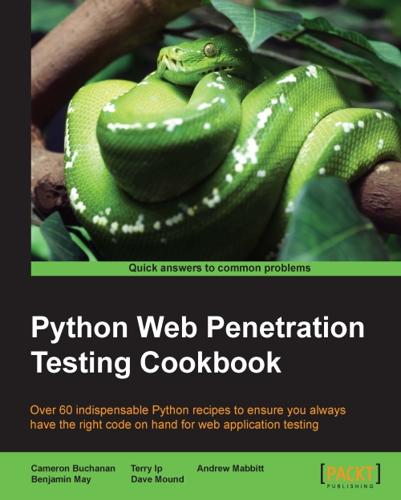
Python Web Penetration Testing Cookbook
by
Cameron Buchanan
,
Terry Ip
,
Andrew Mabbitt
,
Benjamin May
and
Dave Mound
Published 28 Jun 2015
./]{1,}$"), ("MD5(Joomla)", r"^[a-fA-F0-9]{32}:[a-zA-Z0-9]{16,32}$"), ("MD5(Wordpress)", r"^\$P\$[a-zA-Z0-9\/\.]{31}$"), ("MD5(phpBB3)", r"^\$H\$[a-zA-Z0-9\/\.]{31}$"), ("MD5(Cisco PIX)", r"^[a-zA-Z0-9\/\.]{16}$"), ("MD5(osCommerce)", r"^[a-fA-F0-9]{32}:[a-zA-Z0-9]{2}$"), ("MD5(Palshop)", r"^[a-fA-F0-9]{51}$"), ("MD5(IP.Board)", r"^[a-fA-F0-9]{32}:.{5}$"), ("MD5(Chap)", r"^[a-fA-F0-9]{32}:[0-9]{32}:[a-fA-F0-9]{2}$"), ("Juniper Netscreen/SSG (ScreenOS)", r"^[a-zA-Z0-9]{30}:[a-zA-Z0- 9]{4,}$"), ("Fortigate (FortiOS)", r"^[a-fA-F0-9]{47}$"), ("Minecraft(Authme)", r"^\$sha\$[a-zA-Z0-9]{0,16}\$[a-fA-F0- 9]{64}$"), ("Lotus Domino", r"^\(?[a-zA-Z0-9\+\/]{20}\)?$"), ("Lineage II C4", r"^0x[a-fA-F0-9]{32}$"), ("CRC-96(ZIP)", r"^[a-fA-F0-9]{24}$"), ("NT crypt", r"^\$3\$[a-zA-Z0-9./]{8}\$[a-zA-Z0-9./]{1,}$"), ("Skein-1024", r"^[a-fA-F0-9]{256}$"), ("RIPEMD-320", r"^[A-Fa-f0-9]{80}$"), ("EPi hash", r"^0x[A-F0-9]{60}$"), ("EPiServer 6.x < v4", r"^\$episerver\$\*0\*[a-zA-Z0-9]{22}==\*[a- zA-Z0-9\+]{27}$"), ("EPiServer 6.x >= v4", r"^\$episerver\$\*1\*[a-zA-Z0- 9]{22}==\*[a-zA-Z0-9]{43}$"), ("Cisco IOS SHA256", r"^[a-zA-Z0-9]{43}$"), ("SHA-1(Django)", r"^sha1\$.{0,32}\$[a-fA-F0-9]{40}$"), ("SHA-1 crypt", r"^\$4\$[a-zA-Z0-9./]{8}\$[a-zA-Z0-9./]{1,}$"), ("SHA-1(Hex)", r"^[a-fA-F0-9]{40}$"), ("SHA-1(LDAP) Base64", r"^\{SHA\}[a-zA-Z0-9+/]{27}=$"), ("SHA-1(LDAP) Base64 + salt", r"^\{SSHA\}[a-zA-Z0- 9+/]{28,}[=]{0,3}$"), ("SHA-512(Drupal)", r"^\$S\$[a-zA-Z0-9\/\.]{52}$"), ("SHA-512 crypt", r"^\$6\$[a-zA-Z0-9./]{8}\$[a-zA-Z0-9./]{1,}$"), ("SHA-256(Django)", r"^sha256\$.{0,32}\$[a-fA-F0-9]{64}$"), ("SHA-256 crypt", r"^\$5\$[a-zA-Z0-9./]{8}\$[a-zA-Z0-9./]{1,}$"), ("SHA-384(Django)", r"^sha384\$.{0,32}\$[a-fA-F0-9]{96}$"), ("SHA-256(Unix)", r"^\$5\$.{0,22}\$[a-zA-Z0-9\/\.]{43,69}$"), ("SHA-512(Unix)", r"^\$6\$.{0,22}\$[a-zA-Z0-9\/\.]{86}$"), ("SHA-384", r"^[a-fA-F0-9]{96}$"), ("SHA-512", r"^[a-fA-F0-9]{128}$"), ("SSHA-1", r"^({SSHA})?
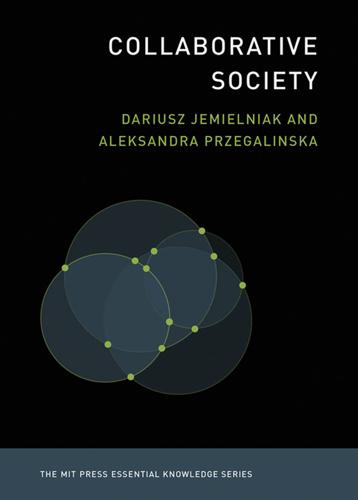
Collaborative Society
by
Dariusz Jemielniak
and
Aleksandra Przegalinska
Published 18 Feb 2020
Yet such a focus overlooks other endeavors, like Couchsurfing or Airbnb, typically associated with the ongoing, major social turn toward collaboration, and it omits as well a consideration of the performative aspects of this change. Production may be a side effect of content-sharing portals such as 9GAG or Imgur, even if production is the main reason for their popularity. These new initiatives grow out of the fun we derive from cooperating with others, sometimes with no concrete end product at all. Take the game Minecraft or the programming language Scratch, for instance, where the joys of performing a task together may well prevail over the concrete outcomes of individual projects.43 Some authors who recognize the importance of the cooperative process propose the term collaborative consumption.44 But we believe that consumption, like production, is not best word with which to capture the value of changes we’re experiencing as a result of the so-called sharing economy.

100 Things We've Lost to the Internet
by
Pamela Paul
Published 14 Oct 2021
(Remember gift certificates—those oversized rectangles of stiff paper, calligraphed by hand with a colored fountain pen while you watched, wishing it could be for you rather than the birthday girl? You’d stand by mesmerized as the salesperson magically wrapped your purchase, even a gift certificate, curling the ribbons with the edge of a scissors in a way impossible to replicate at home.) Most of the time, the iPad is the toy and the game. Online playdates (meeting in Minecraft, for example, or via Discord) are replacing physical ones. Yesterday’s kids, the ones who collected baseball cards and gathered for board games labeled “12 and up,” have morphed into kids who scoff at “playing” anything other than videogames by the time they are eleven; they want to play what their parents are often playing.
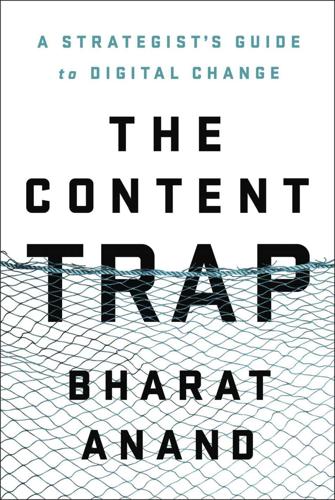
The Content Trap: A Strategist's Guide to Digital Change
by
Bharat Anand
Published 17 Oct 2016
Craigslist beat rivals, and VHS won out over Betamax, not because those companies had superior products but because they had larger network shares early on. Social videogames like Zynga’s FarmVille and CityVille or, more recently, Mojang’s Minecraft are not notable for high-quality graphics, 3-D functionality, or riveting gaming experiences—their features are bleak compared with Electronic Arts’ Madden NFL and Blizzard Entertainment’s World of Warcraft. But each of the Zynga games commanded more than ten million viewers within a few months of launch—a feat that took EA and Blizzard years; and Minecraft became the second-bestselling videogame of all time. Success came in each case not from making these games perfect but from making them networked.
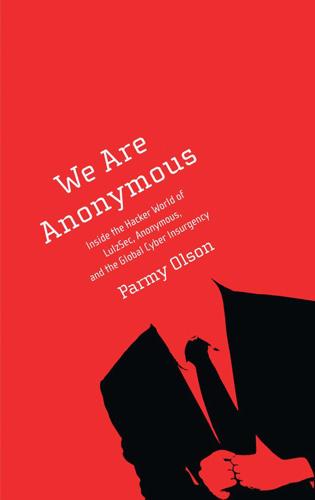
We Are Anonymous: Inside the Hacker World of LulzSec, Anonymous, and the Global Cyber Insurgency
by
Parmy Olson
Published 5 Jun 2012
The hotline was suddenly inundated with calls, and the three people that initially got through all requested gaming companies: Eve, Minecraft, and League of Legends. Within minutes, Ryan’s botnet had hit all three, as well as a site called FinFisher.com, “because apparently they sell monitoring software to the government or some shit like that.” DDoSing sites like this was nothing new, and neither was one or two hours of downtime, but it was the first time anyone had boasted about it to a hundred fifty thousand Twitter followers or referred to it as a DDoS party called Titanic Takeover Tuesday. “If you’re mad about Minecraft, we’d love to laugh at you over the phone,” Topiary announced.
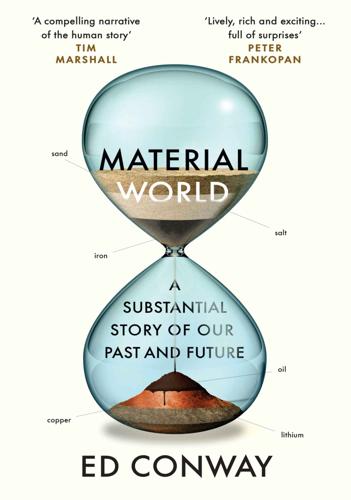
Material World: A Substantial Story of Our Past and Future
by
Ed Conway
Published 15 Jun 2023
They both use what’s known as the ‘room and pillar’ method: pillars of sand or salt are left in place to hold up the ceiling of each ‘room’. Except that here the scale was massive and while the tunnels under Lochaline felt somewhat organic, as if a giant mole had burrowed into the rock, the walls and roofs in Winsford were unnervingly perpendicular, a little like in the computer game Minecraft . As we drove I spotted side alleys where ancient-looking vans and machines were sitting, covered in salt dust. ‘That’s where we dump all the old equipment,’ said Chris. ‘Once it’s down it never comes out. Including us if I can’t find our way out. Now,’ he added as he stopped the car, ‘let me show you the roof.’
…
We drove further into the darkness until we bumped at the bottom, turned a corner and found ourselves at the mine head. Here, a gigantic continuous mining rig, a great orange monster with tungsten carbide teeth, was gnawing away the salt with such precision that it left that square, blocky finish. Fittingly, given it felt like we were inside a session of Minecraft , the man behind the rig was controlling the 200-tonne beast with what Chris called a ‘glorified PlayStation controller’. He pushed the joystick with his thumb and it lurched forward into the rockface, spewing chunks of salt on to a conveyor belt, which sent it hurtling back towards the mine shaft.

Navel Gazing: True Tales of Bodies, Mostly Mine (But Also My Mom's, Which I Know Sounds Weird)
by
Michael Ian Black
Published 5 Jan 2016
I look for animal tracks in the snow but see none. I stand and stretch and straighten out my scoliosis shoulder. I roll my head around my neck, my joints cracking like popping corn. I do a quick inventory of my family. Everybody is where they should be: here, safe and warm. Elijah is on the computer playing Minecraft. Ruthie is in her room gabbing to one of her friends on the iPad I told her I would not buy her but did anyway. Martha reads the Sunday Times in the living room, a blanket Santa brought tucked around her waist. I head upstairs and throw on some sweats and a long-sleeve technical shirt and my puffy black vest.
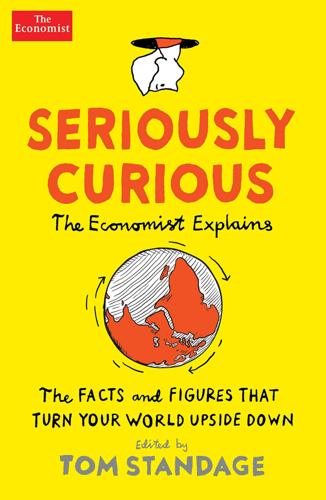
Seriously Curious: The Facts and Figures That Turn Our World Upside Down
by
Tom Standage
Published 27 Nov 2018
Their goal is to develop “smart glasses” that can project three-dimensional images in the user’s field of vision that appear to blend perfectly into the real world. For now, the firm that has made the most progress is Microsoft. Its HoloLens headset is a self-contained computer that uses a suite of sensors to build a 3D model of the world around it. It can then do everything from placing a set of virtual “Minecraft” blocks onto a kitchen table to generating virtual cadavers for anatomy students to study. Other companies are interested, too. Magic Leap, a startup based in Florida, has attracted $2.3bn in investment to develop a similar technology. Facebook, which bought Oculus, a VR company, for $2bn in 2014, says its ultimate goal is to produce a set of glasses that can do both VR and AR at the same time.
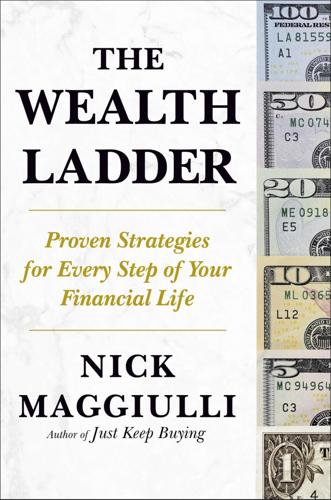
The Wealth Ladder: Proven Strategies for Every Step of Your Financial Life
by
Nick Maggiulli
Published 22 Jul 2025
What You’re Good At + What You’re Interested In If you work on something that you’re good at and that you’re interested in, you will probably find a way to make money on it. Maybe not today, but eventually. This describes the journey of YouTuber James “Jimmy” Donaldson, aka MrBeast. Donaldson started his channel in 2012 when he was just fourteen years old by posting videos about Minecraft and other video games. This wasn’t just a fun side project for Donaldson though. He wanted to make a career out of it. So he studied the YouTube algorithm for a thousand days to get better at making videos. In that time, he examined every detail about what it takes to make a great YouTube video.
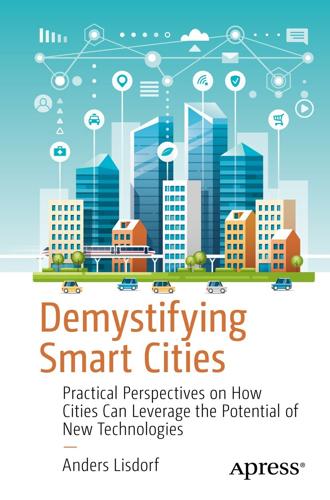
Demystifying Smart Cities
by
Anders Lisdorf
Turing, Mind 49, 433–460, 1950 The Hundred-Page Machine Learning Book , Andriy Burkov, 2019 Chapter 6 Diffusion of Innovations (5th edition) , Rogers, Everett M., Free Press, 2003 https://commons.wikimedia.org/wiki/File:Diffusion_of_ideas.svg (September 25, 2019) the source of Figure 6-1 Chapter 7 Yes is More: An Archicomic on Architectural Evolution , Bjarke Ingels, Taschen 2009 www.youtube.com/watch?v=cIsIKv1lFZw (September 27, 2019) a video by Bjarke Ingels: architecture should be more like Minecraft Chapter 8 The Power of Habit: Why We Do What We Do, and How to Change , Charles Duhigg, Random House, 2013 Chapter 9 Scoring Points, How Tesco Continues to Win Customer Loyalty , Clive Humby, Terry Hunt and Tim Phillips, Kogan Page, 2008 The World’s Most Valuable Resource is no longer Oil but Data , The Economist, May 6th 2017 Enterprise Integration Patterns , Gregor Hohpe and Bobby Woolf, Addison Wesley, 2003 The Data Warehouse Toolkit: The Definitive Guide to Dimensional Modelling, Ralph Kimball and Margy Ross, Wiley 2013 Hadoop: The Definitive Guide, Tom White, O’Reilly Media, 2015 Chapter 10 www.wired.com/2010/11/1110mars-climate-observer-report/ (October 2, 2019) a story about the Mars Climate Orbiter’s crash https://bleacherreport.com/articles/2760821-olympic-mens-alpine-skiing-results-2018-medal-winners-for-slalom (October 2, 2019) the results of the 2018 Olympic show a difference less than 1.5 seconds between number 1 and 10 https://home.cern/science/computing/processing-what-record (October 2, 2019) a description of what the Large Hadron Collider processes Chapter 11 The Magical Number Seven, Plus or Minus Two Some Limits on Our Capacity for Processing Information , George A.

Survival of the Richest: Escape Fantasies of the Tech Billionaires
by
Douglas Rushkoff
Published 7 Sep 2022
The cohort who solicited my doomsday advice readily admitted they were “low-level billionaires” who could at best hitch a ride with Elon Musk, Richard Branson, or Jeff Bezos—who are themselves still at least a few generations away from colonizing anything. Offering a slightly more reasonable techno-utopian escape fantasy, the “seasteading” movement—publicized in a flurry of maga zine stories a few years ago—promises a sustainable solution to a world of climate catastrophe, social chaos, and economic collapse. In the Minecraft-meets-Waterworld future envisioned by “aquapreneurs ,” wealthy people are to live in independent, free-floating city-states—giant clusters of high-tech rafts using clean, renewable ocean thermal energy to power themselves and escape from a civilization of oil-drilling land dwellers. The hype around these initiatives may have died down, but several billionaires and even some legitimate organizations including the United Nations and MIT are still hard at work on humanity’s return to the sea .

Troublemakers: Silicon Valley's Coming of Age
by
Leslie Berlin
Published 7 Nov 2017
If Sun drew power from the waves of innovation that preceded it, the company also created momentum for those that came after. Sun’s legacy is more than a fading logo on the back of a sign. Sun’s Java programming language runs beneath millions of websites and applications, in web-based applications such as Google Docs, in financial trading systems, and in video games such as Minecraft. Among the more than 250,000 people who worked at Sun are the former CEOs of Google, Yahoo!, and Motorola.7 Sun’s cofounders went on to fund new generations of technology companies. Vinod Khosla has backed dozens of startups as a venture capitalist, first at Kleiner Perkins Caufield & Byers and later at Khosla Ventures.
…
“Lick,” 10–17, 22–25, 92, 106, 226–27, 289, 342 Licklider, Louise, 11 Liddle, David, 288, 369 Life, 3 LINUX operating system, 364 Lobban, Peter, 263 lobbying, xiii, xiv, 254–55, 366, 373 Lockheed, 3, 42, 45, 56 Loewenstern, Walter, 44 Los Altos, Calif., 75, 154, 181, 209, 322 Los Angeles, Calif., 41–42, 52, 69, 81, 86–87, 130 Los Angeles Times, 303 McColough, Peter, 216 McKenna, Regis, xi, 147–48, 209, 238–39, 254n, 257, 293, 302, 322, 373–74 McMurtry, Burt, 315–19 Madden NFL game, 347 Magnavox, 112, 130 magnetic resonance imaging (MRI), 349, 351 mainframe computers, 65–68, 79n, 86 management information systems, 247 MANMAN manufacturing software, 84–87, 102n, 176–81, 184–86, 259n, 314, 318n, 321–22, 360, 364, 371 manufacturing businesses, 74, 78–79, 83, 88, 160, 253, 313 marketing, 50–53, 61–62, 75, 79, 102, 129–30, 147–50, 180–82, 232, 269 Markkula, Armas Clifford “Mike,” 47–54, 146–54, 206–14, 232–33, 292–307, 371–73 Apple Computer and, xv, 50, 154, 206–12, 292–307, 357–59 as engineering student, 47–49 at Fairchild Semiconductor, 47–54, 146, 149–50, 154, 232–34 family of, 49, 146, 152–53, 232, 298–300, 372 at Hughes Aircraft, 47–51, 146, 180 at Intel, 51–54, 89, 146–54, 193 retirement plans of, 152–54 Silicon Valley network of, 47–50, 53–54, 147–52, 213 Markkula, Linda, 49, 146, 152–53, 232, 298–300, 37 Markkula Center for Applied Ethics, 372 Martin Marietta, 10 Massaro, Don, 288 Mattel, 274, 345–46 Maurer, Rick, 344 MAXC computer, 101–6 Maxfield, Bob, 44, 160–63, 313 Mayer, Steve, 169, 171n, 173 Melchor, Jack, 45 memory chips, 53–54, 64 Meninsky, Carla, 275, 278 Menlo Park, Calif., 27, 55, 210, 291 mentors, mentoring, xii, 38, 128, 153–54, 197, 370 see also entrepreneurs, network of mergers and acquisitions, 168–75, 269–74, 353–55, 364, 370–71 Mertz, Janet, 136n, 263 Metaphor Computer Systems, 288 Metcalfe, Bob, 96–98, 103, 288n Mexico, 41, 50, 162 microchip companies, see semiconductor industry microprocessors, 54, 73–74, 147–48, 169–70, 213, 238–39, 306, 347 Microsoft, 96, 224, 288, 306, 366, 369 Middleton, Fred, 192n, 256n, 261 Miller, Al, 277, 278n Minecraft game, 365 minicomputers, 74, 85–86, 91, 176–80, 186, 208, 222, 314, 357, 371 missile systems, 10, 45 MIT, 11, 15–19, 30, 62, 74, 91, 108, 190–91, 289 Mitchell, Jim, 96 MITS (company), 211 mobile phones, 38, 367 molecular biology, 141, 194 Molecular Biology of the Gene (Watson), 138 Moore, Fred, 211, 284 Moore, Gordon, 51, 126n–27n, 149, 190n, 213 Morgan Stanley, 293, 296, 303n Morse, Wayne, 30 MOS Technology, 169, 212n Motorola, 48, 365 Mott, Tim, 105 Mountain View, Calif., 49, 107, 110, 207 Nader, Ralph, 135 NASA, 11, 23, 26 NASDAQ, 262, 320 National Academy of Engineering, 376 National Academy of Sciences, 93, 142–43, 188 National Guard, 35–36 National Institutes of Health, 58, 188, 265 National Medal of Science, 93 National Medal of Technology, 376 National Office Machine Dealers Association, 286 National Safety Council, 172 National Science Foundation, 58, 134, 142, 351 National Semiconductor, 51–53, 127, 147, 154, 213, 234–35, 241, 255, 313 National Venture Capital Association (NVCA), 254, 293n Natural Resources Defense Council, 187 Navy, U.S., 48, 58 NBC News, 158 Nelson, Ted, 95 Newman, Frank, 60–63 Newsweek, 344, 358, 372 New York, N.Y., 59, 81, 168, 230 New Yorker, 246, 351 New York Stock Exchange, 4–5, 317 New York Times, 133, 157, 172, 187, 257, 264n, 347, 371 NeXT, 372 Nintendo, 348 Nixon, Richard, 37, 120, 143, 158 NLS (oNLine System), 24 Nobel Prize, 133, 144, 188, 190, 193, 258, 263–64 Noyce, Robert, xi, 51, 54, 126n–27n, 129, 149, 190n, 235, 254n, 285, 302 Nutting Associates, 116 Office of Naval Research, 58 Opalka, Josephine, 138–40, 204 “Open Letter to Hobbyists” (Gates), 212 Oracle, 38, 78, 185, 364, 371 orchards, 4, 43, 46, 49, 149, 180, 370 order-processing systems, 148–49, 247 original equipment manufacturers (OEMs), 186 Ornstein, Severo, 95, 100 Orwell, George, 158 Osborne Computer, 358 Oshman, Ken, 44–46, 165, 319–22, 371 Packard, David, xi, 86, 254n, 255 packet switching, 21 PAC-MAN game, 345 Page, Larry, xii, 351 Pake, George, 94–95, 101, 217–23, 335–39 Palevsky, Max, 93n, 101 Palo Alto, Calif., 74, 80–84, 89, 93, 179, 207, 216–18, 221, 225, 235, 334, 342, 369 Palo Alto Research Center (PARC), xii–xiii Pake as director of, 94–95, 101, 217–21 Scientific Data Systems and, 90, 93, 101–2, 149, 215, 249 Sun technology and, 364 and women in workforce, 99–101 Palo Alto Research Center (PARC), Computer Science Laboratory at, 89–106, 146, 157, 213–14, 215–24, 285, 289 Alto system and, 92, 101–6, 141, 146, 215–17, 221–24, 285–88, 334 “dealer” meetings at, 99–103, 226, 340 personal computers and, 91–92, 101–6 paperless office, 224 Patent and Trademark Office, U.S., 144 patents, 59–62, 112, 132–37, 142–44, 157, 187–89, 257, 263, 349, 374 Peddle, Chuck, 212n People’s Park, 33–35, 55–56, 211, 226 peripheral devices, 209–10, 230, 246 Perkins, Tom, 128, 190–93, 197, 200–201, 254–60, 263 personal computers, xii, xv, 74, 91, 101–6, 141, 148, 213, 231, 239, 246–50, 269, 285, 301–3, 358, 366 pharmaceutical companies, 189, 235, 256–58, 266, 375 Philco-Ford, 58–59 pinball machines, 109, 113–14, 117–18, 273 Pitfall!
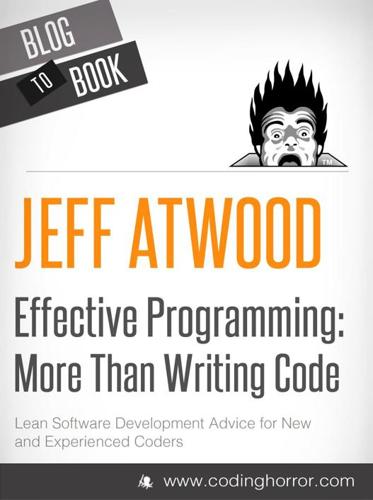
Effective Programming: More Than Writing Code
by
Jeff Atwood
Published 3 Jul 2012
I’m hesitant to recommend any particular approach to coding other than the fundamentals as outlined in Code: The Hidden Language of Computer Hardware and Software, because I’m not sure we’ll even recognize coding in the next 20 or 30 years. To kids today, perhaps coding will eventually resemble Minecraft, or building levels in Portal 2. But everyone should try writing a little code, because it somehow sharpens the mind, right? Maybe in the same abstract way that reading the entire Encyclopedia Brittanica from beginning to end does. Honestly, I’d prefer that people spend their time discovering what problems they love and find interesting, first, and researching the hell out of those problems.

Flask Web Development: Developing Web Applications With Python
by
Miguel Grinberg
Published 12 May 2014
I’m also in debt to David Baumgold, Todd Brunhoff, Cecil Rock, and Matthew Hugues, who reviewed the manuscript at different stages of completion and gave me very useful advice regarding what to cover and how to organize the material. Writing the code examples for this book was a considerable effort. I appreciate the help of Daniel Hofmann, who did a thorough code review of the application and pointed out several improvements. I’m also thankful to my teenage son, Dylan Grinberg, who suspended his Minecraft addiction for a few weekends and helped me test the code under several platforms. O’Reilly has a wonderful program called Early Release that allows impatient readers to have access to books while they are being written. Some of my Early Release readers went the extra mile and engaged in useful conversations regarding their experience working through the book, leading to significant improvements.

Come and Take It: The Gun Printer's Guide to Thinking Free
by
Cody Wilson
Published 10 Oct 2016
When I woke, I was looking up at some great bearded programmer with a cigarette hanging from his mouth. “Where is Amir?” I asked. He finished exhaling smoke with a purse of his lips. “Who is Amir?” Slumped and unmoving on the ratty couch, I looked over slowly to watch some hollow-cheeked curiosity hunched over his keyboard playing Minecraft. The blue light blanked the lenses in his glasses and his mouth was agape. “What do you do?” My eyes traveled back to the moldering Teuton. “You know 3D printing?” “Mmm.” He blew smoke. “I’m the guy printing the gun.” He nodded, tapped his cigarette on a glass tray, and said something in German to the boy digging in the digital sandbox.
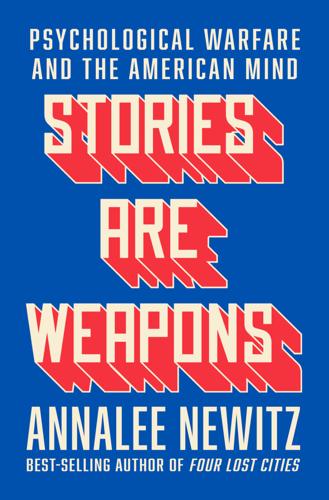
Stories Are Weapons: Psychological Warfare and the American Mind
by
Annalee Newitz
Published 3 Jun 2024
Anti-trans ideology insinuated its way into public policy, and I started to make lists of states where my friends and I couldn’t go to the bathroom, couldn’t get health care, couldn’t speak publicly without risking arrest for being in “drag.” It wasn’t just scary—it was absurd. Around this time, an avowedly racist Air Force National Guardsman leaked classified US intelligence about the Ukraine War on a Discord server devoted to the game Minecraft. I felt like I was in a war zone, or maybe a satirical movie about a war zone, waiting for the next bomb to drop. Through it all, I was trying to write my way out of the terror and confusion. I knew that I had to stop living in the moment, stop feeling the dread, and put what was happening to the United States in a deeper context.
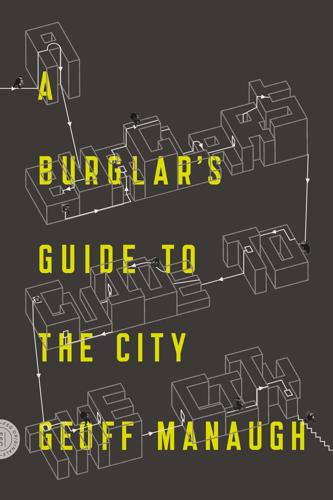
A Burglar's Guide to the City
by
Geoff Manaugh
Published 17 Mar 2015
We left the main office and walked back into the attached workshop to see one of Alizade’s contraptions standing in the center of the warehouse. The unrelentingly gray, bunker-like box consisted of several dozen two-foot-square panels bolted together like a cubist armadillo. It was pieces attached to pieces attached to pieces. If ever a structure seemed to have been designed using Minecraft, this was it. Alizade was clearly happy with his product, as well as delighted by the visible scars left on its side from unsuccessful attacks by prospective clients. He even urged me to pick up a sledgehammer—several were lying about—and try it out myself, to drive home how pointless such an attack would be.
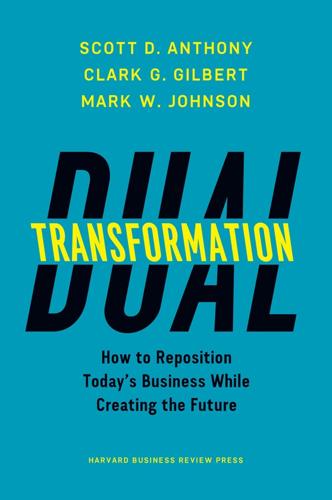
Dual Transformation: How to Reposition Today's Business While Creating the Future
by
Scott D. Anthony
and
Mark W. Johnson
Published 27 Mar 2017
Benioff also has inverse mentors, with completely different experience sets, such as Black Eyed Peas superstar and music entrepreneur will.i.am. In times of disruption, reverse and inverse mentors will help you see things you couldn’t otherwise see. And yes, parents, this is your excuse to play Minecraft with your kids. Learn to Code In 2008, Dave Gledhill became the group executive and head of group technology and operations at DBS Bank, a leading Singapore-based bank that, as of the writing of this book, had more than S$400 billion in assets and a market capitalization of about S$50 billion (roughly US$300 billion and US $35 billion).

Prediction Machines: The Simple Economics of Artificial Intelligence
by
Ajay Agrawal
,
Joshua Gans
and
Avi Goldfarb
Published 16 Apr 2018
In the case of video games, because the goal (maximizing score) is closely related to prediction (will this move increase or decrease the score?), the automated process does not separately need judgment. The judgment is the simple recognition that the objective is to score the most points. Teaching a machine to play a sandbox game like Minecraft or a collection game like Pokemon Go would require more judgment, since different people enjoy different aspects of the games. It isn’t clear what the goal should be. 8. Chesley “Sully” Sullenberger quoted in Katy Couric, “Capt. Sully Worried about Airline Industry,” CBS News, February 10, 2009; https://www.cbsnews.com/news/capt-sully-worried-about-airline-industry/. 9.
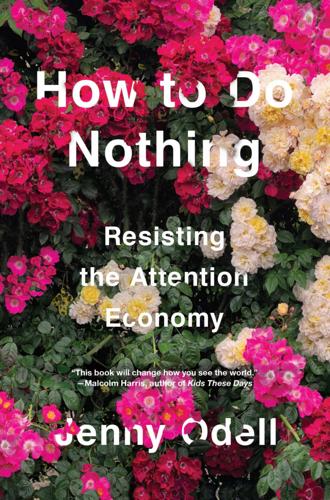
How to Do Nothing
by
Jenny Odell
Published 8 Apr 2019
Thus, the project involved not only tearing down a structure but building a riverbed from scratch. Drone footage of the new riverbed is surreal. The project engineers designed a series of cascading pools specifically to be trout-friendly, but without anything yet growing around the artificial banks, it looked like something from Minecraft. Meanwhile, those hoping for a dramatic demolition of the dam were met with disappointment. Once the river had been successfully rerouted, six excavators and two sixteen-thousand-pound pneumatic hammers arrived and proceeded to slowly and arduously pick away at the concrete structure, turning it into dust bit by bit.
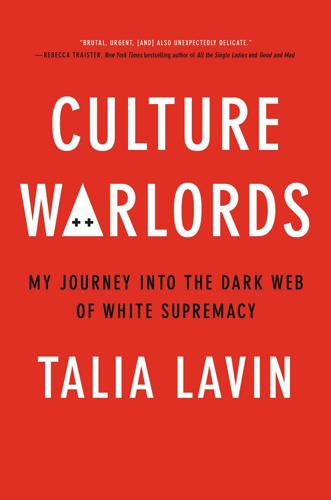
Culture Warlords: My Journey Into the Dark Web of White Supremacy
by
Talia Lavin
Published 14 Jul 2020
They frequently appealed to an ur-Jew named “Shlomo”: one user in Gen Z Y K L O N lamented his own habit of sleeping in by saying he was behaving “like a minority” and vowed to do better. “Not today shlomo [sic],” he wrote, “not today. Time to get up and prepare for the coming race war.” The topic of an impending “race war”—an event variously referred to as “Minecraft,” “The Hootenanny,” “All Saints’ Day,” “the collapse,” and the “Day of the Rope”—was a consistent obsession across myriad chats. One channel, “Sminem’s Siege Shack,” with nearly four thousand subscribers, dispensed survivalist advice along with a steady stream of racist, anti-immigrant, and anti-Semitic propaganda.
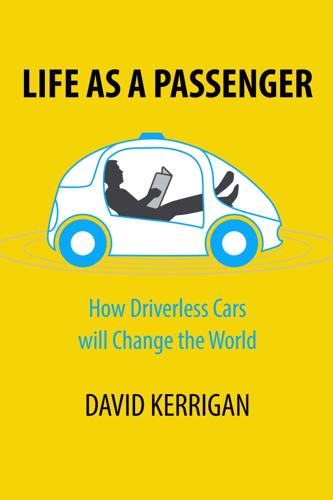
Life as a Passenger: How Driverless Cars Will Change the World
by
David Kerrigan
Published 18 Jun 2017
And then there’s the question of consumer acceptance, which is unlikely to be straightforward. These changes will save money for some. But one person’s savings are another’s lost income. People will likely need Netflix (the world’s largest streaming video subscription service) more than they’ll need insurance providers, or Minecraft (the world’s most popular computer game) more than they’ll need car repairs. Historically, technological advances have largely offset the job losses they’ve displaced in traditional industries with new opportunities. The change from artisanal to mass production brought a precipitous decline in the need for skilled workers, but at the same time gave rise to the importance of highly trained engineers and technicians, who would take growing responsibility for planning and managing the production process.
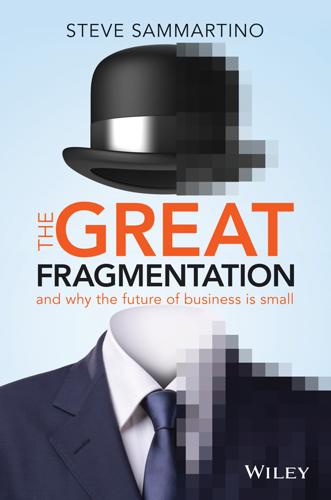
The Great Fragmentation: And Why the Future of All Business Is Small
by
Steve Sammartino
Published 25 Jun 2014
They’re the games we come back to and continue to play from where we left off. They’re the games that more closely represent our physical reality. They include the social nuances of life, human interactions and replications enhanced in a digital environment. This genre includes Farmville, Cityville, World of Warcraft and Minecraft, games during which we want to use digital tools and a virtual environment to create a better (yet virtual) reality for ourselves. While these two types of game seem differentiated and separate, they’re starting to overlap. The smartphone-based games are teaching us to use them to track physical movements, while the continued web-enabled game play is teaching us to shape environments based on social interaction and iteration.

Odd Girl Out: An Autistic Woman in a Neurotypical World
by
Laura James
Published 5 Apr 2017
You’re trying to understand the motives of people and – if you’re not good at getting into the minds of people and understanding them – then the special interest is a way of exploring your concern. ‘All special interests serve a function. It may be a sense of self-worth or a sense of identity because, if you’re good at Minecraft, then you’re valuable at school. And sometimes the interest can become a source of employment. There are a variety of reasons why the special interest is valuable for emotion management and also emotional understanding of the thoughts and feelings of other people. It is a thought blocker, a refresher.
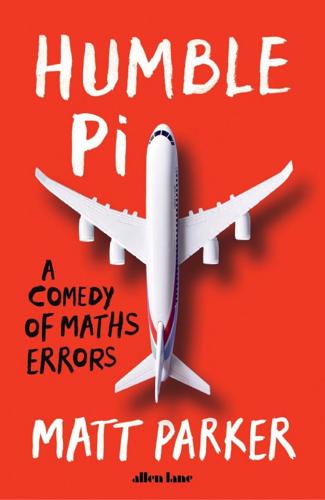
Humble Pi: A Comedy of Maths Errors
by
Matt Parker
Published 7 Mar 2019
If you’re in a WhatsApp group with 256 people (you and 255 friends) and you try to add a 257th person, you will simply be stopped from doing so. But given you’re pretty much claiming to have 255 better friends than them, they’re probably a tenuous enough associate that they’re not going to take it personally. The threat of a roll-over error is also why the game of Minecraft has a maximum height limit of 256 blocks. Which is an actual brick-wall solution. A different way to deal with roll-overs is to loop around so that 00000000 follows 11111111. This is exactly what happens in Civilization and on Swiss railways. But in both of those cases there were unintended knock-on effects.

New Dark Age: Technology and the End of the Future
by
James Bridle
Published 18 Jun 2018
One of them, as demonstrated in the surprise egg mashups, is a kind of keyword excess, cramming as many relevant search terms into a video title as possible. The result is what is known as word salad, a random sample from just a single channel reading, ‘Surprise Play Doh Eggs Peppa Pig Stamper Cars Pocoyo Minecraft Smurfs Kinder Play Doh Sparkle Brilho’; ‘Cars Screamin’ Banshee Eats Lightning McQueen Disney Pixar’; ‘Disney Baby Pop Up Pals Easter Eggs SURPRISE’; ‘150 Giant Surprise Eggs Kinder CARS StarWars Marvel Avengers LEGO Disney Pixar Nickelodeon Peppa’; and ‘Choco Toys Surprise Mashems & Fashems DC Marvel Avengers Batman Hulk IRON MAN’.6 This unintelligible assemblage of brand names, characters and keywords points to the real audience for the descriptions: not the viewer, but the algorithms that decide who sees which videos.

Artificial Unintelligence: How Computers Misunderstand the World
by
Meredith Broussard
Published 19 Apr 2018
The next layer to think about is another software layer: a program that runs on top of an operating system. A web browser (like Safari or Firefox or Chrome or Internet Explorer) is a program that allows you to view web pages. Microsoft Word is a word processing program. Desktop video games like Minecraft are also programs. These programs are all designed to take advantage of certain underlying features of the different operating systems. That’s why you can’t just run a Windows program on a Mac (unless you use another software program—an emulator—to help you). These programs are designed to seem very easy to use, but underneath they’re highly precise.
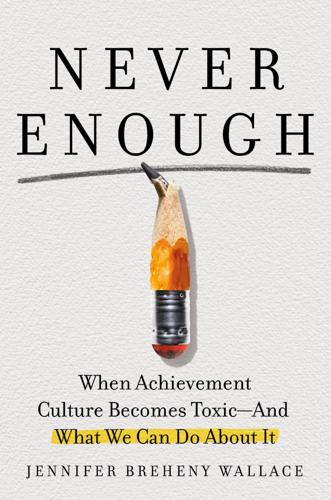
Never Enough: When Achievement Culture Becomes Toxic-And What We Can Do About It
by
Jennifer Breheny Wallace
Published 21 Aug 2023
All-star rankings in basketball, for example, now include the top fourth graders in the nation, and semiprofessional, specialized training starts as early as six years old. Music competitions, dance competitions, arts competitions, and even high school bands have become more demanding, if not all-consuming. It’s hard to find a hobby—Minecraft, mountain biking, macramé—that can’t be turned into an exhausting pursuit of excellence. As a joke, my son and I once googled “Rubik’s Cube competitions”—yep, they exist, too. Busy schedules inhale all downtime, sucking up the idle after-school hours or weekend days once spent with friends and family.
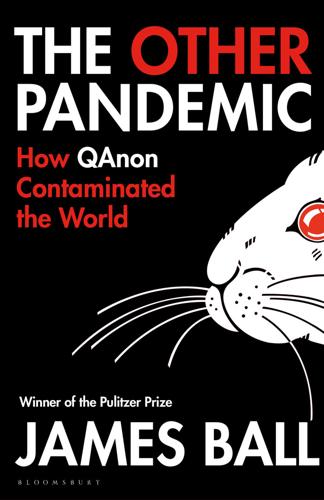
Other Pandemic: How QAnon Contaminated the World
by
James Ball
Published 19 Jul 2023
‘Emails in Anthony Weiner Inquiry Jolt Hillary Clinton’s Campaign’, www.nytimes.com, 29 October 2016. 42. Associated Press, ‘Leaked DNC emails reveal details of anti-Sanders sentiment’, www.theguardian.com, 24 July 2016. 43. ‘Pizzagate: How a 4chan conspiracy went mainstream’, www.newstatesman.com, 8 December 2016. 44. Brian Patrick Byrne, ‘Minecraft Creator Alleges Global Conspiracy Involving Pizzagate, a “Manufactured Race War,” a Missing Tabloid Toddler, and Holistic Medicine’, www.thedailybeast.com, 28 August 2017. 45. Joshua Gillin, ‘How Pizzagate went from fake news to a real problem for a D.C. business’, www.politifact.com, 5 December 2016. 46.
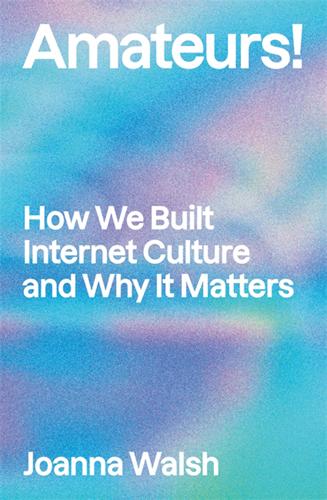
Amateurs!: How We Built Internet Culture and Why It Matters
by
Joanna Walsh
Published 22 Sep 2025
@pharmapsychotic, ‘CLIP Interrogator’, github.com, huggingface.co/spaces/fffiloni/CLIP-Interrogator-2. 9.Jameson, Postmodernism, p. 30. 10.Benjamin, ‘The Work of Art in the Age of Mechanical Reproduction’, p. 226. 11.Hélène Cixous, Coming to Writing (Harvard University Press, 1991), p. 104. 239 12.Will Douglas Heaven, ‘This Avocado Armchair Could Be the Future of AI’, MIT Technology Review, 5 January 2021. 13.sillysaurusx at Hacker News, 28 September 2023. 14.Melissa Heikkilä, ‘This New Data Poisoning Tool Lets Artists Fight Back Against Generative AI’, technologyreview.com, 23 October 2023. 15.Elaine Velie, ‘New Tool Helps Artists Protect Their Work from AI Scraping’, Hyperallergic, 30 October 2023. 16.Marco Donnarumma, ‘AI Art Is Soft Propaganda for the Global North’, Hyperallergic, 24 October 2022. 17.Andy Baio, ‘Exploring 12 Million of the 2.3 Billion Images Used To Train Stable Diffusion’s Image Generator’, waxy.org, 30 August 2022. 18.Hito Steyerl, ‘Mean Images’, New Left Review, nos. 140/141, March–June 2023. 19.Ibid. 20.Ben Zimmer, ‘Tasty Cupertinos’, languagelog.ldc, 11 April 2012. 21.Kyle Wiggers, ‘3 Big Problems with Datasets in AI and Machine Learning’, venturebeat.com, 17 December 2021. 22.Cecilia D’Anastasio, ‘Meet Neuro-sama, the AI Twitch Streamer Who Plays Minecraft, Sings Karaoke, Loves Art’, Bloomberg, 16 June 2023. 23.Ibid. 24.‘Google AI Ethics Co-Lead Timnit Gebru Says She Was Fired Over an Email’, Venture Beat. 25.Rachel Gordon, ‘Large Language Models Are Biased. Can Logic Help Save them?’, MIT News, 3 March 2023. 26.Rishi Bommasani, Drew A.
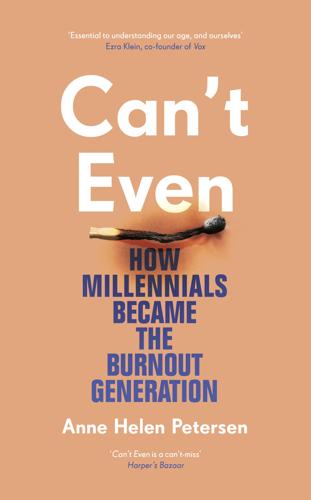
Can't Even: How Millennials Became the Burnout Generation
by
Anne Helen Petersen
Published 14 Jan 2021
Others provide the pleasure of collecting and categorizing, or incredible concentration and attention to detail, or harmony, literal and figurative, with others. Singing in a choir, that’s a hobby. So is a bowling league, a quilting circle, a running club. A video game can definitely be a hobby—especially community-building, strategy-refining games like Minecraft or The Sims. Some hobbies, especially ones involving exercise, double as a means to build aspirational capital. In most places in the country, being a person who downhill skis is to underline that you have the means to outfit yourself and pay for a hundred-dollar lift ticket. But many hobbies, especially ones related to craft, feel like throwbacks, cool only insomuch as they’re proudly uncool.
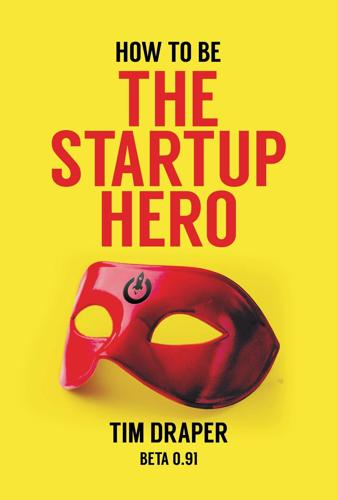
How to Be the Startup Hero: A Guide and Textbook for Entrepreneurs and Aspiring Entrepreneurs
by
Tim Draper
Published 18 Dec 2017
The Internet, marketplace, Bitcoin and AI are examples of some of these technological waves, which it turn have transformed industries and some of the companies associated with them. Industries transformed by the Internet: Information (Google), Shopping (Amazon), Communications (Skype), Entertainment (Netflix), Media (iTunes), Gaming (Minecraft), Community (Facebook) Industries transformed by the marketplace: Transportation (Uber), Hotels (Airbnb), Startups (AngelList), Workforce (Thumbtack), Lawyers (LawTrades), PR (PRx), Brokerage (Robinhood), Interior Decorating (Laurel and Wolf), Stock Market (Equidate, EquityZen), Cap Tables (eShares, Capshare), Gaming (Twitch) Industries transformed by Bitcoin: Currencies (Bitcoin), Government (Tezos), Contracts (Ethereum), Banking (Ripple), Real Estate (BenBen), Insurance (Augur), Finance (Bancor) Industries transformed by AI: Automotive (Cruise Automation), Identity (Neurala) In addition to the industries and transformations listed above, VR/AR promise to challenge education, drones will likely challenge surveillance, and Tesla will challenge utilities Understanding Trends It can also be a good exercise to study trends in and around your industry.

Laziness Does Not Exist
by
Devon Price
Published 5 Jan 2021
They both worked all day, Riley as a public-school elementary teacher and Tom at a science museum. At the end of the day, Riley would make time to tidy up the house, picking up empty food containers, sweeping the dirt by the front door, and throwing socks in the laundry. Tom would just flop onto the couch and play Minecraft. One evening, Riley came home late and found that Tom had left a pile of boxes on the kitchen counter. A bunch of Amazon orders had come in that day, and he’d torn open their packaging and left them in a heap. “I decided I was going to test him,” Riley says. “I wanted to see how long he would just let the boxes sit there if I didn’t say anything about them.”

Data Action: Using Data for Public Good
by
Sarah Williams
Published 14 Sep 2020
In the next chapter we will look at how collecting this data and repurposing it for urban analytics can generate policy change. HACK IT! USING DATA CREATIVELY The term hacker conjures up images that range from nefarious Russian spies trying to influence the United States elections to computer geeks sitting in their dorm rooms eating junk food and playing Minecraft. For many, hacking means following the hacker ethos, summarized in the preface of Hackers: Heroes of the Computer Revolution, by Steven Levy: “sharing, openness, decentralization, and getting your hands on machines at any cost to improve the machines, and to improve the world.” 1 Yet the Hacker Code of Ethics, as first documented in Levy's book, leaves ample room for interpretation.
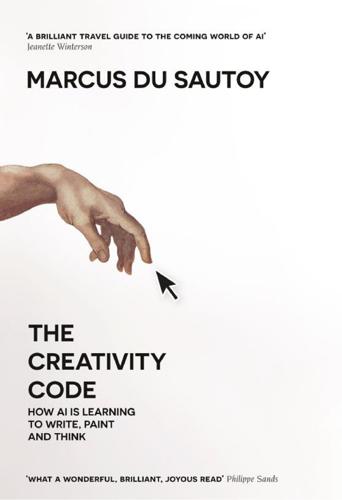
The Creativity Code: How AI Is Learning to Write, Paint and Think
by
Marcus Du Sautoy
Published 7 Mar 2019
Of course, human creativity extends beyond the arts: the molecular gastronomy of the Michelin-star chef Heston Blumenthal; the football trickery of the Dutch striker Johan Cruyff; the curvaceous buildings of Zaha Hadid; the invention of the Rubik’s cube by the Hungarian Ernö Rubik. Even the creation of code to make a game like Minecraft should be regarded as part of some of the great acts of human creativity. More unexpectedly creativity is an important part of my own world of mathematics. One of the things that drives me to spend hours at my desk conjuring up equations and penning proofs is the allure of creating something new.
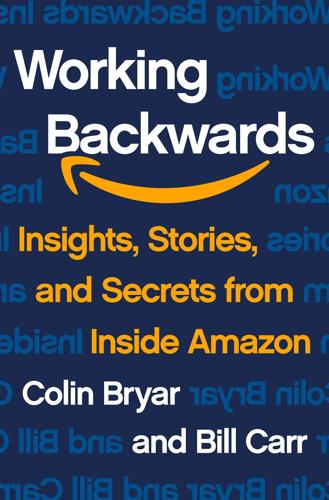
Working Backwards: Insights, Stories, and Secrets From Inside Amazon
by
Colin Bryar
and
Bill Carr
Published 9 Feb 2021
We love you all and you were a constant source of feedback and inspiration. To our children, Phoebe, Finn, Evan, and Maddox: your curiosity and insightful questions forced us to hone our message until it was concise and clear. And thanks for letting us use more than our fair share of the family computer at the expense of your Minecraft time. A special thanks to our parents, George and Cicely, Betty and Bill Sr. We would not be where we are today without your constant love and support along the way. You’ve been telling us since we were young that we could make a difference in the world and could do anything if we put our minds to it.

The Road to Conscious Machines
by
Michael Wooldridge
Published 2 Nov 2018
Roughly speaking, all a computer can do is follow lists of instructions such as the following:7 Add A to B If the result is bigger than C, then do D, otherwise, do E Repeatedly do F until G Every computer program boils down to lists of instructions similar to these. Microsoft Word and PowerPoint boil down to instructions like these. Call of Duty and Minecraft boil down to instructions like these. Facebook, Google and eBay boil down to instructions like these. The apps on your smart-phone, from your web browser to Tinder, all boil down to instructions like these. And if we are to build intelligent machines, then their intelligence must ultimately reduce to simple, explicit instructions like these.
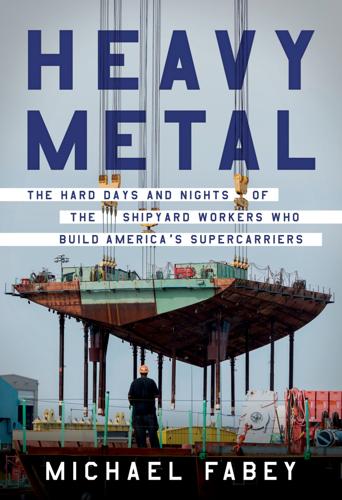
Heavy Metal: The Hard Days and Nights of the Shipyard Workers Who Build America's Supercarriers
by
Michael Fabey
Published 13 Jun 2022
Workers moved around, welded this, tightened that bolt, ran some wires—whatever they needed to do, digitally, as a dry run to see where problems might be, to discover what might work and what might not. Newport News managers thought the method promised to revolutionize the shipbuilders’ training. Little Ed understood that. The new digital realm helped train the youngsters coming out of the Apprentice School, who faced a harder time visualizing things not actually visible if they weren’t in Minecraft or something like that. The company could manipulate this newly created digital dockwork in the same way. But, kibitzing with his father and Lee Murphy during a gossip session outside the gates, Little Ed acknowledged, “I swear I was born in the wrong generation. Like older hands, you get stuck in your ways.
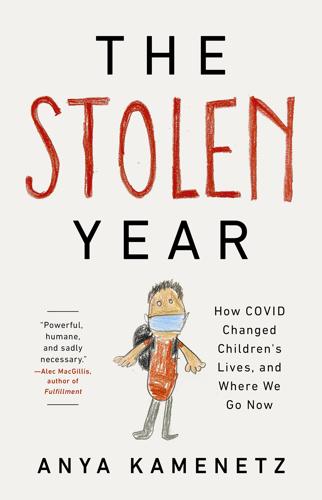
The Stolen Year
by
Anya Kamenetz
Published 23 Aug 2022
“Some young people—across race/ethnicity and social class—are thriving, freed from the drudgery of school,” Orellana writes. Children pursued their own interests, and not just in wealthy families. They picked up hobbies and crafts. They used YouTube to learn about whatever took their fancy. They explored and created worlds in Minecraft and Roblox. The platform Outschool exploded in use during the pandemic; it offered live video classes designed to cater to children’s obsessions, from frogs to fairies. The great loss, in Orellana’s view, was that schools rarely were equipped to collaborate with families in these explorations. They remained beholden to external metrics, like grade-level standardized tests in math and reading.
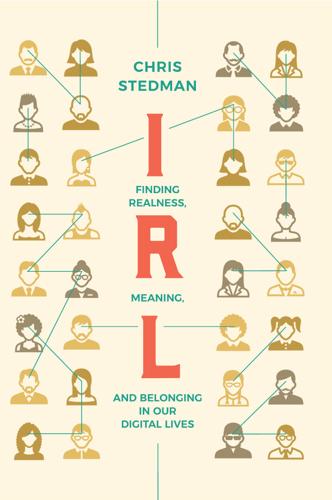
IRL: Finding Realness, Meaning, and Belonging in Our Digital Lives
by
Chris Stedman
Published 19 Oct 2020
Yet even though she had online games, the stress of living at home was eating away at Merisa. Sleep became increasingly evasive, and she would often get panic attacks. But one day, someone she knew from the chat rooms she’d frequented as a teen tweeted about a YouTube series in which people played Minecraft. Merisa found the videos soothing and discovered that watching them helped her fall asleep. Eventually she started talking with one of the women in the videos. After five years of chatting they became good friends, and eventually Merisa told her she was trans and planned to transition someday. After that, she became a confidante and resource, helping Merisa navigate and improve her relationship with her parents and even helping her get in voice practice over Skype.
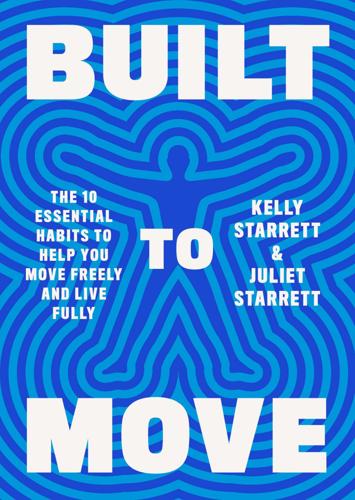
Built to Move: The Ten Essential Habits to Help You Move Freely and Live Fully
by
Kelly Starrett
and
Juliet Starrett
Published 3 Apr 2023
Soon enough, MobilityWOD had morphed into our present company, The Ready State, and we were working on movement and mobility with all branches of the military; NFL, NBA, MLB, and NHL players and coaches; Olympic athletes; university sports teams; Fortune 500 companies; individual CEO types; and thousands of others. But the thing about mobility that bears repeating is that it’s not just what enables the physically elite or the well-connected to perform at the top of their game. It’s what makes everybody perform at the top of their game—even if that game is Minecraft or Fortnite executed while nearly dormant in a chair. The practices that maximize mobility are the same for everyone. It turns out that what makes an elite athlete excel also makes a nonathlete a more agile, vital, and pain-free human being. And the great thing is, you hardly need to be an athlete to work mobility practices into your life.

The Quiet Damage: QAnon and the Destruction of the American Family
by
Jesselyn Cook
Published 22 Jul 2024
And to Jonah, his mother’s conspiracy theories weren’t claims to be evaluated—they were bonding opportunities. Kendra was obsessed with her YouTube videos and Jonah was obsessed with her, the way any little kid looked up to their mom or dad as a superhero. Tayshia could see it every time she was over at their house for pickups and dropoffs. While other second graders were surely at home playing Minecraft or watching SpongeBob, Jonah was studying the Deep State and its crooked cast of characters. He would snuggle into Kendra’s soft, warm embrace on the couch to watch whatever videos she had on, sometimes visibly frightened, while reflexively nodding and shaking his head when she did and parroting her commentary.

The Stack: On Software and Sovereignty
by
Benjamin H. Bratton
Published 19 Feb 2016
We could mark an ancestral trace from Yona Friedman's La Ville Spatiale to the new Asian smart cities such as New Songdo City (“a ubiquitous city,” says its brochure) in South Korea's Incheon development, or see Paolo Soleri's Arcology as a first pass at Masdar, the massive “green” smart city in Abu Dhabi. (Both Songdo and Masdar were built with Cisco and IBM as key partners.) Is Situationist cut-and-paste psychogeography reborn or smashed to bits by Minecraft? What binds the hyperlibertarian secessionism of the Seasteading Institute, which would move whole populations offshore to live on massive ships floating from port to port unmolested by regulation and undesired publics (Facebook funder Peter Thiel is a key funder) with Archigram's Walking City project from 1967, which plotted for Star Wars Land Walker–like city machines to get up and amble away to greener pastures as needed?
…
See also interfaces atmospheric, 91 boundary, 123, 150, 172, 289, 324 encrypted, 288 legal and physical, 149–150 partition, 2, 22, 379n9 porosity, 123, 140 of safety, 23 memorialization, 239–240 memory memories of, 262 of objects, 212, 215 requirements for using, 239–240 software eclipsing need for, 239–240 theological, 239–240, 297 mereological technology, 206 message queue telemetry transport (MQTT), 207 messages, restricting, 194 Messianism, mythopoetic political, 382n40 meta-addressing, 296 metadata for surveillance, 287 Metahaven, 127 metals, mining and trading in, 82–83 meta-metadata recursivity, 287 meta-User, 259 metroeconomics, 159–160 metroplexes, borders within, 311–312 Mexican drug cartels, 110 Mexico-United States border, 172–173, 308, 323, 409n42 microbial biome, 268 microeconomics, 127 microjurisdictions, ecological, 99–100 microplatforms, 289 micropolitics, architectural, 166–167 Microsoft, 128, 134 Excel, 162 Kinect, 226 Mies van der Rohe, Ludwig, 53 Miéville, China, 112 migrants cross-border, Apps for aiding, 173–176 ecological, 100–101 interiority/exteriority status, 173–175 intracountry, 310, 409n39 rural to urban, 409n39 military/civilian deployments, 325 millenarianism, 442n14 Millionth Map, 195, 413n5 Minecraft, 180 mining of coins, 337 data, 267 gold, 337 mineral resource extraction, 82–83, 93–94 and trading in electronics, 171 Mirowski, Philip, 439n65 mirror box installations, 151 mirror reflection of the self, 253, 264 mirror stage parable, 261 mobile devices. See also consumer electronics Agamben on, 174, 176 anatomy of, 238 autonomy of, 342–343 cameras, 236, 240 evolution-to-come, 171 growth in data from, 225 at hand, 168, 238 inert metals in, 82 interfaces, 164, 168–169, 237 phone-car interface, 280 as sensors, 342 virtual envelope of, 168–170 mobile ecology of interfaces, 237–238 mobility.

The Deep Learning Revolution (The MIT Press)
by
Terrence J. Sejnowski
Published 27 Sep 2018
DeepMind had shown in 2015 that temporal difference learning could learn to play Atari arcade games such as Pong at superhuman levels, taking the pixels of the screen as input.15 The next stepping-stone is video games in a three-dimensional environment. StarCraft is among the best competitive video games of all time. DeepMind is using it to develop autonomous deep learning networks that can thrive in that world. Microsoft Research recently bought the rights to Minecraft, another popular video game, and has made it open source so others could customize its three-dimensional environment and speed up the progress of its artificial intelligence. Playing backgammon and Go at championship levels is an impressive achievement, and playing video games is an important next step, but what about solving real-world problems?

Custodians of the Internet: Platforms, Content Moderation, and the Hidden Decisions That Shape Social Media
by
Tarleton Gillespie
Published 25 Jun 2018
Here is a representative but not exhaustive list of the social media platforms I think about, and that will be central to my concern in this book: social network sites like Facebook, LinkedIn, Google+, Hi5, Ning, NextDoor, and Foursquare; blogging and microblogging providers like Twitter, Tumblr, Blogger, Wordpress, and Livejournal; photo- and image-sharing sites like Instagram, Flickr, Pinterest, Photobucket, DeviantArt, and Snapchat; video-sharing sites like YouTube, Vimeo, and Dailymotion; discussion, opinion, and gossip tools like Reddit, Digg, Secret, and Whisper; dating and hookup apps like OK Cupid, Tinder, and Grindr; collaborative knowledge tools like Wikipedia, Ask, and Quora; app stores like iTunes and Google Play; live broadcasting apps like Facebook Live and Periscope.62 To those I would add a second set that, while they do not neatly fit the definition of platform, grapple with many of the same challenges of content moderation in platformlike ways: recommendation and rating sites like Yelp and TripAdvisor; exchange platforms that help share goods, services, funds, or labor, like Etsy, Kickstarter, Craigslist, Airbnb, and Uber; video game worlds like League of Legends, Second Life, and Minecraft; search engines like Google, Bing, and Yahoo. At this point I should define the term that I have already relied on a great deal. Platform is a slippery term, in part because its meaning has changed over time, in part because it equates things that nevertheless differ in important and sometimes striking ways, and in part because it gets deployed strategically, by both stakeholders and critics.63 As a shorthand, “platform” too easily equates a site with the company that offers it, it implies that social media companies act with one mind, and it downplays the people involved.

The Smart Wife: Why Siri, Alexa, and Other Smart Home Devices Need a Feminist Reboot
by
Yolande Strengers
and
Jenny Kennedy
Published 14 Apr 2020
Sara Wachter-Boettcher, Technically Wrong, Sexist Apps, Biased Algorithms, and Other Threats of Toxic Tech (New York: W. W. Norton, 2017). 59. See, for example, Hilary Bergen, “‘I’d Blush If I Could’: Digital Assistants, Disembodied Cyborgs and the Problem of Gender,” Word and Text 6 (December 2016): 95–113. 60. Dan Golding and Leena Van Deventer, Game Changers: From Minecraft to Misogyny, the Fight for the Future of Videogames (South Melbourne: Affirm, 2016). 61. C. Scott Brown, “Say Goodbye to M, Facebook’s Virtual Assistant,” Android Authority, January 8, 2018, https://www.androidauthority.com/goodbye-m-facebook-virtual-assistant-828558/; Barry Schwartz, “Microsoft Drops Ms.
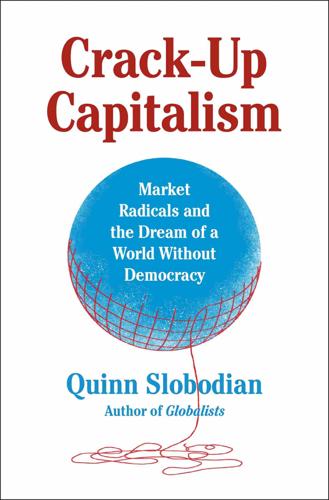
Crack-Up Capitalism: Market Radicals and the Dream of a World Without Democracy
by
Quinn Slobodian
Published 4 Apr 2023
“It can connect a thousand apartments, a hundred houses, and a dozen cul-de-sacs in different cities into a new kind of fractal polity with its capital in the cloud,” he wrote.29 Much of this already existed. It was possible to use third-party payment systems, open online bank accounts, and register businesses remotely. It was also possible to spend your entire waking day in immersive gaming worlds like Fortnite, Minecraft, or Roblox. Many did. The difference was what Srinivasan saw as the end goal: putting out the flag of the private company to declare membership in a different polity. Instead of simply being online, you would eventually start “crowdfunding” territory to establish a settlement somewhere on earth.30 Where this cloud country would be was never mentioned and there was little reason to think Srinivasan would avoid the pitfalls that had sunk so many other would-be founders of micronations in the past.

No Filter: The Inside Story of Instagram
by
Sarah Frier
Published 13 Apr 2020
Facebook was attempting to lure them with experimental side apps, without much traction. But Instagram had a great opportunity, because it was already full of young people. She focused on getting to know particular Instagram communities that skewed heavily young, like those for skateboarders and Minecraft enthusiasts, and the one centering around #bookstagram, the hashtag for talking about books. She would interview a community’s most popular members and then keep track of them on spreadsheets, noting how often they posted, what kind of content they chose, and if they were doing anything unique. If she thought she found a trend, she would urge someone at Instagram or Facebook to help her pull data to see if it was real.
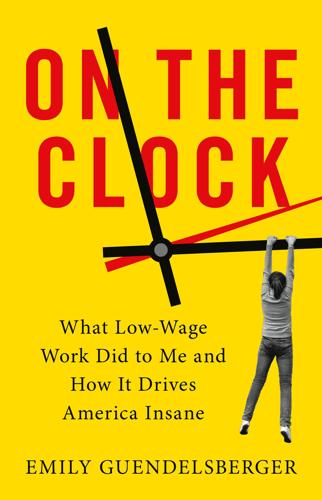
On the Clock: What Low-Wage Work Did to Me and How It Drives America Insane
by
Emily Guendelsberger
Published 15 Jul 2019
“Fuck your enormous bag of ping-pong balls.” “Fuck your angel communication journal.” “Fuck your feces-themed board game.” “Fuck your eco-friendly jeans.” “Fuck your Beautiful Celtic Dragonfly Zodiac Wall Clock by Brigid Ashwood.” “Fuck your shapewear.” “Fuck Derrida.” “Fuck your Michael Kors bag.” “Fuck Minecraft.” “Fuck your Alexander Del Rossa Women’s Super Plush Microfiber Fleece Bathrobe Robe.” “Fuck your fucking Amazon gift card—seriously, what kind of asshole orders an Amazon gift card off fucking Amazon?” There’s one outlier in the “fuck your” period—a very long recording in which, after recording my objections to a TARDIS throw blanket, I accidentally continue to record for a couple of hours.
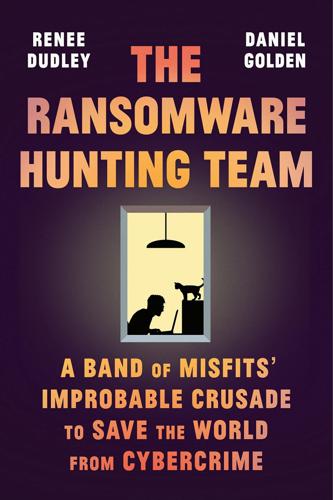
The Ransomware Hunting Team: A Band of Misfits' Improbable Crusade to Save the World From Cybercrime
by
Renee Dudley
and
Daniel Golden
Published 24 Oct 2022
Have a nice day:)” Daniel was determined to track down the hacker, who went by the name EvilTwin online. EvilTwin had made “dumb mistakes in operational security,” which allowed Daniel to trace his identity. On a beautiful fall Saturday afternoon, before heading outside to enjoy the North Carolina foliage, he reported his progress to the team. “Pretty much have this little kid and his Minecraft buddies all fully identified,” he wrote over Slack. “Names, and towns they live in. They are all like 15-16 as was pretty much expected.” He said that the skiddies—script kiddies—lived in Grafing, Germany, a small town near Munich. “Of course … Bayern,” Fabian replied, referring to the German state.

The Nature of Software Development: Keep It Simple, Make It Valuable, Build It Piece by Piece
by
Ron Jeffries
Published 14 Aug 2015
The load balancer can use the health check to tell if a machine has crashed, but it can also use the health check for the “go live” transition, too. When the health check on a new instance goes from failing to passing, it means the app is done with its startup. Wrapping Up Instances are the basic blocks that make up our system. They’re like cobblestone Minecraft blocks—not that interesting by themselves, but we can make amazing things out of them. If we do a good job of building code to run in instances, then we can make a solid large-scale structure. That means instances should be designed for production. We’ve seen how to make them deployable, configurable, and monitorable.
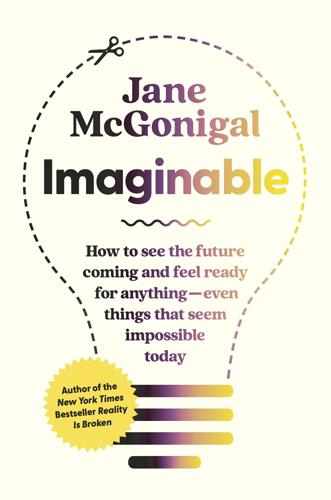
Imaginable: How to See the Future Coming and Feel Ready for Anything―Even Things That Seem Impossible Today
by
Jane McGonigal
Published 22 Mar 2022
The more divergent the reactions, the more we can learn from each other about what the future could or should be like. When I playtest a scenario, I also wait to see if someone has a surprising reaction, one that catches me off guard. In gaming, this is called “unintentional emergence”—when the players do something truly unexpected, like the Minecraft players who started re-creating ancient cities and building working roller coasters, guitars, and even quantum computers inside the virtual world. As a game designer, you look forward to these moments, because they mean you’re helping people express and increase their creativity. So when I collect reactions to future scenarios, I look out for surprises and then I keep adjusting the details of the scenario, the same way I would fine-tune the rules of a game, until I reliably see that spark of deep attention and creativity that tells me the future scenario is guiding people to a future worth imagining.

Underland: A Deep Time Journey
by
Robert Macfarlane
Published 1 May 2019
On the table is a blue-and-white china plate, Russian in its decorative style, showing a steam train emerging from a tunnel into winter fields. Two peasant figures walk by the trackside, carrying bundles of sticks on their backs, and the train trails a rooster-plume of steam that rises up into the blue dusk sky before bending back into the tunnel mouth. Jane and Sean’s two boys, Louis and Orlando, are playing Minecraft on a computer in a corner of the room. I go over to join them. They are mining hard, pickaxing down towards bedrock in search of precious minerals. ‘We don’t want redstone, we need obsidian,’ says Louis. ‘We want to fight the Ender Dragon!’ says Orlando. ‘We’re building a portal to the Nether!’
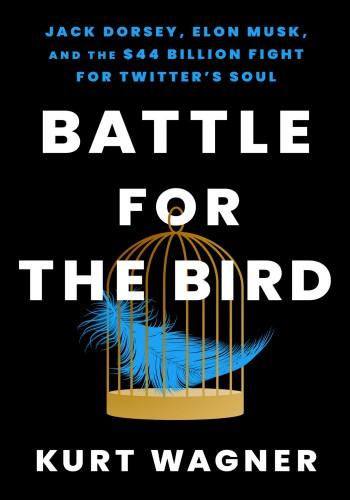
Battle for the Bird: Jack Dorsey, Elon Musk, and the $44 Billion Fight for Twitter's Soul
by
Kurt Wagner
Published 20 Feb 2024
Department of Defense: Senate Judiciary Committee and Zatko Peiter, Written Statement of Peiter (“Mudge”) Zatko § (2022), https://www.judiciary.senate.gov/imo/media/doc/Testimony%20-%20Zatko%20-%202022-09-13.pdf. a seventeen-year-old hacker from Florida gained access to some of Twitter’s most important accounts: Nathaniel Popper, Kate Conger, and Kellen Browning, “From Minecraft Tricks to Twitter Hack: A Florida Teen’s Troubled Online Path,” New York Times, August 2, 2020, https://www.nytimes.com/2020/08/02/technology/florida-teenager-twitter-hack.html. estimated that Dorsey said just fifty words to him: John N. Tye and Andrew P. Bakaj, “Whistleblower Report: Peiter ‘Mudge’ Zatko,” Whistleblower Aid, July 6, 2022, 53.

Terms of Service: Social Media and the Price of Constant Connection
by
Jacob Silverman
Published 17 Mar 2015
A person might value his online pseudonym—I still have a soft spot for the one I used for many years in various online role-playing and action games; he exists as a distinct character in my mind—precisely because it is a form of expression, bound to certain experiences. And indeed, handles, avatars, and the other raw ingredients of online identity have long been treated as types of expression and play, things to be tried on and cast off, manipulated and customized. Markus Persson, the creator of the enormously popular game Minecraft, is widely known as Notch, and the nickname is no less real or authentic because it originated online. His continued use of it, both online and off, only shows how much he values it. Our digital and offline lives are more intertwined than ever, and in some respects, that’s a good thing. These two worlds have never been fully separate.
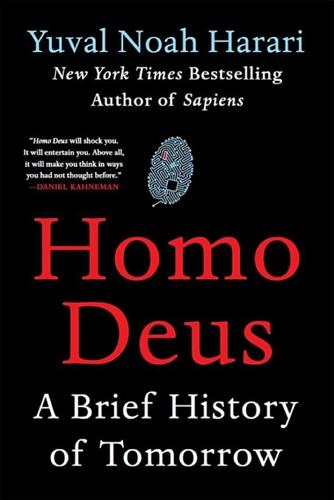
Homo Deus: A Brief History of Tomorrow
by
Yuval Noah Harari
Published 1 Mar 2015
In rare cases a pawn may be transformed into a queen, but you cannot produce new pawns, nor can you upgrade your knights into tanks. So chess players never have to think about investment. In contrast, many modern board games and computer games revolve around investment and growth. Particularly telling are civilisation-style strategy games, such as Minecraft, The Settlers of Catan or Sid Meier’s Civilization. The game may be set in the Middle Ages, in the Stone Age or in some imaginary fairy land, but the principles always remain the same – and they are always capitalist. Your aim is to establish a city, a kingdom or maybe an entire civilisation. You begin from a very modest base, perhaps just a village and its nearby fields.
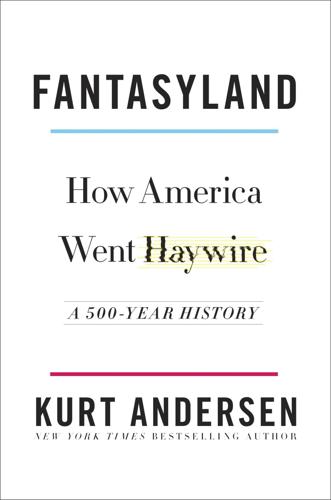
Fantasyland: How America Went Haywire: A 500-Year History
by
Kurt Andersen
Published 4 Sep 2017
There’s also the part that parodied the global sweatshop economy: American players started paying real money to low-wage workers in China, including labor camp inmates, to do online “gold farming” for them, the tedious game-world work that generates virtual currency. Today most American adults inhabit digital game worlds some of the time, and a quarter of those are so seriously engaged that they devote at least five hours a week to playing with the best set of blocks ever (Minecraft) or angsting and living and dying in some supernatural netherworld (Mortal Kombat, Final Fantasy) or on Earth in a realistically violent past (Assassin’s Creed), a realistically grotesque present (Grand Theft Auto), or a realistically ghastly future (Halo, Fallout, Call of Duty). Virtual reality is finally, actually here, and the gear costs no more than a smartphone or a game console.
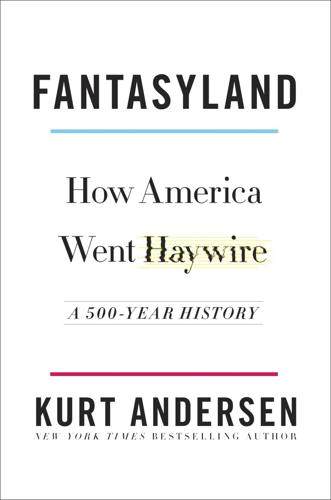
Fantasyland
by
Kurt Andersen
Published 5 Sep 2017
There’s also the part that parodied the global sweatshop economy: American players started paying real money to low-wage workers in China, including labor camp inmates, to do online “gold farming” for them, the tedious game-world work that generates virtual currency. Today most American adults inhabit digital game worlds some of the time, and a quarter of those are so seriously engaged that they devote at least five hours a week to playing with the best set of blocks ever (Minecraft) or angsting and living and dying in some supernatural netherworld (Mortal Kombat, Final Fantasy) or on Earth in a realistically violent past (Assassin’s Creed), a realistically grotesque present (Grand Theft Auto), or a realistically ghastly future (Halo, Fallout, Call of Duty). Virtual reality is finally, actually here, and the gear costs no more than a smartphone or a game console.